Succulents and cacti come in all shapes and sizes, making them the perfect plants for any garden. However, certain project and space restrictions may have you searching for the most diminutive succulents. Whether you're building a fairy garden, a living picture frame, or you just don't have much room, you have plenty of choices when it comes to small succulents.
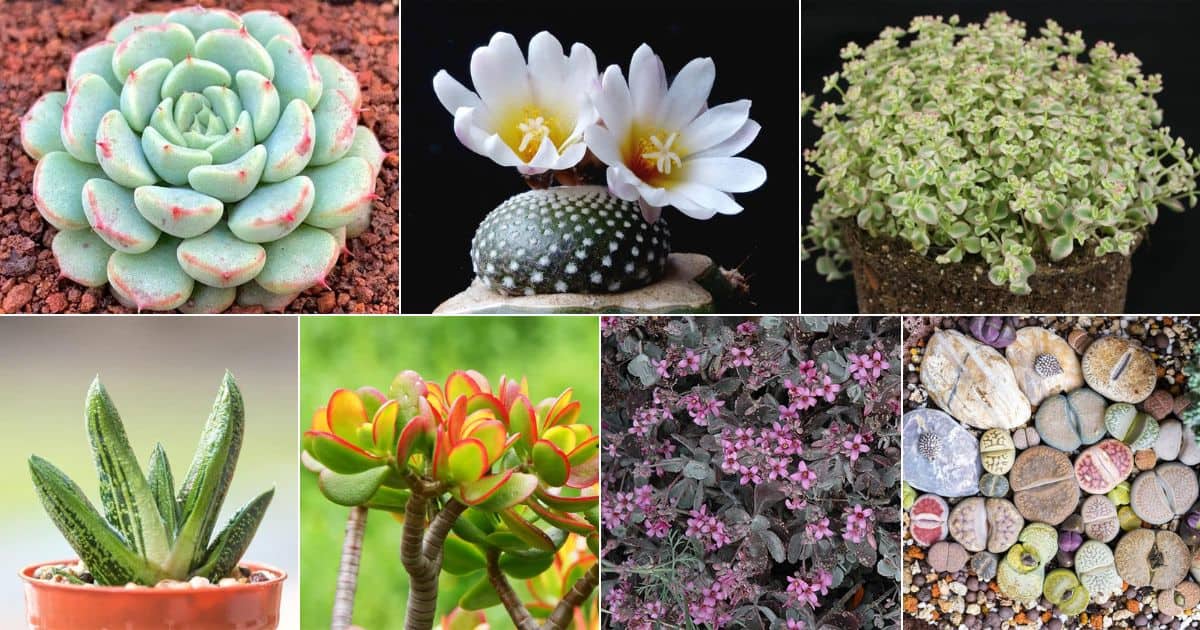
While some succulents can be trimmed to size, others are just naturally petite. No matter how much space you have to spare, these nine miniature succulents are sure to impress.
Mini succulents are all the rage when it comes to have small amounts of space. It’s hard to grow vast plants that take over an entire corner of already limited spaces. This is where mini succulents shine bright. Fortunately, with how diverse succulents are, there are quite a few that stay tiny.
Keep in mind that several tiny species may have fine tendrils that they grow on while others may mature into what is called a crested succulent if they have the right mutations. Even if a mini succulent crests, it will still stay its mini self.
So that you know, a mini succulent is one that is three inches in height and/or in diameter. These succulents are great to mix together to create beautiful mini landscapes! Another way these succulents got onto the list is that they also had to have rosettes that were still under five inches. Many of them follow the general requirements of any succulent. Just in case, I’ve included the general requirements for each species just in case they are a little more finicky.
As a quick review, when we talk about hardiness here, what I mean is that during the winter in any other zone, succulents will either need to stay inside (for example, Alaska) or be brought inside during the winter.
Jump to:
- The Best Mini Succulents
- Aloe descoingsii x hawarthioides
- Aloinopsis
- Anacampseros
- Astrophytum
- Blossfeldia Liliputania
- Copiapoa
- Crassula
- Echeveria
- Echinopsis
- Euphorbia
- Fenestraria
- Gasteria
- Graptopetalum
- Gymnocalycium
- Haworthia
- Lithops
- MCG
- Mammilaria
- Orostachys spinosa f. minuta
- Rosularia platyphylla
- Sedeveria Blue Elf
- Sedum
- Sempervivum
- Titanopsis Calcarea
- Sempervivum ‘Little Bobo’
- Kalanchoe pumila ‘Flower Dust Plant’
- Crassula ovata ‘Baby Jade’
- Gasteria ‘Little Warty’
- Mini Succulents FAQs
- Conclusion
The Best Mini Succulents
A
Aloe descoingsii x hawarthioides
Pepe
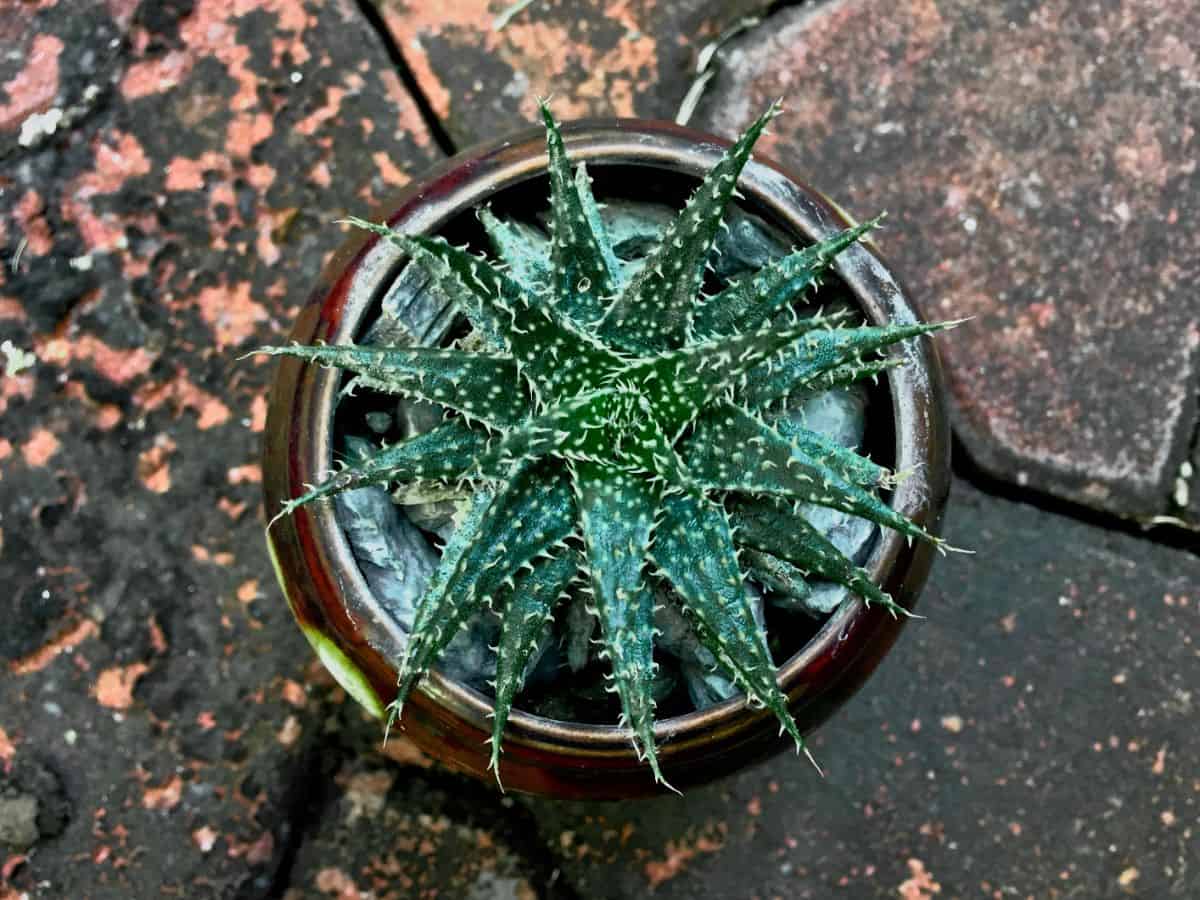
Buy it from:
To my knowledge, this is the only aloe plant that stays below three inches tall. It stays below three inches around as well, so it definitely doesn’t take up that much space. The leaves are dark green with white spines along them. Hardiness is at a 10, and they take filtered or bright indoor light.
Aloinopsis
This family is a group of winter-dormant and winter-blooming species. They are known for their interesting wart-like growths, which vary from hairy to pronounced, like a mature wart. Some species are called concrete plants, while others are called Jewel plants. The following three are those that tend to stay the shortest in any conditions.
Luckhoffii
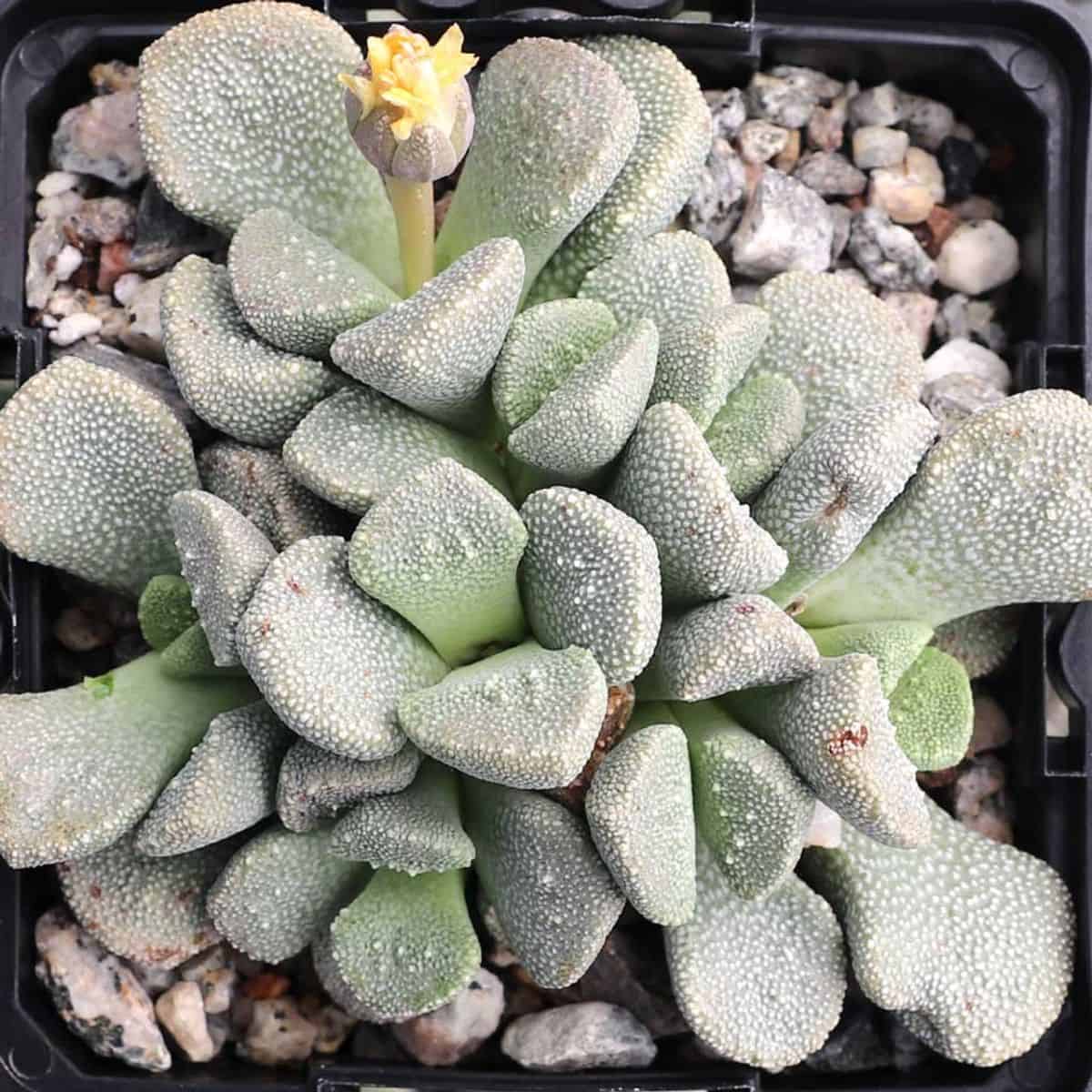
Buy it from:
Hardiness: 10
Light Requirements: Full sun (direct indoor light)
Common Name: None
Malherbei
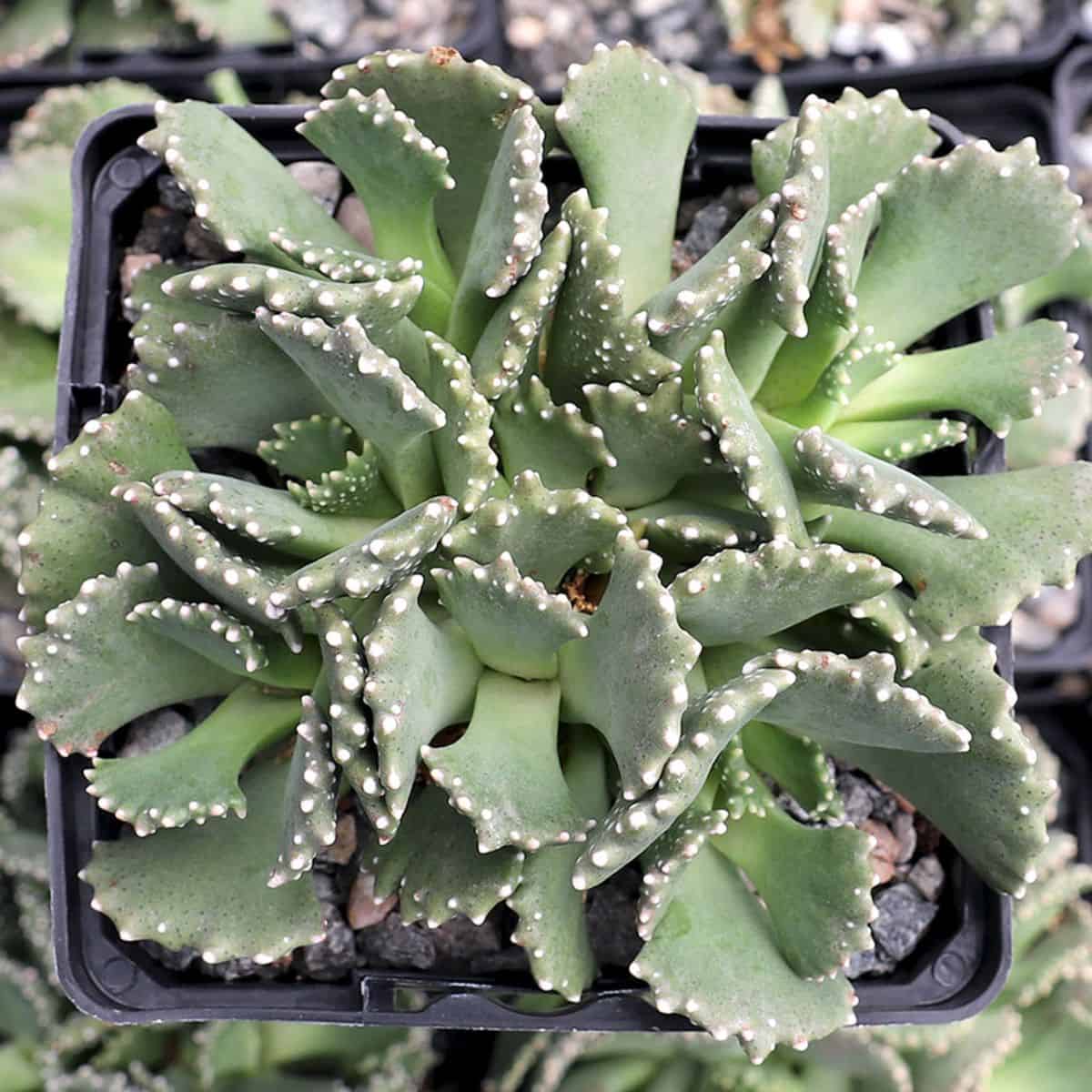
Buy it from:
Hardiness: 10
Light Requirements: Full sun (direct indoor light)
Common Name: Giant Jewel Plant
Rosulata
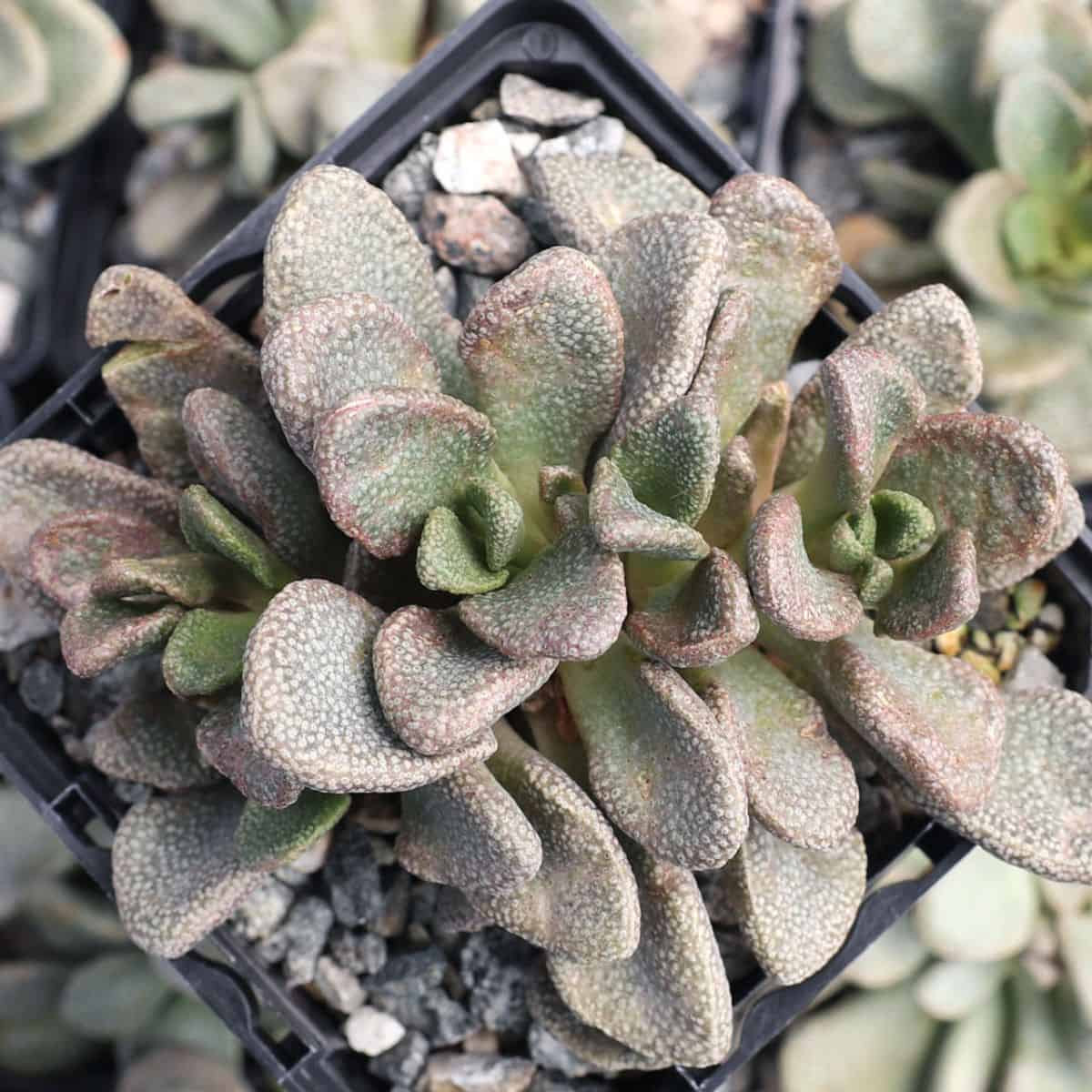
Buy it from:
Hardiness: 10
Light Requirements: Full sun (direct indoor light)
Common Name: None
Anacampseros
This family is characterized by pleasantly plump leaves that take on more angular tear-drop shapes. Some of them are characteristically duo-toned. Red and purple colors are the most prominent in this summer dormant
Rufescences
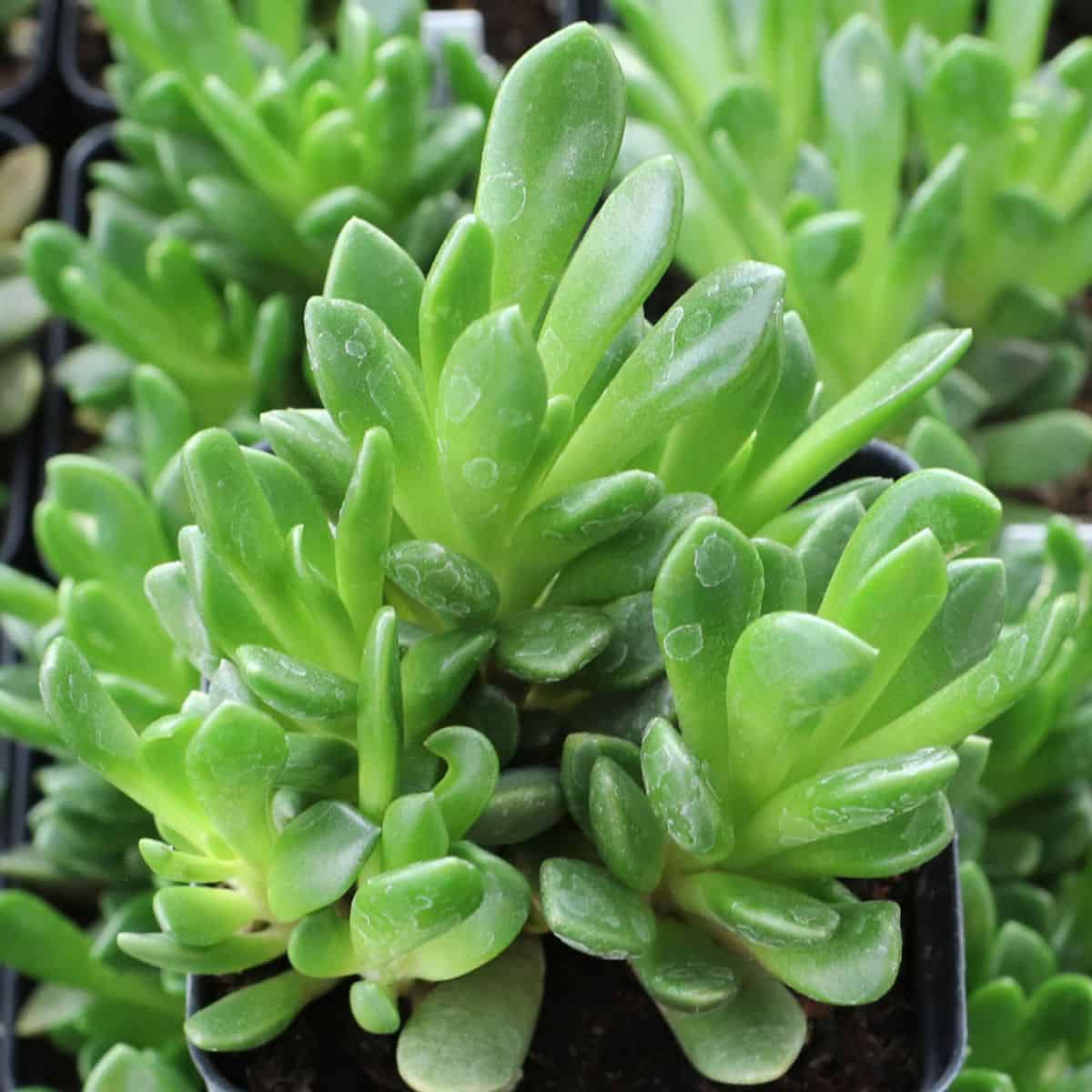
Buy it from:
Hardiness: 9 - 10
Light Requirements: Full sun to some shade
Common Name: Sand Rose
Astrophytum
These round, almost sea urchin-like little characters are adorable, to say the least. Some have puffs of spines that look like fur, while others are coated in light fur. They can get up to almost five feet tall, and all of them maintain either a columnar or spherical shape
Asterias
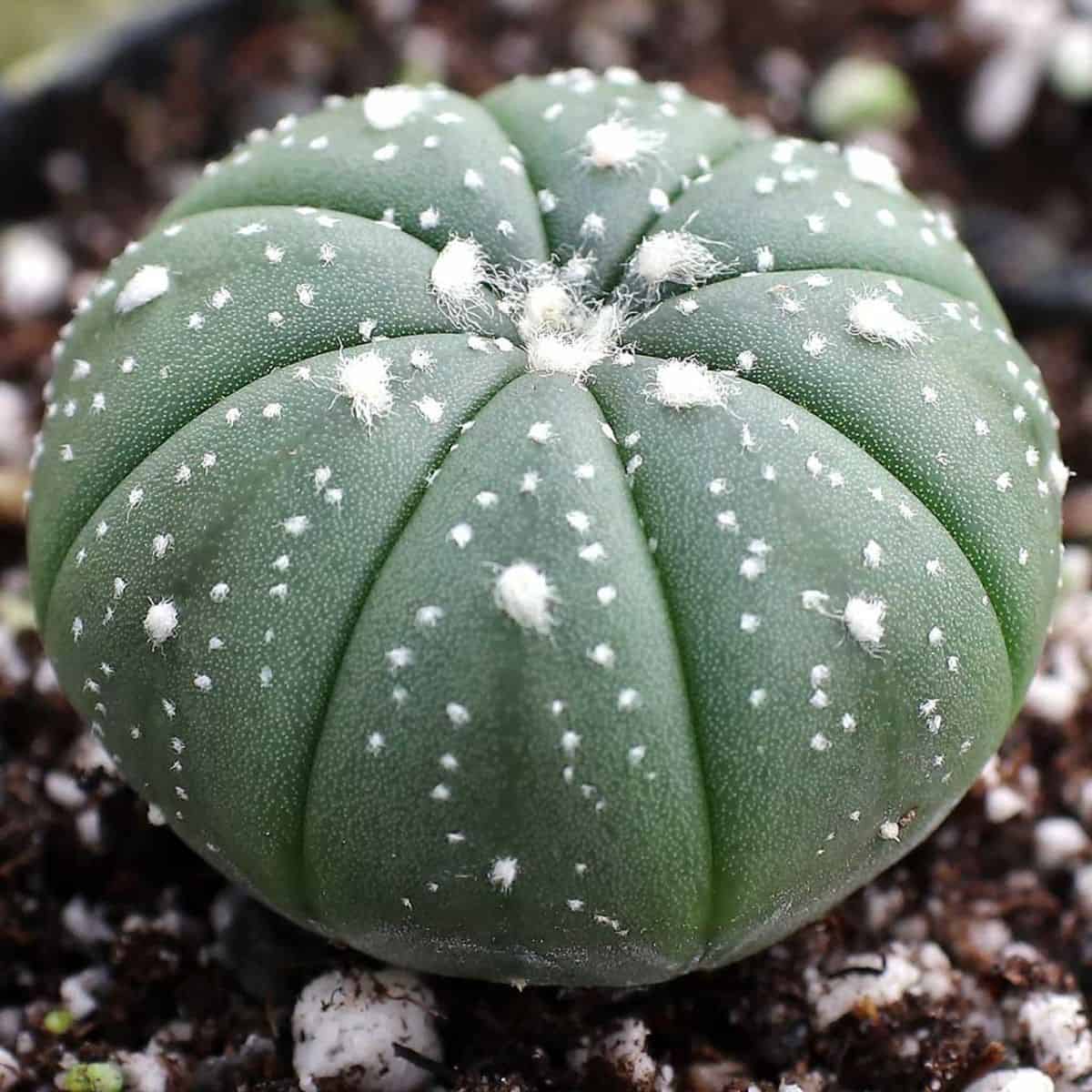
Buy it from:
Hardiness: 10
Light Requirements: Indirect full sun or bright indoor light
Common Name: Sand Dollar Cactus
B
Blossfeldia Liliputania
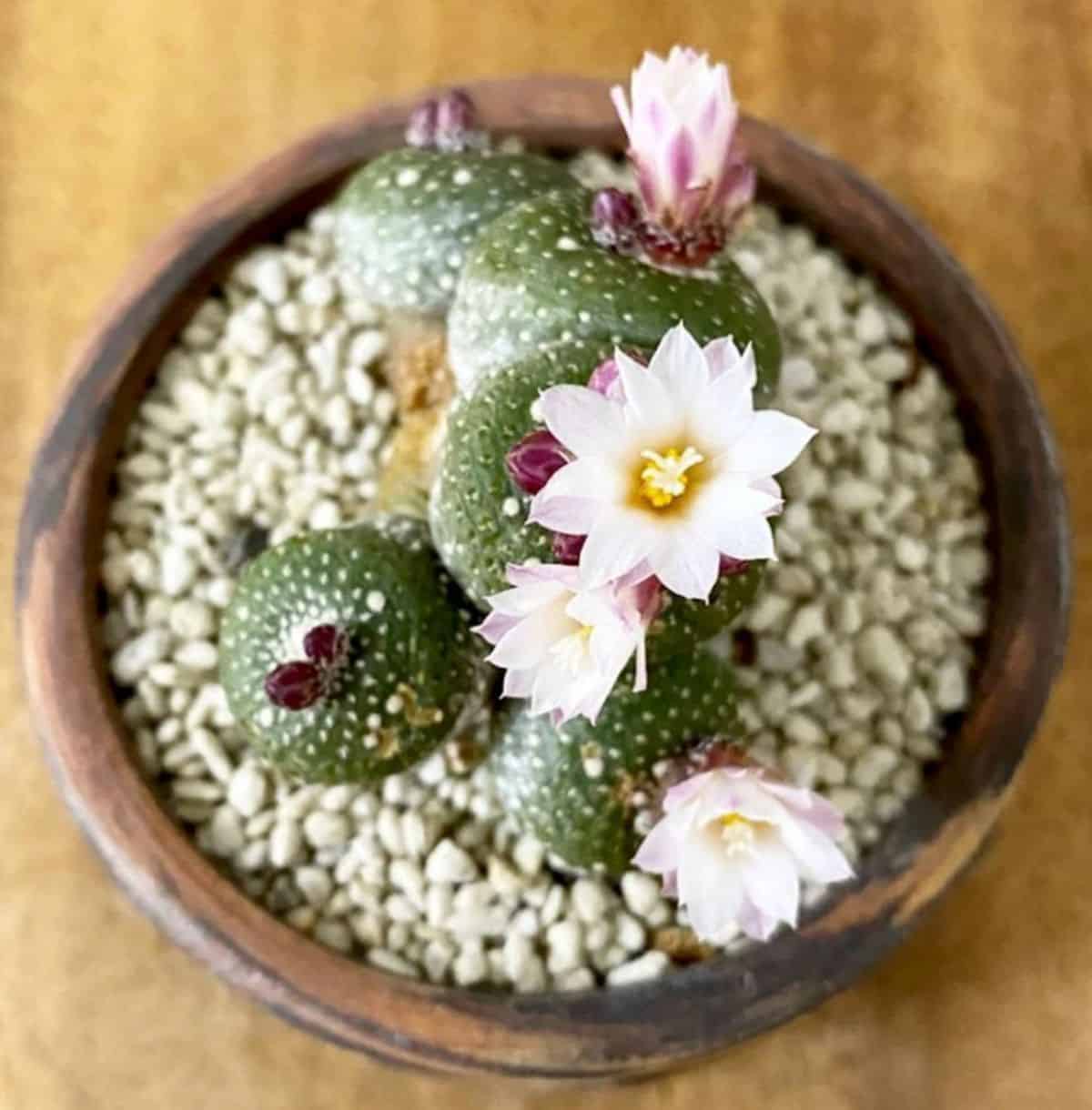
Buy it from:
This species is the smallest species that we know of to date. It only gets 1.5 inches wide and stays the same height! The flowers dwarf the stem itself by almost an inch. It can be rather comical!
Hardiness: 10
Light Requirements: Some shade
Common Name: None
C
Copiapoa
This genus is well known for its interestingly bumped spines. Each nodule of the spines creates a round bump on the spines. The top of each clumping stem is fuzzy, and the genus generally produces yellow, tubular flowers. They are also dormant in the summer, so make sure you watch them carefully!
Humilis
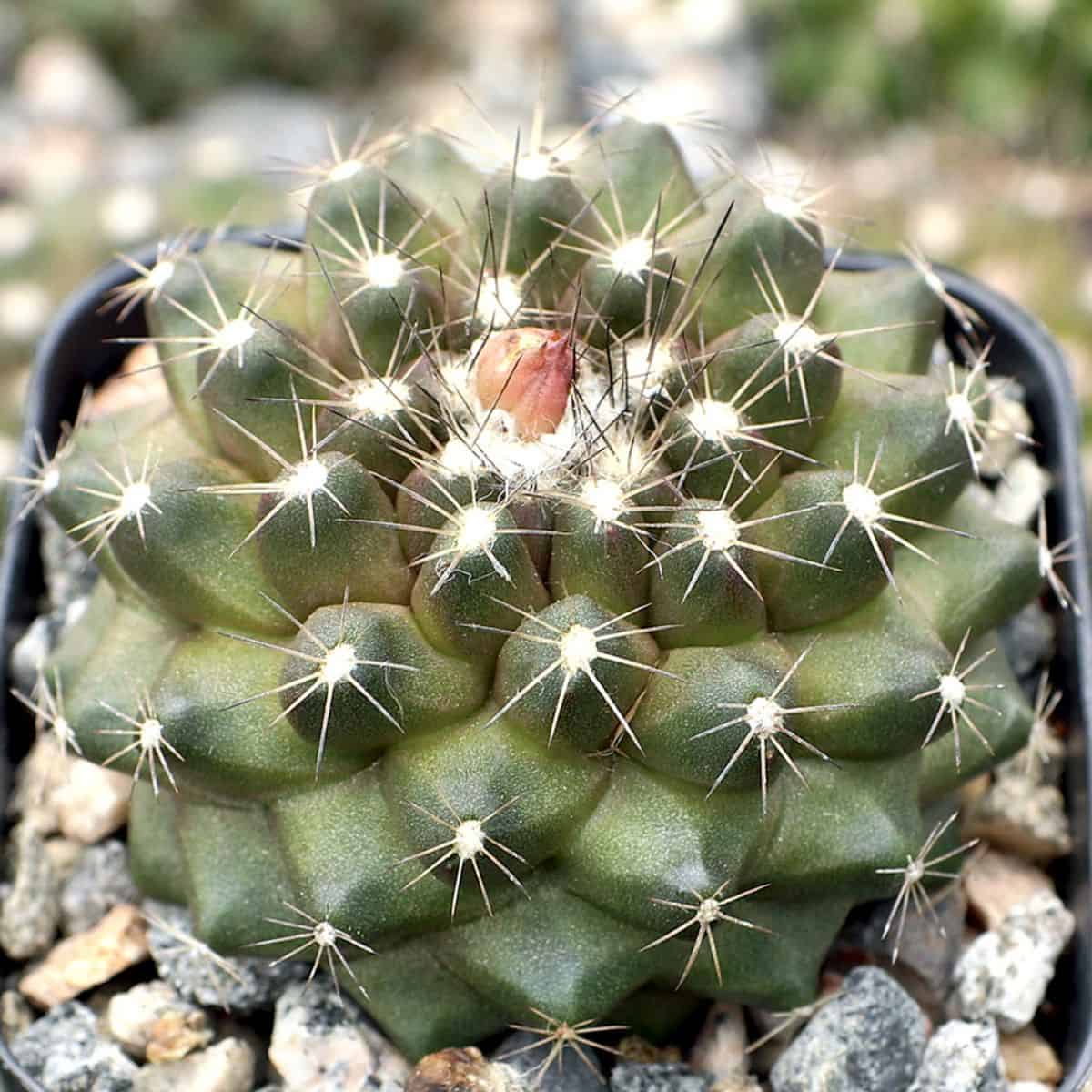
Buy it from:
Hardiness: 10
Light Requirements: half sun or full sun with enough airflow to cool the leaves
Common Name: Copiapoa
Crassula
Crassulas have a wide variety of species. From the taller Jade trees to the smaller ground cover types, crassulas like Baby’s Necklace, the leaves come in two interesting shapes: full, angular, and furved, or flattened and spoon-like. Crassulas are also summer dormant.
Deceptor x susannae
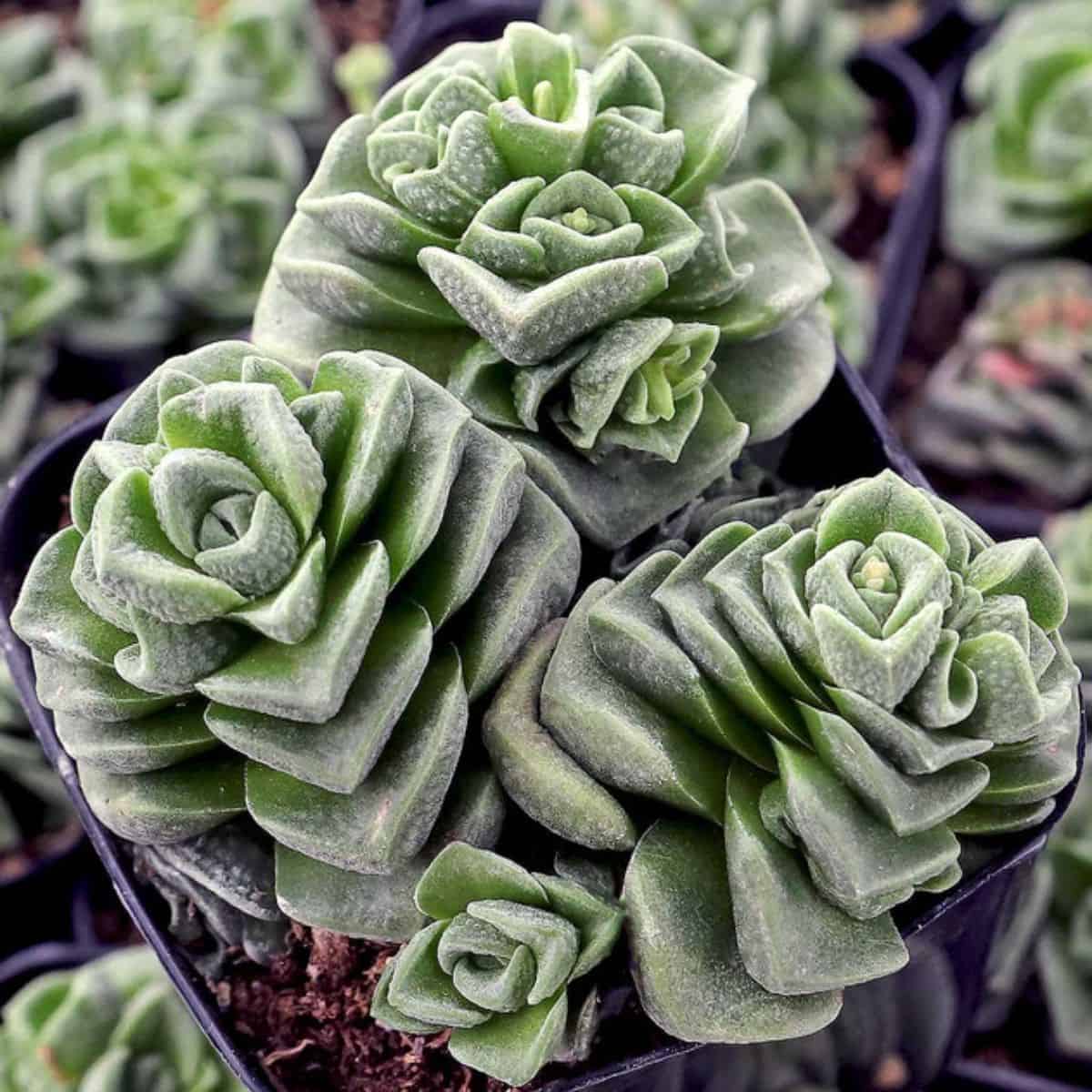
Buy it from:
Hardiness: 10
Light Requirements: Indirect full sun
Common Name: Dorothy
Petite Bicolor
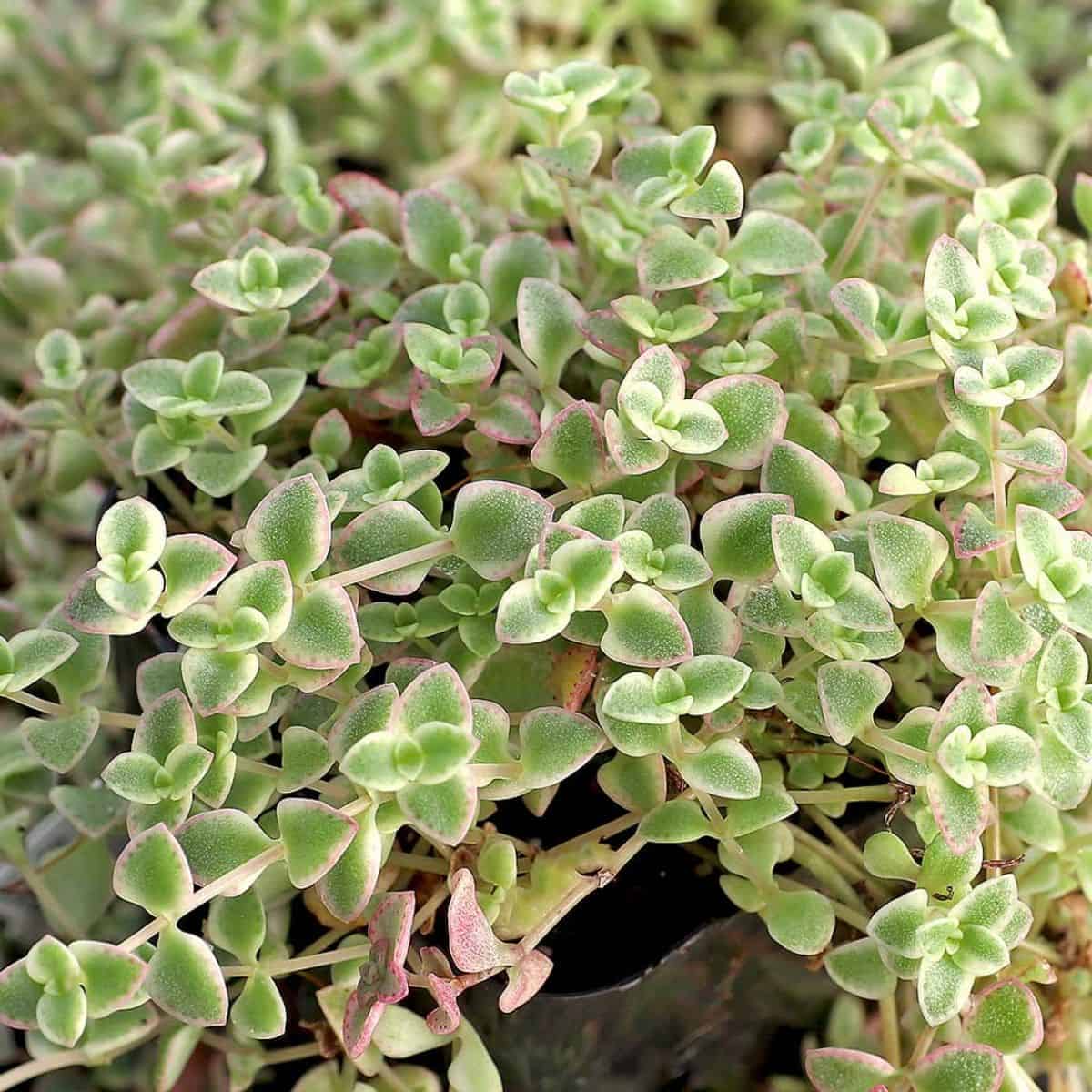
Buy it from:
Hardiness: 8 - 10
Light Requirements: Filtered sun
Common Name: Little Missy
E
Echeveria
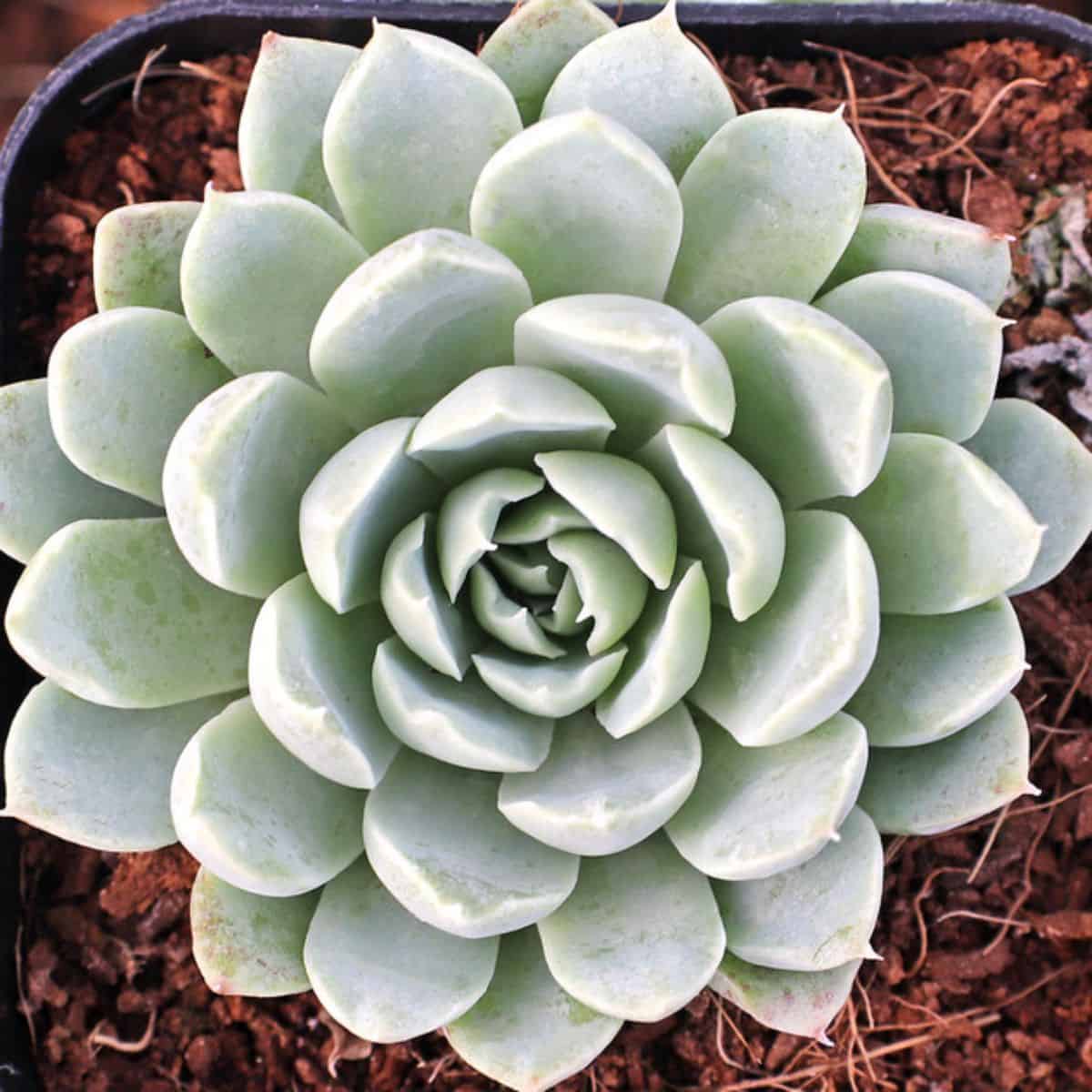
Buy it from:
Echeveria’s are one of the most varied and hybridized types of succulents out there. When succulents first became a thing with the millennial generation, the most common succulent for everyone to start with was the popular hens and chicks. From then, the plants have been hybridized for fuzziness, sharpness, color variation, and more. Some of them are truly stunning especially when they are dormant in the winter.
The fortunate thing about echeverias is that the majority of them have the same hardiness zones, light needs, watering needs, and, well pretty much everything.
Hardiness: 10
Light Needs: can tolerate some shade
● Albicans Whitening
● Atlantis or Peaches an Cream
● Bambino
● Bradburiana
● Briar Rose
● Brown Rose
● Chrissy n Ryan
● Cris
● Dionysos
● Elegans - Kesselringiana
● Elegans – Mexican Snowball
● Fabiola
● Lara
● Lime n’ Chile
● Minima
● Morning Beauty
● Phyllis Collis
● Pinwheel
● Pulidonis
● Ramillete
● Runyonii
● Satosa var. minor
● Setosa
● Shaviana
● Stella Blanc
● Tippy
● Tolucensis
● Wilderness
Echinopsis
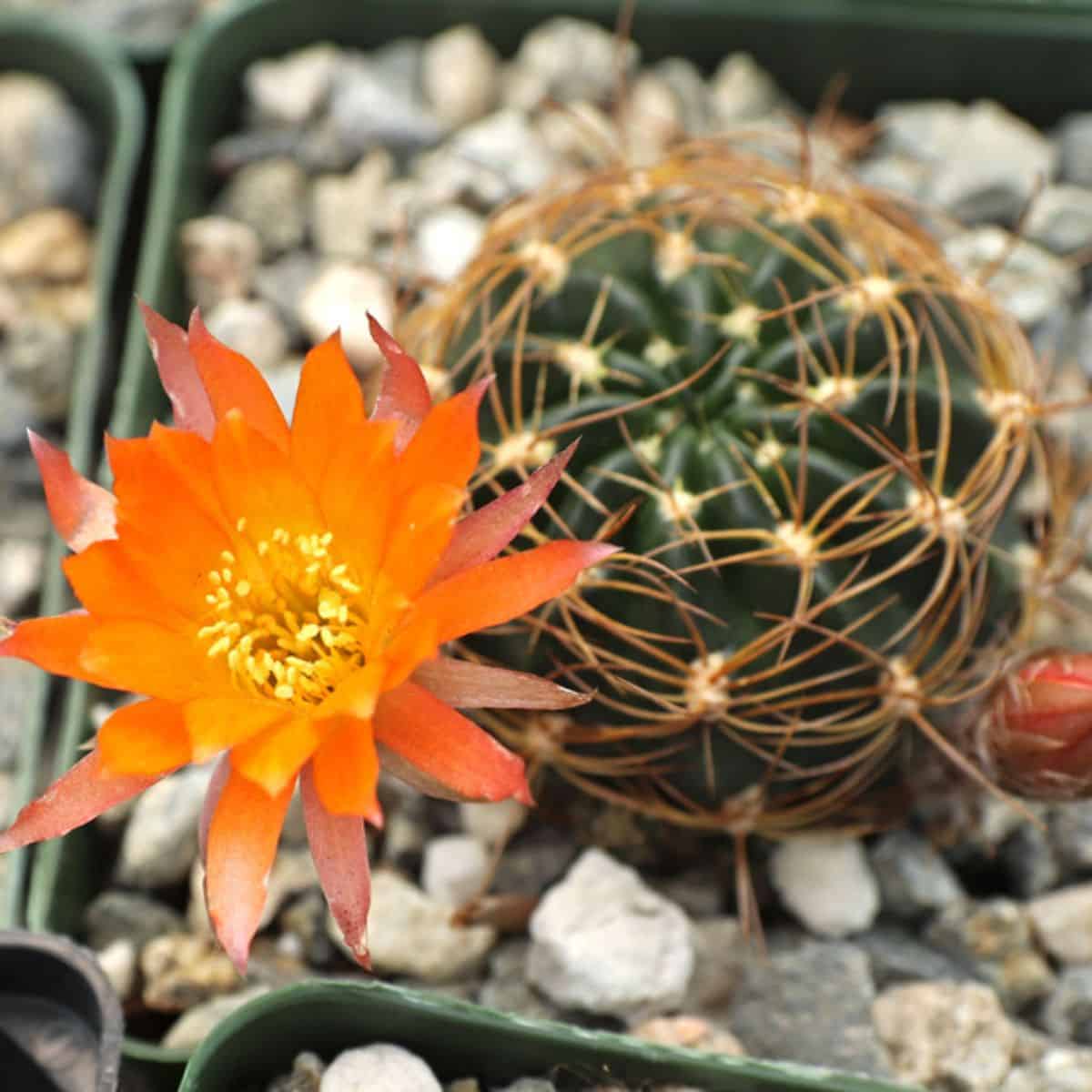
Buy it from:
This gorgeous family of heavily blooming cacti are winter dormant. During the summer, they require a little more water to support their growth and blooms. Different species in this genus are called the hedgehog cactus, Easter lily or even the sea urchin cactus.
Many in this species have similar needs and those included here have the same requirements and oddly enough, no common names.
Hardiness: 10
Light Requirements: Indirect full sun or direct indoor light
● Ancistrophora ssp. Torrecillasensis
● Backebergii ssp. Wrightiana
● Hertrichiana
● Tiegeliana var. pusilla
Euphorbia
Euphorbia’s are a particularly interesting genus of succulent. They look ridiculously similar to a cactus, but they have a few defining characteristics. Their sap is related to latex and much like others in this genus (like poinsettias), the sap can be very caustic to your skin. It is an incredibly massive genus that contains trees, bushes, succulents, and other flowering types of plants.
Monstrose
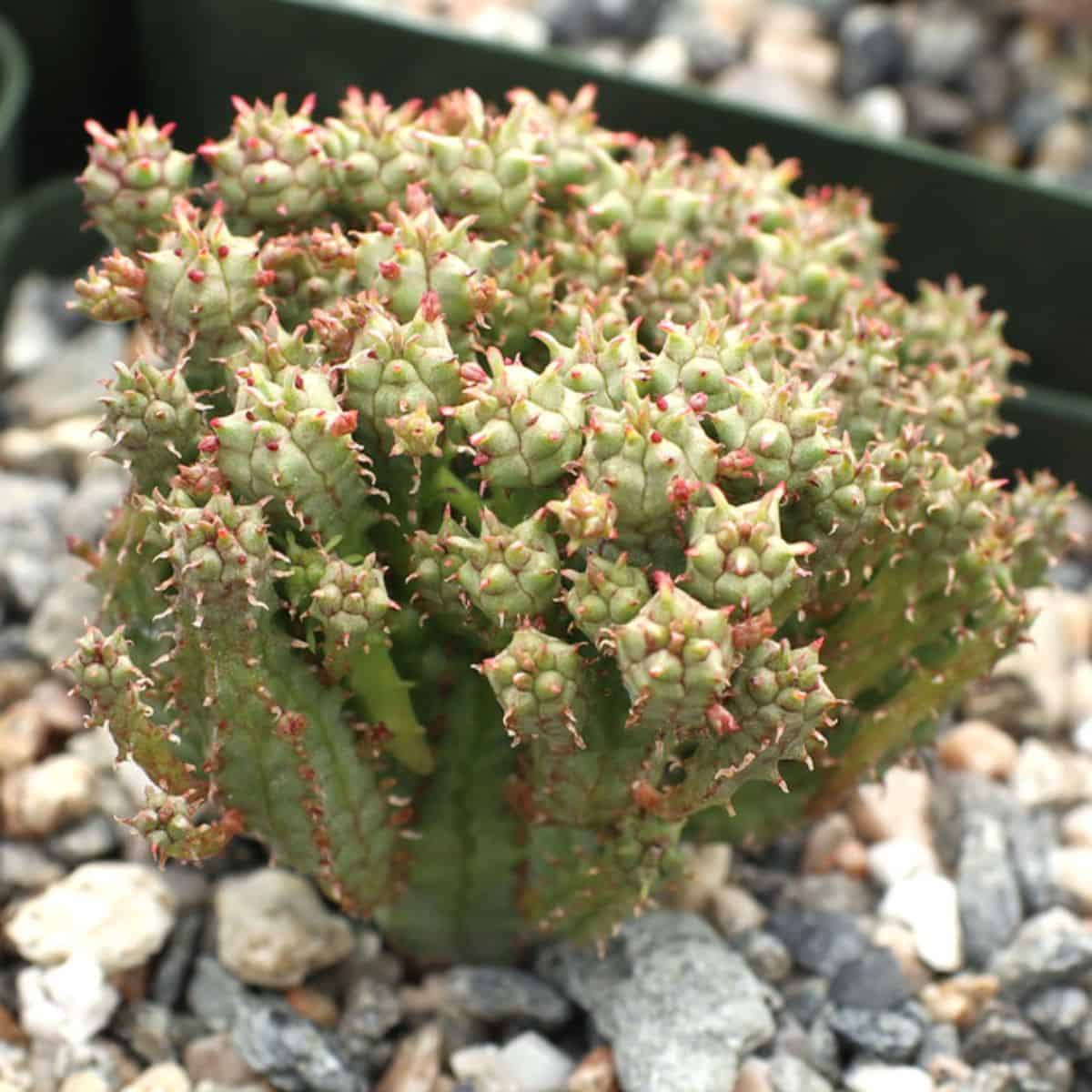
Buy it from:
Hardiness: 10
Light Requirements: Indirect full sun, or direct indoor light
Common Name: None
Dormancy: Winter Dormant
F
Fenestraria
With a name that literally relates to the Latinate word fenestra, which means window, you can’t help but expect some transparency in the stem. If you have ever seen a Haworthia cooperi, then you have seen this window-like quality that fenestrarians have. The tip of each little ‘toe’ is translucent! This provides a perfect mirror into the center of the cactus. The thought is that this occurs thanks to the need for additional sunlight to reach the chlorophyll along the thicker skin along the stem.
Rhopalophylla
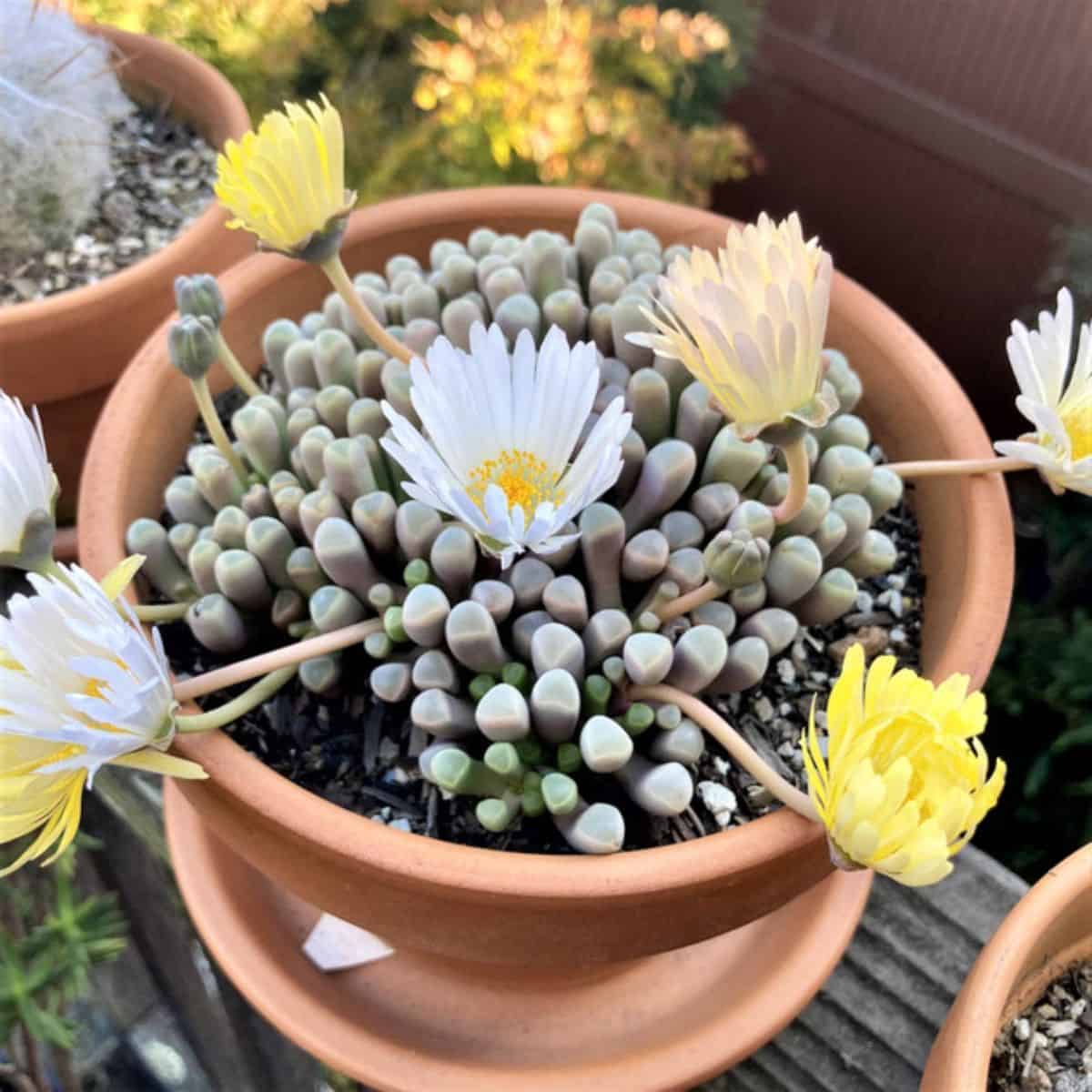
Buy it from:
Hardiness: 10
Light Requirements: Indirect full sun, direct indoor light
Common Name: Baby Toes
Dormancy: Summer Dormant
G
Gasteria
I know I say that I really love so many different species (I know I have a lot of favorites for sure). Gasterias, as a genus, are at the top for me. They are characteristically rough feeling leaves that alternate in a parallel pattern. They are incredibly varied and more often than not, have some sort of unique texture and variegation. They are summer dormant so be sure to maintain regular watering during the winter season.
Fuji Yuki
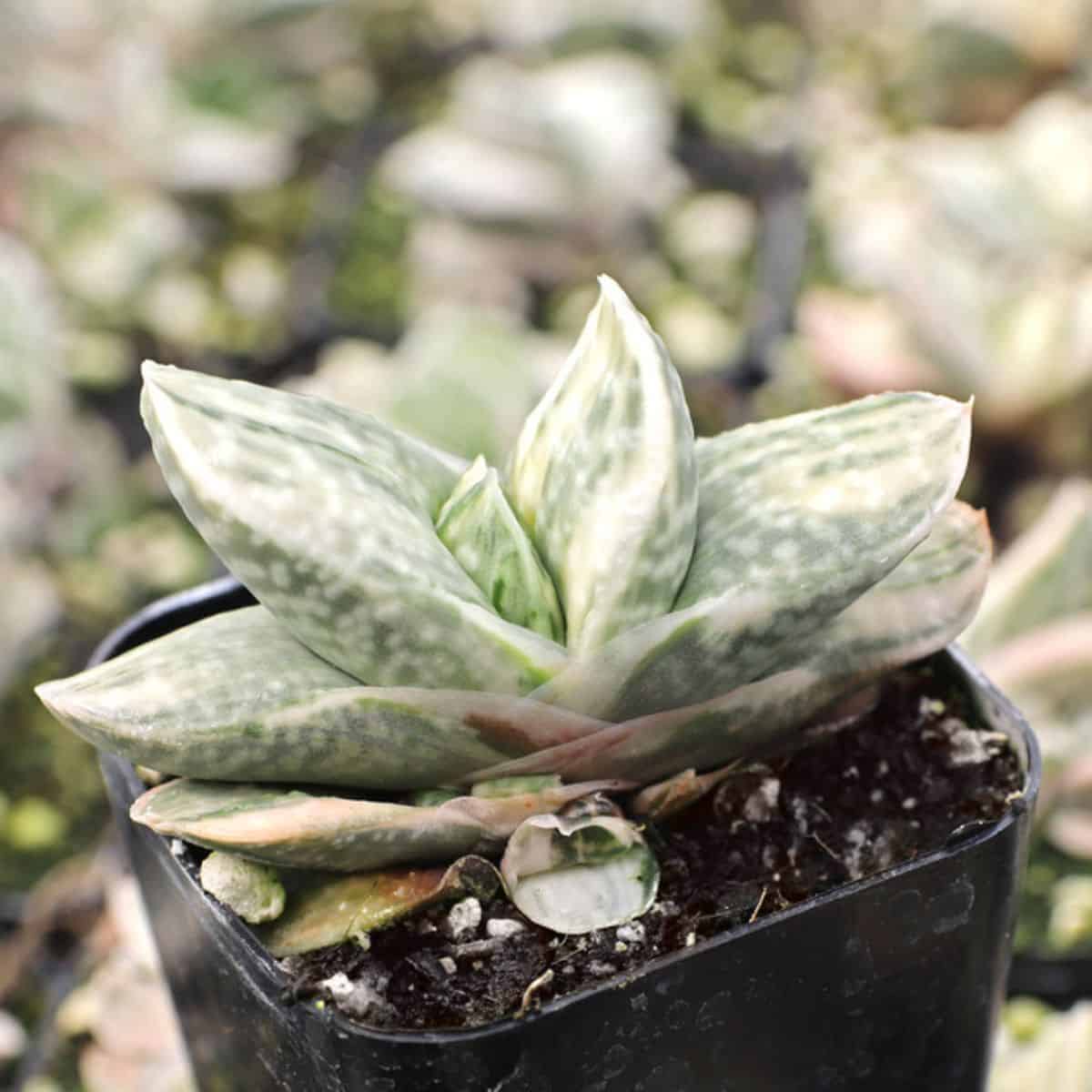
Buy it from:
Hardiness: 10
Light Requirements: Filtered light
Common Name: None
Bicolor var. liliputana
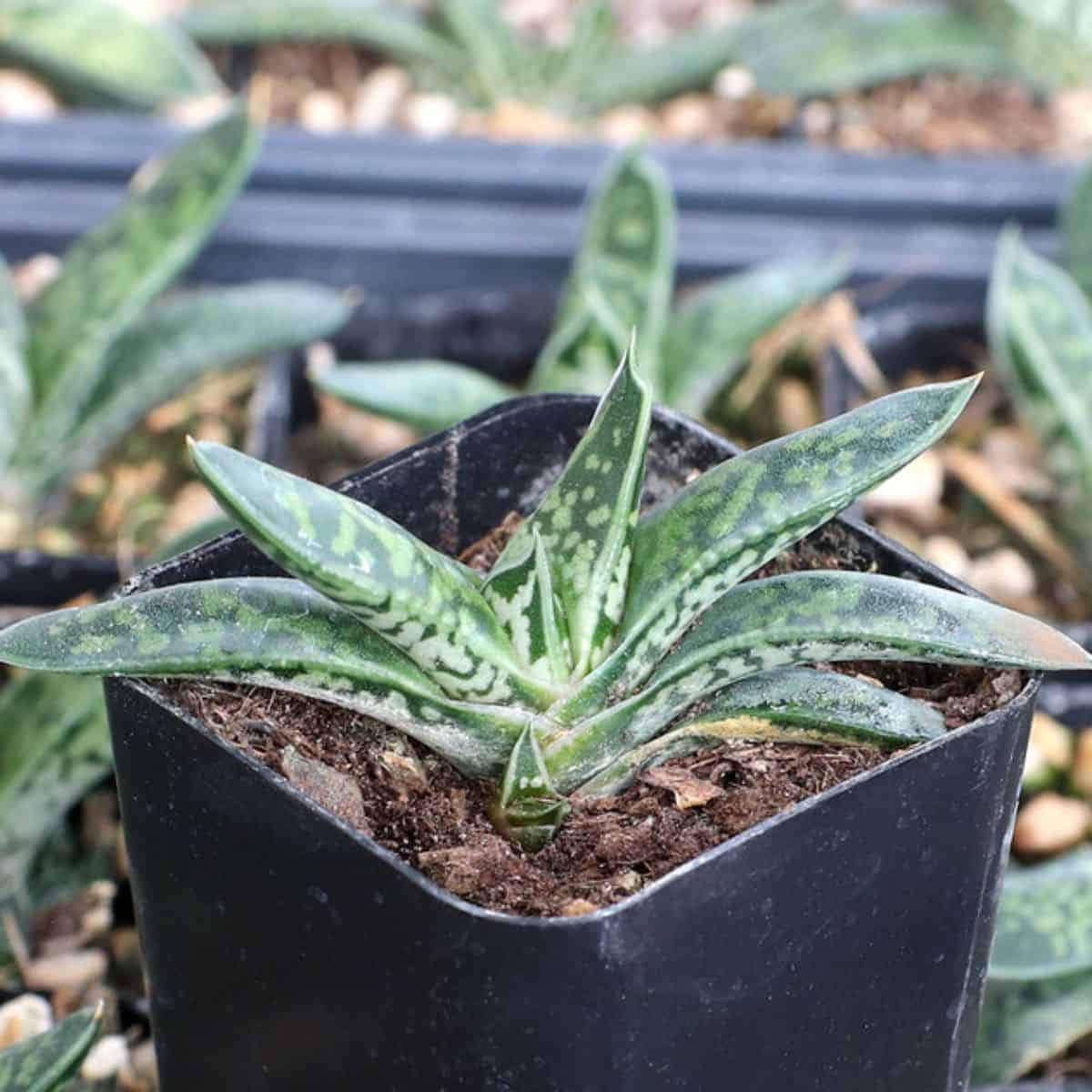
Buy it from:
Hardiness: 10
Light Requirements: Filtered light
Common Name: Dwarf Ox-Tongue
Graptopetalum
Graptopetalum is kind of a big overarching group for many different characteristics that define the several crosses that occur under this genus. That’s what makes things so interesting with graptopetalums; they are always differemtnt! Summer dormant species also show brilliant color changes throughout the year. You’ll find graptoveria, graptopetalum, and graptosedum all underneath the genus of graptopetalum.
Rusbyi
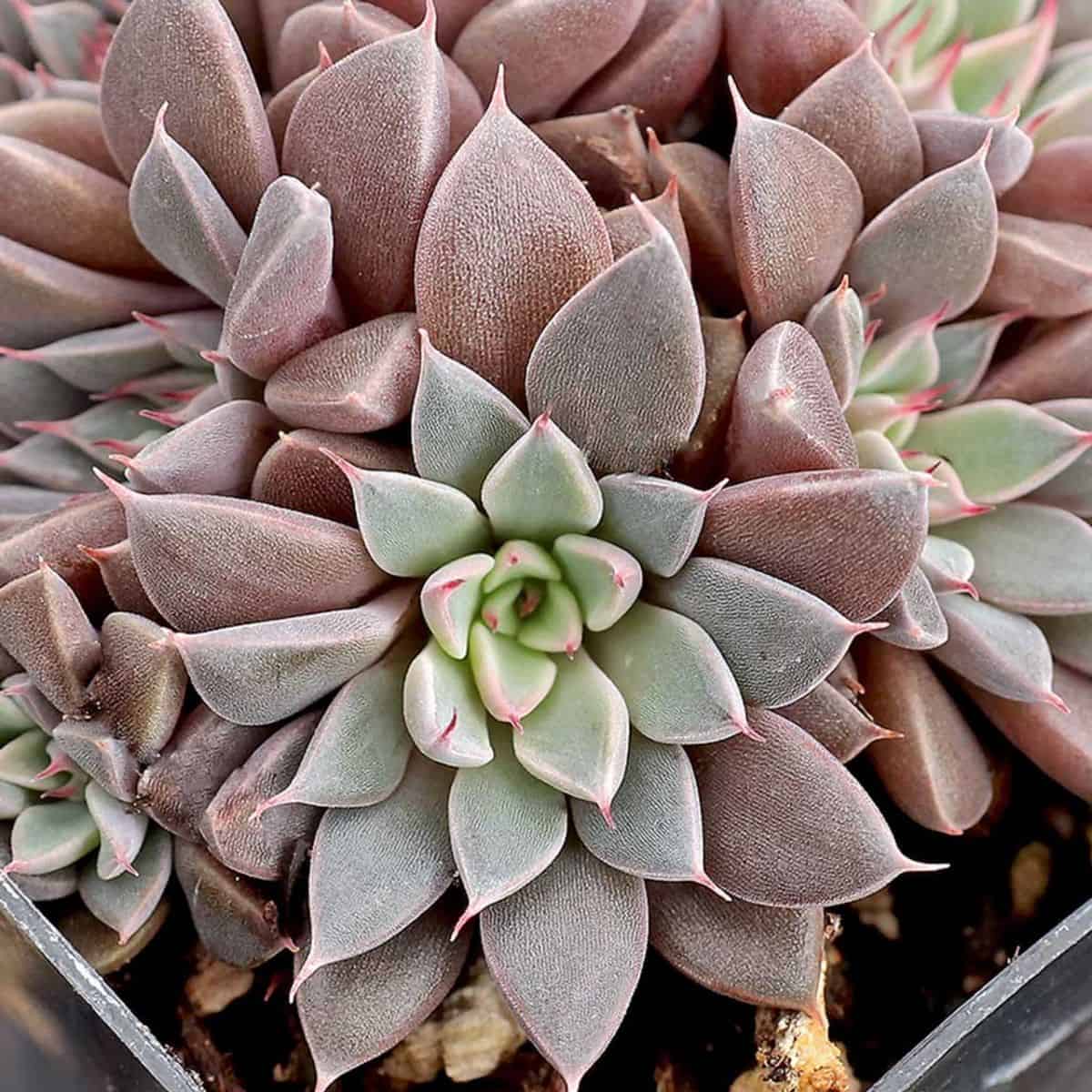
Buy it from:
Hardiness: 10
Light Requirements: Full sun and bright light. Farina should protect from sunburn.
Common Name: San Francisco River Leatherpetal
Superbum
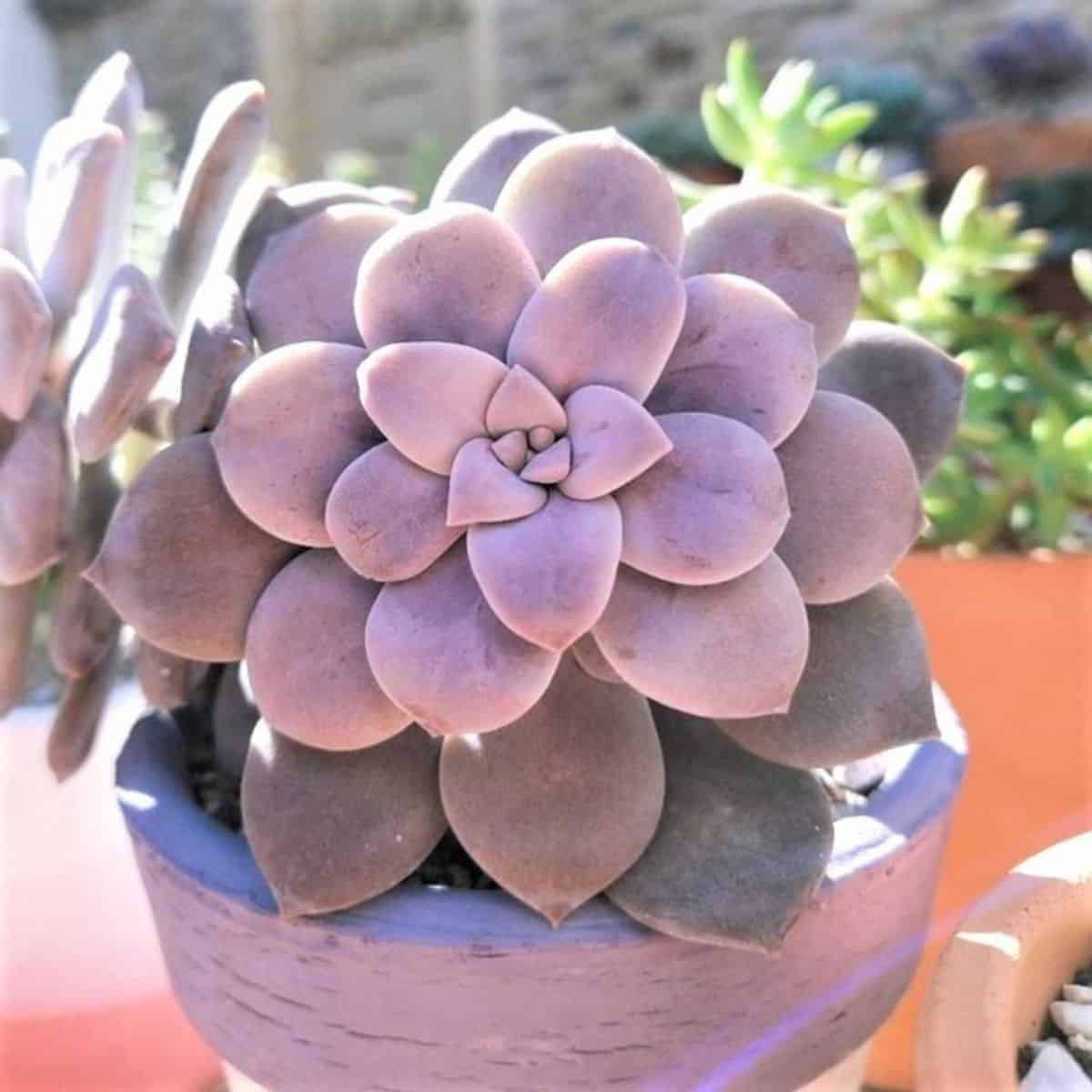
Buy it from:
Hardiness: 10
Light Requirements: Can handle most full sun: farina should protect from sunburn.
Common Name: Beautiful Graptopetalum
Gymnocalycium
These are a fun little group of cacti with the nickname of ‘chin cactus’. The way that they grow on a sort of oval shape is very close to the side profile of a chin. The 70 species in this genus vary with spine length, the sizes of their ribs, how much fuzz is present at each node and some flower coloration. Other than their shape, what brings these species together is that they lack the traditional spines that occur on new flower buds.
Bruchii
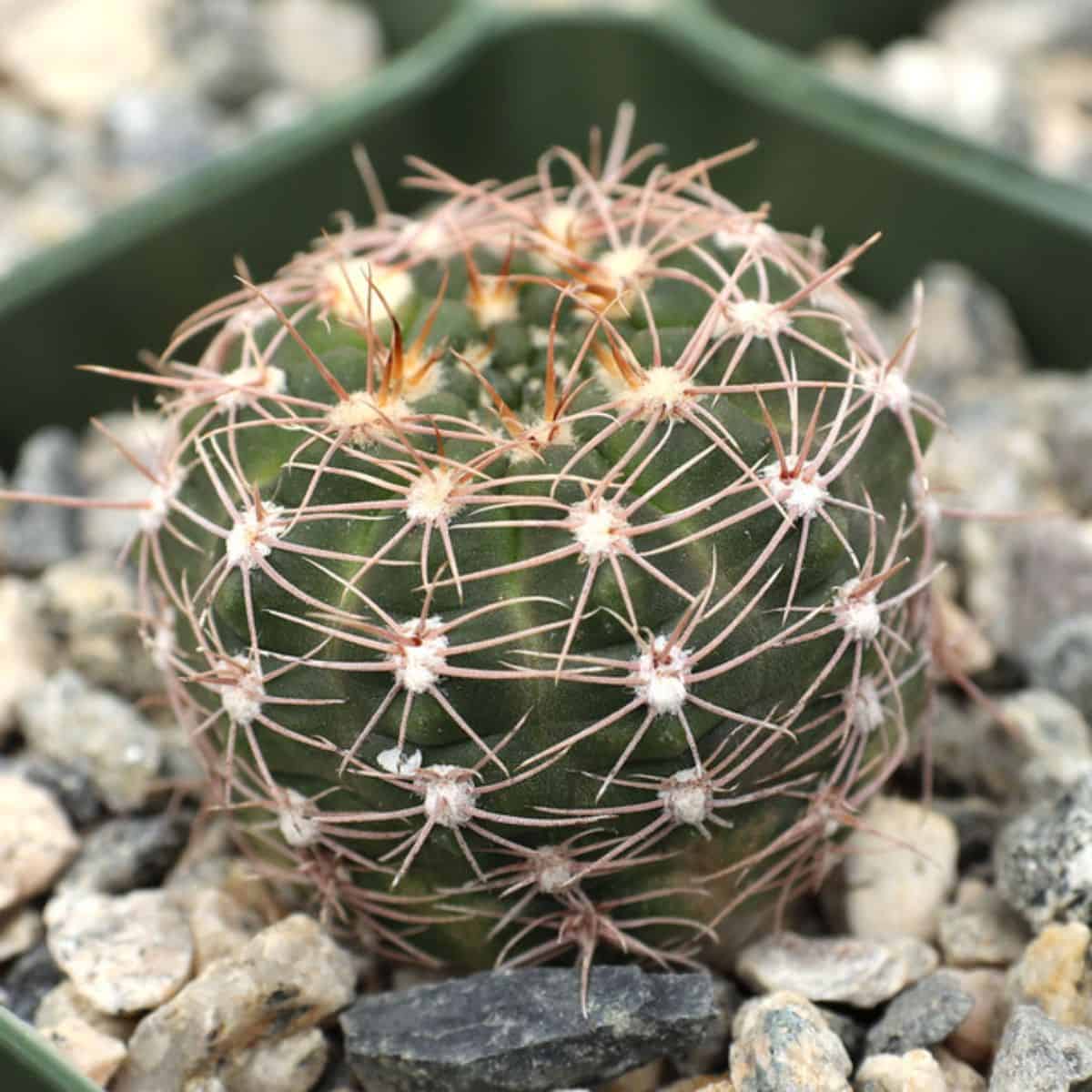
Buy it from:
Hardiness: 10
Light Requirements: Bright indoor light, indirect full sun
Common Name: None
Ochoterenae ssp. vatteri
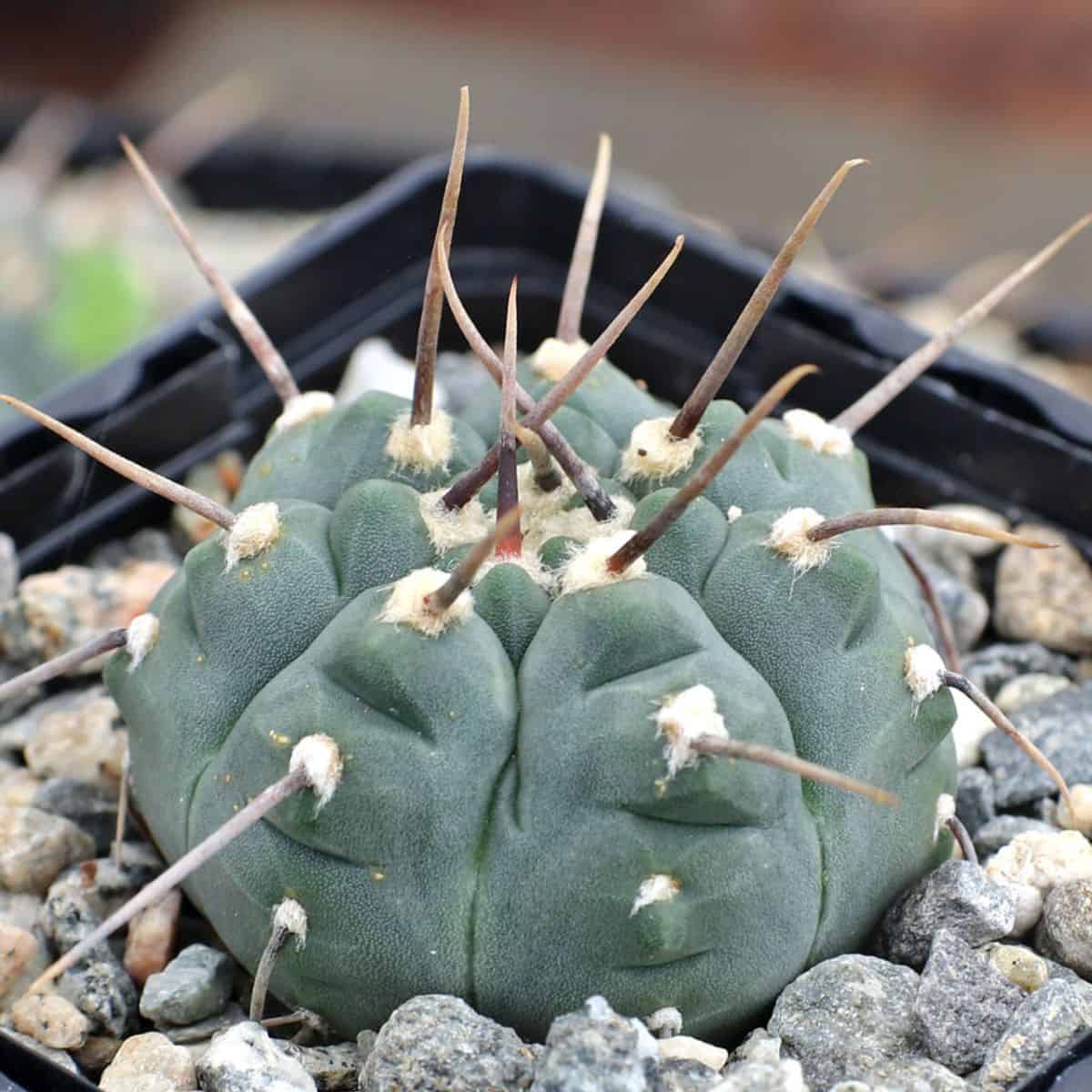
Buy it from:
Hardiness: 10
Light Requirements: Bright indoor light, indirect full sun
Common Name: None
H
Haworthia
Haworthias are extremely different plants even within their own genus. Some look like the pretty common zebra plant, and then you have the windowed haworthias that look like they are made of glass. Those with thinner skin tend to need less light and they can sunburn very easily. Haworthias are summer dormant and as long as you keep their roots from soaking in water, they will do well inside and outside.
Attenuata
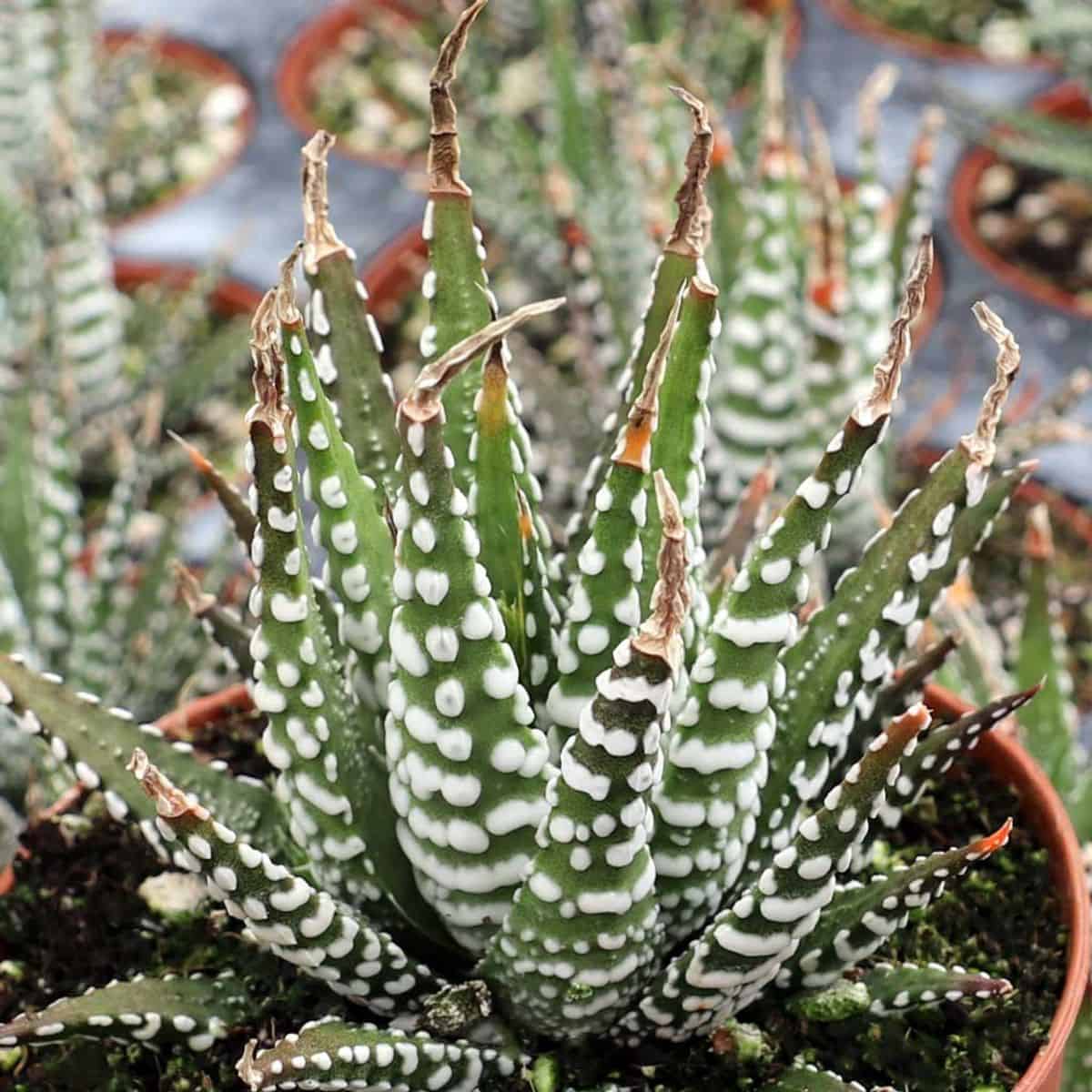
Buy it from:
Hardiness: 10
Light Requirements: partial sun
Common Name: Super White
Ed Storms
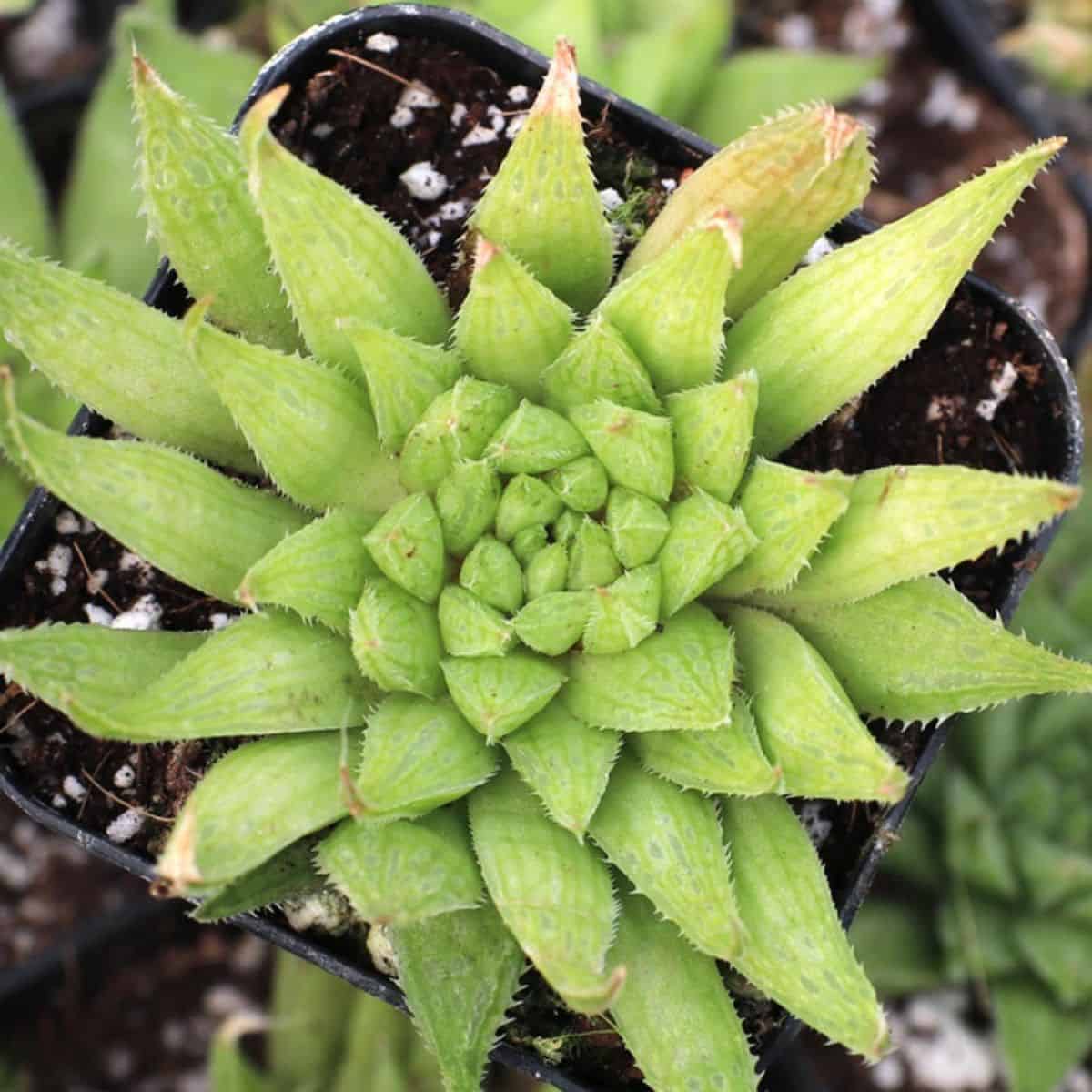
Buy it from:
Hardiness: 10
Light Requirements: partial sun
Emelyae var. major
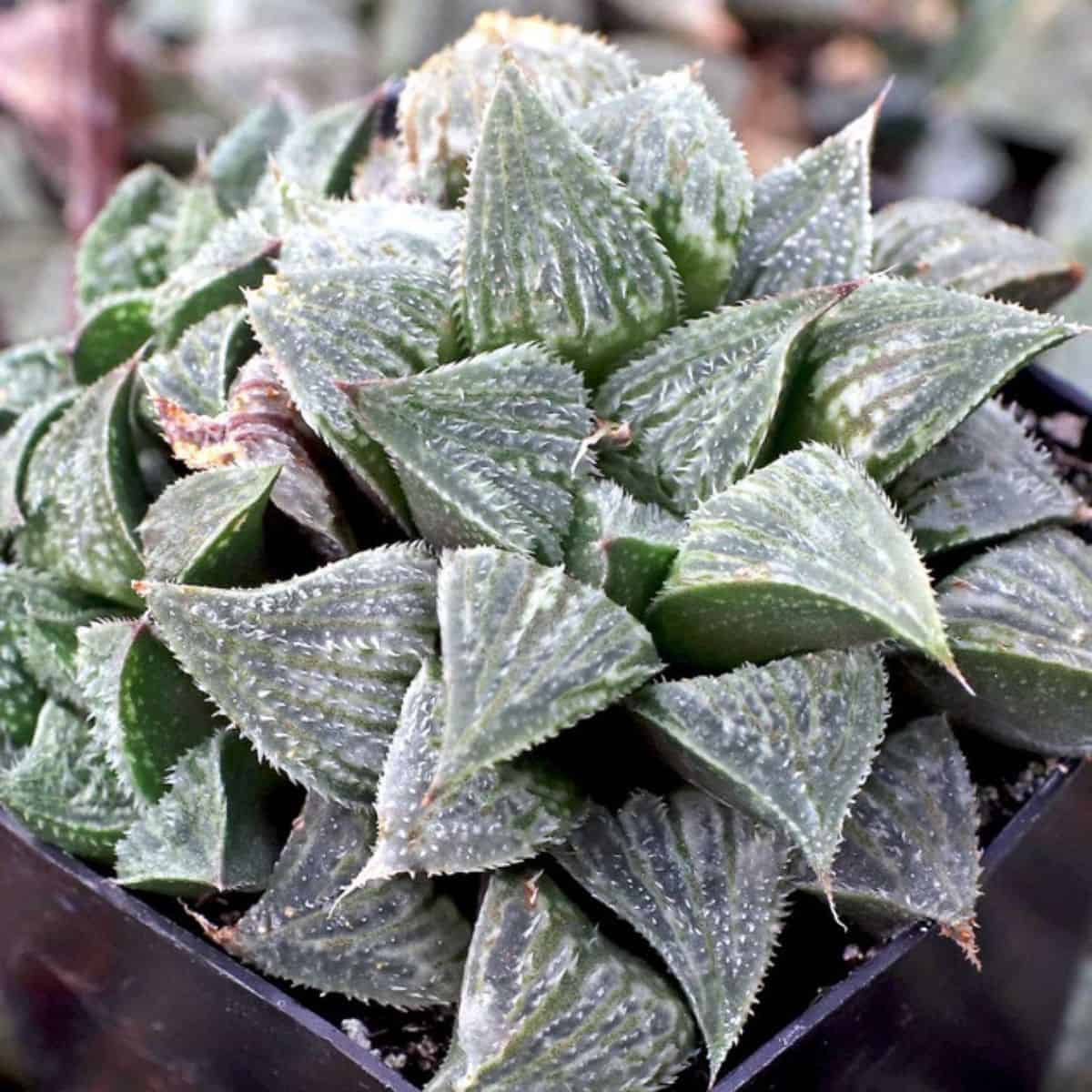
Buy it from:
Hardiness: 10
Light Requirements: partial sun
Common Name: Alwynrosie
Fasciata
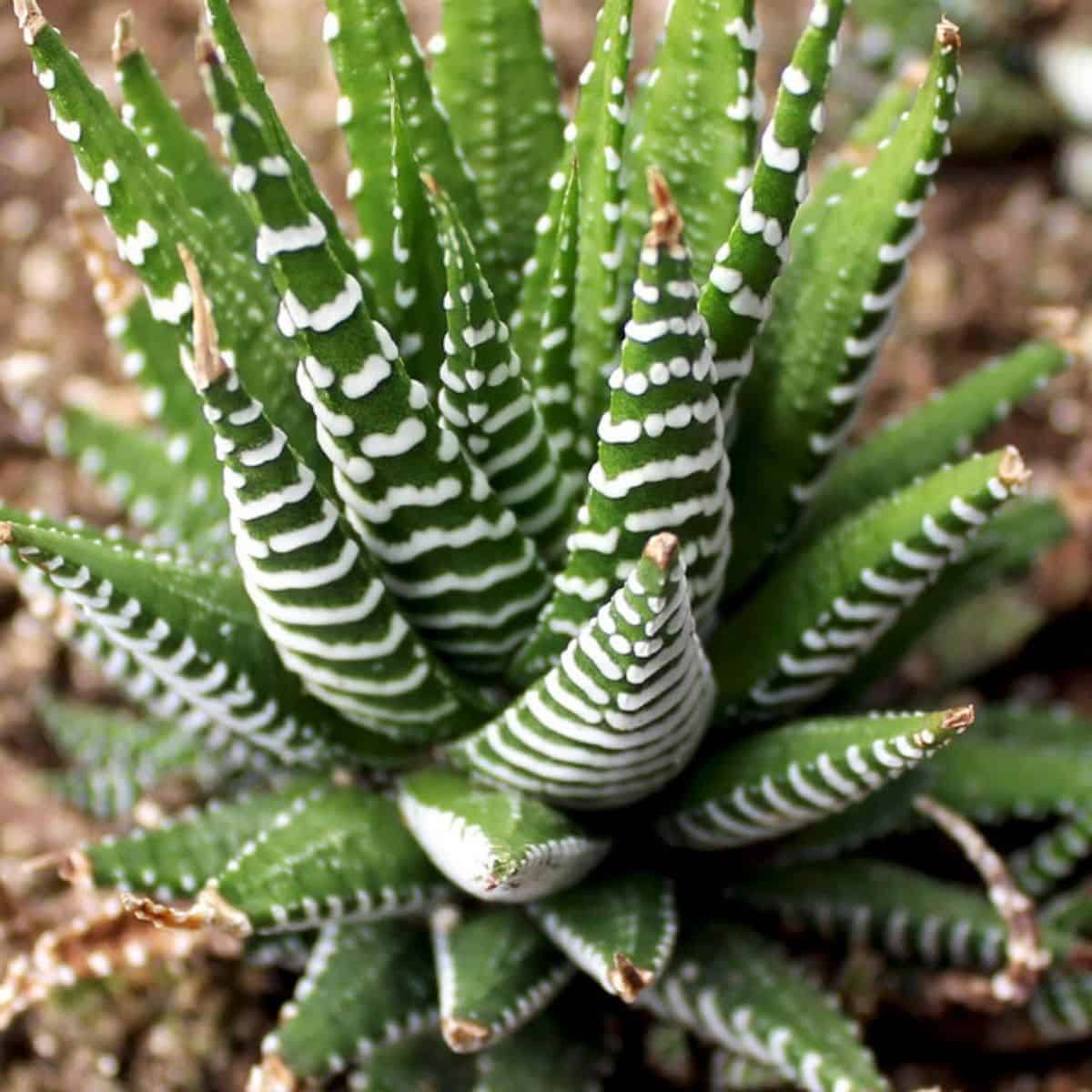
Buy it from:
Hardiness: 10
Light Requirements: partial sun
Common Name: Zebra Plant
Gracilis var. viridis
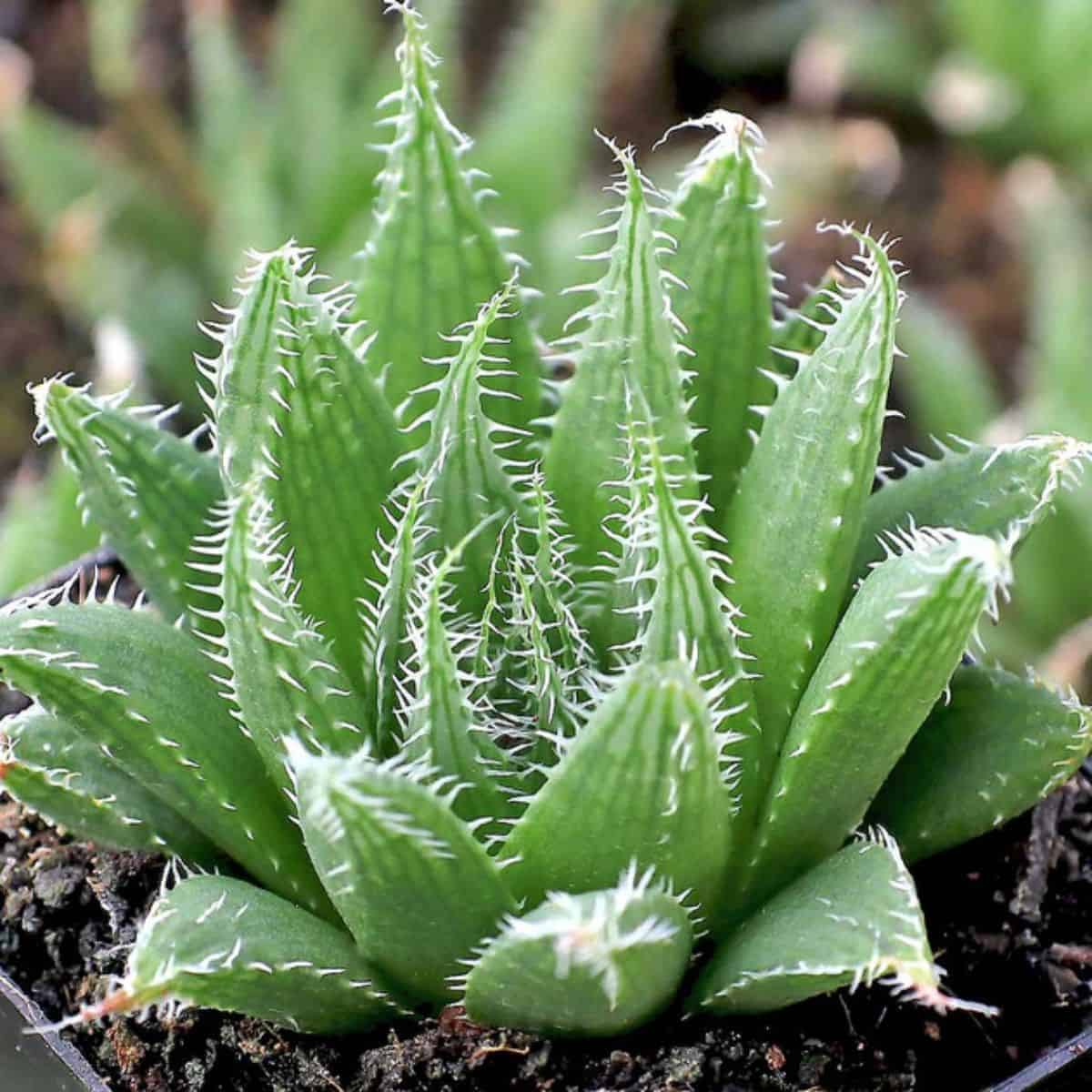
Buy it from:
Hardiness: 10
Light Requirements: partial sun
Mantellii
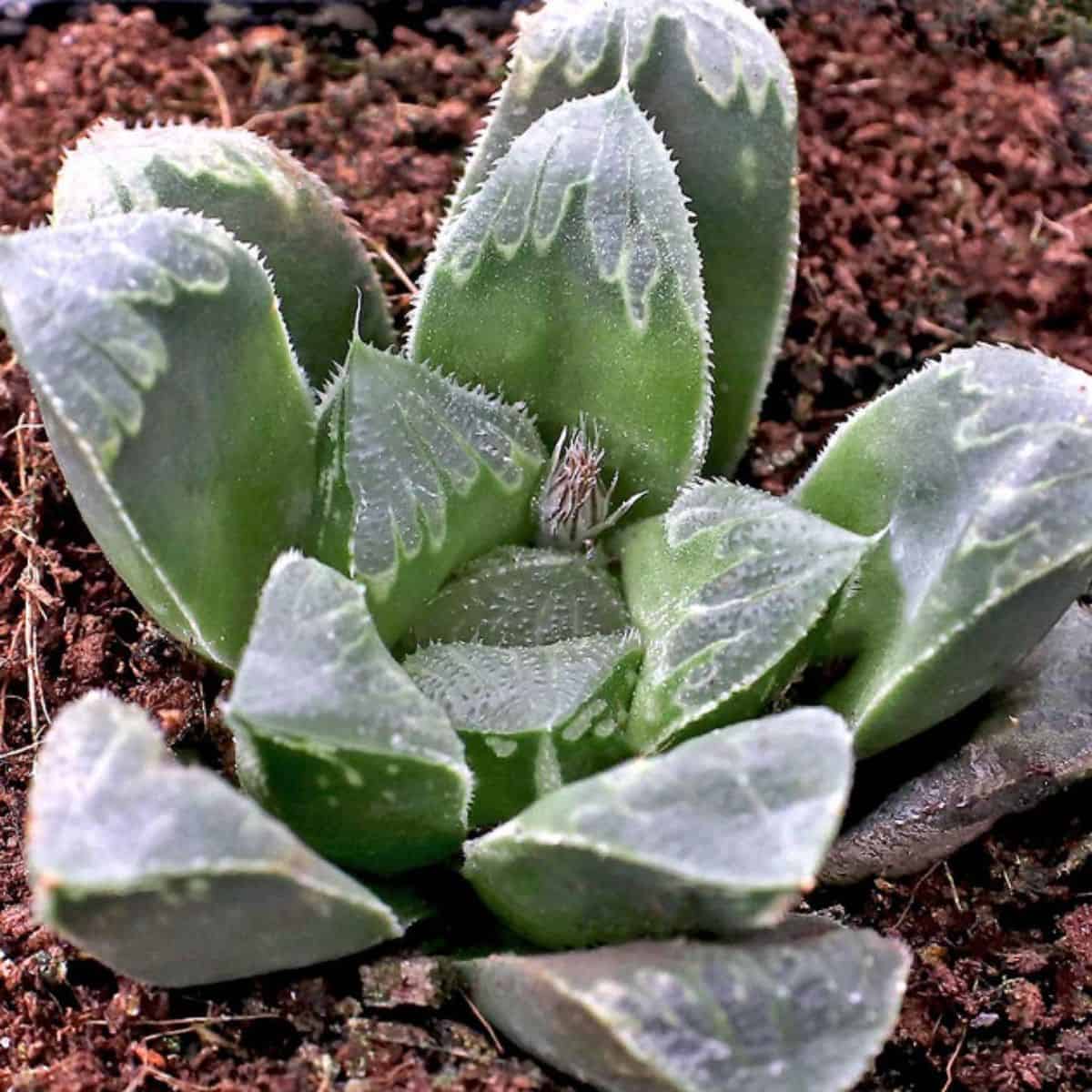
Buy it from:
Hardiness: 10
Light Requirements: partial sun
Truncata
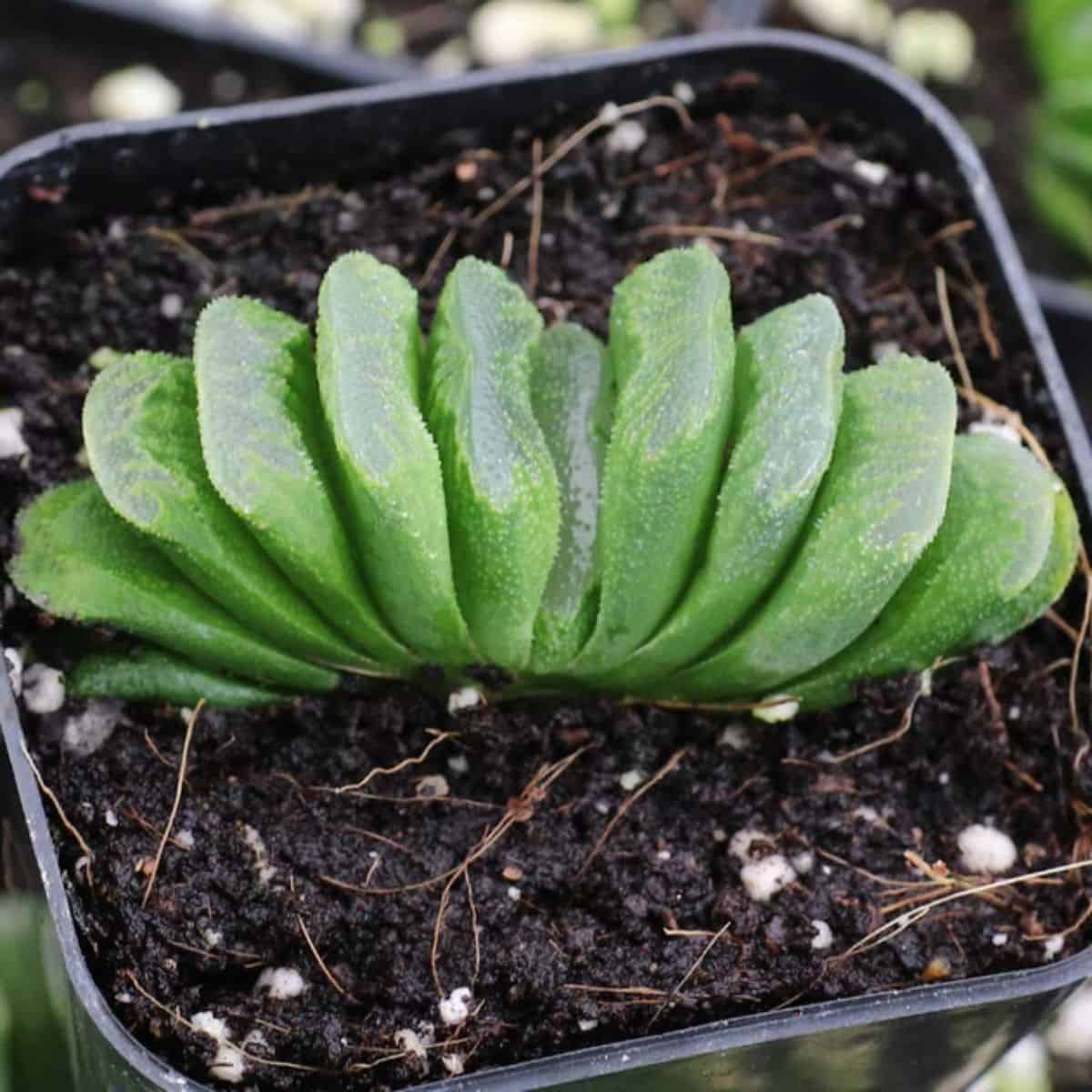
Buy it from:
Hardiness: 10
Light Requirements: Bright indoor light, indirect full sun
Common Name: Horse’s Teeth
Turgida
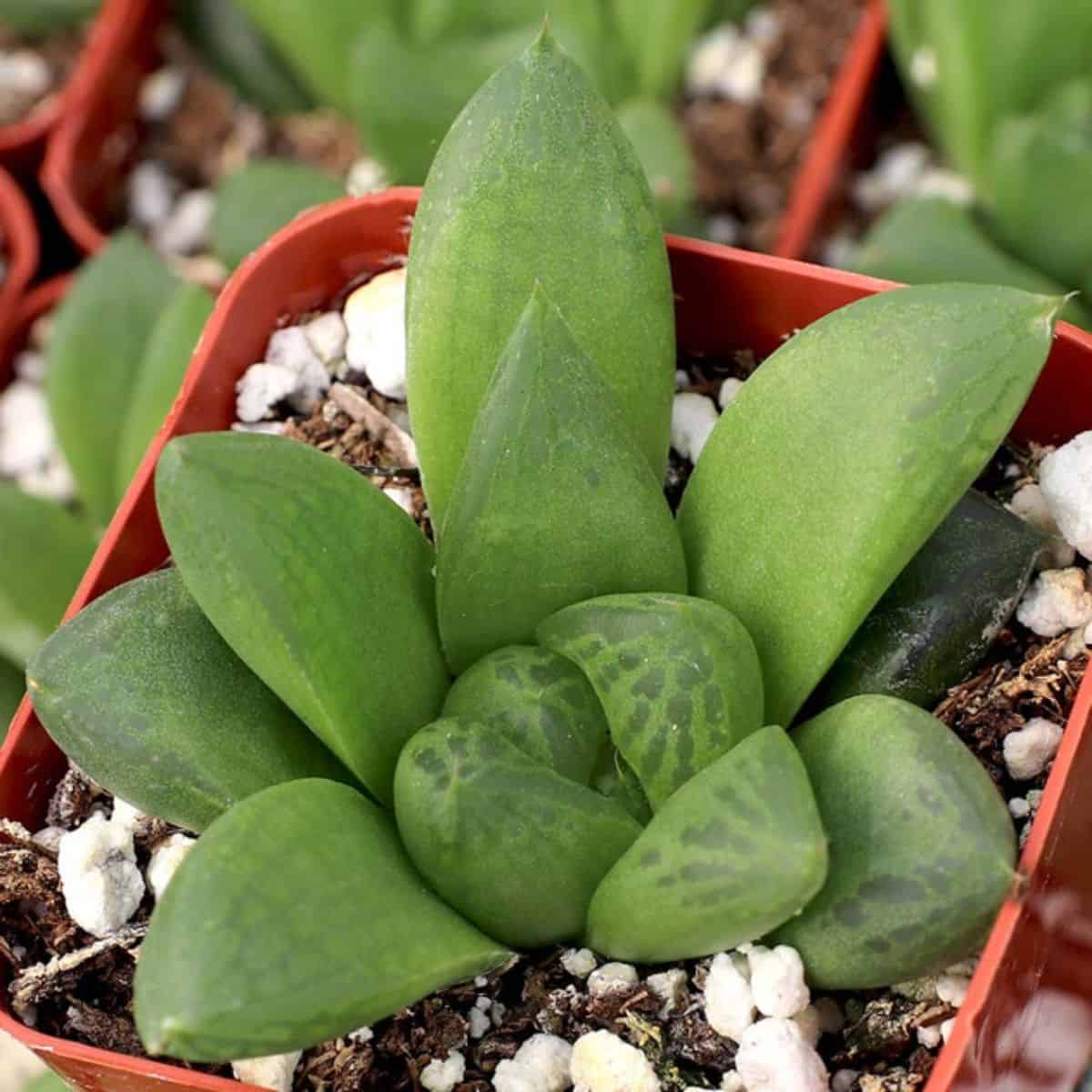
Buy it from:
Hardiness: 10
Light Requirements: partial sun
Turgida var. longibracteata
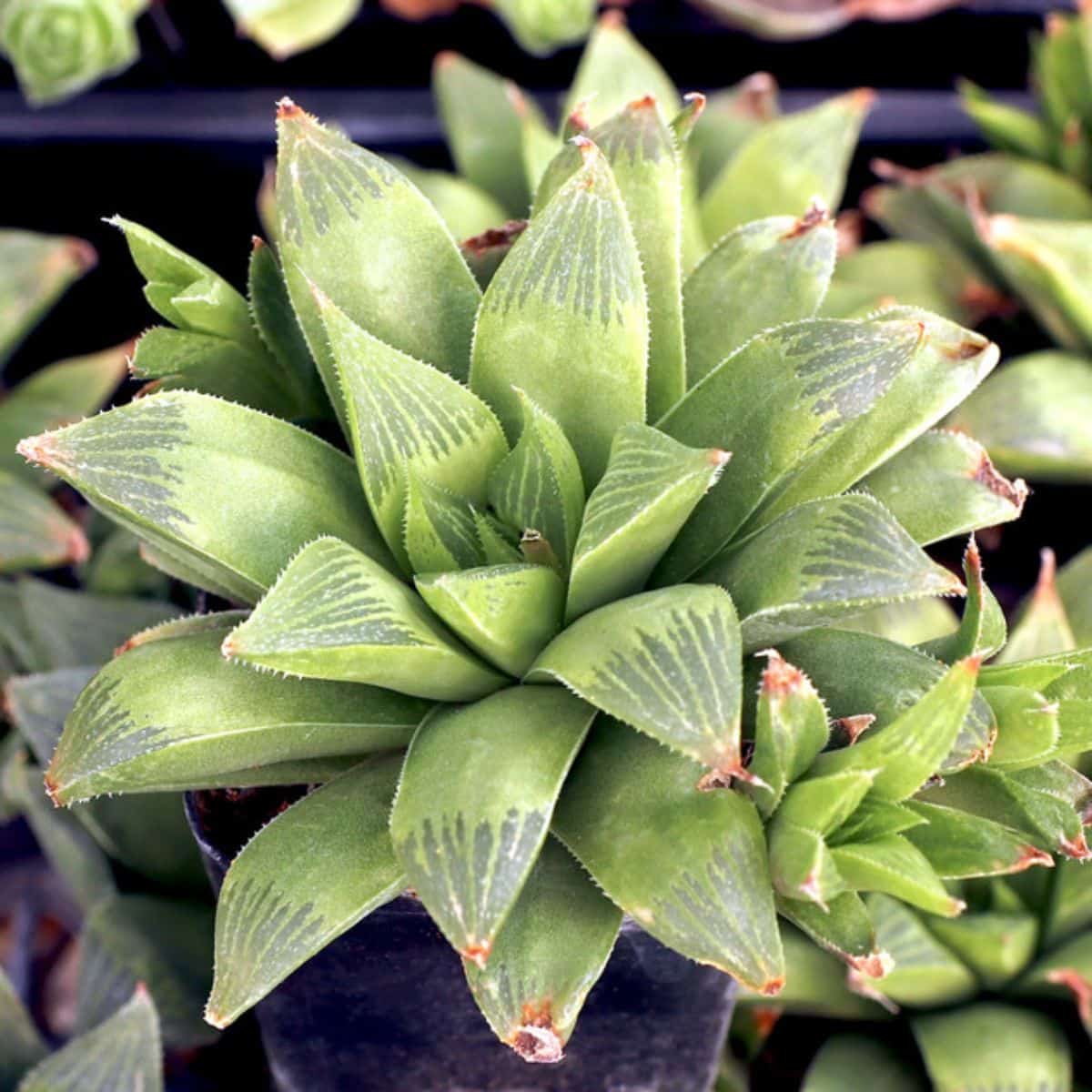
Buy it from:
Hardiness: 10
Light Requirements: partial sun
Variegata var. petrophila
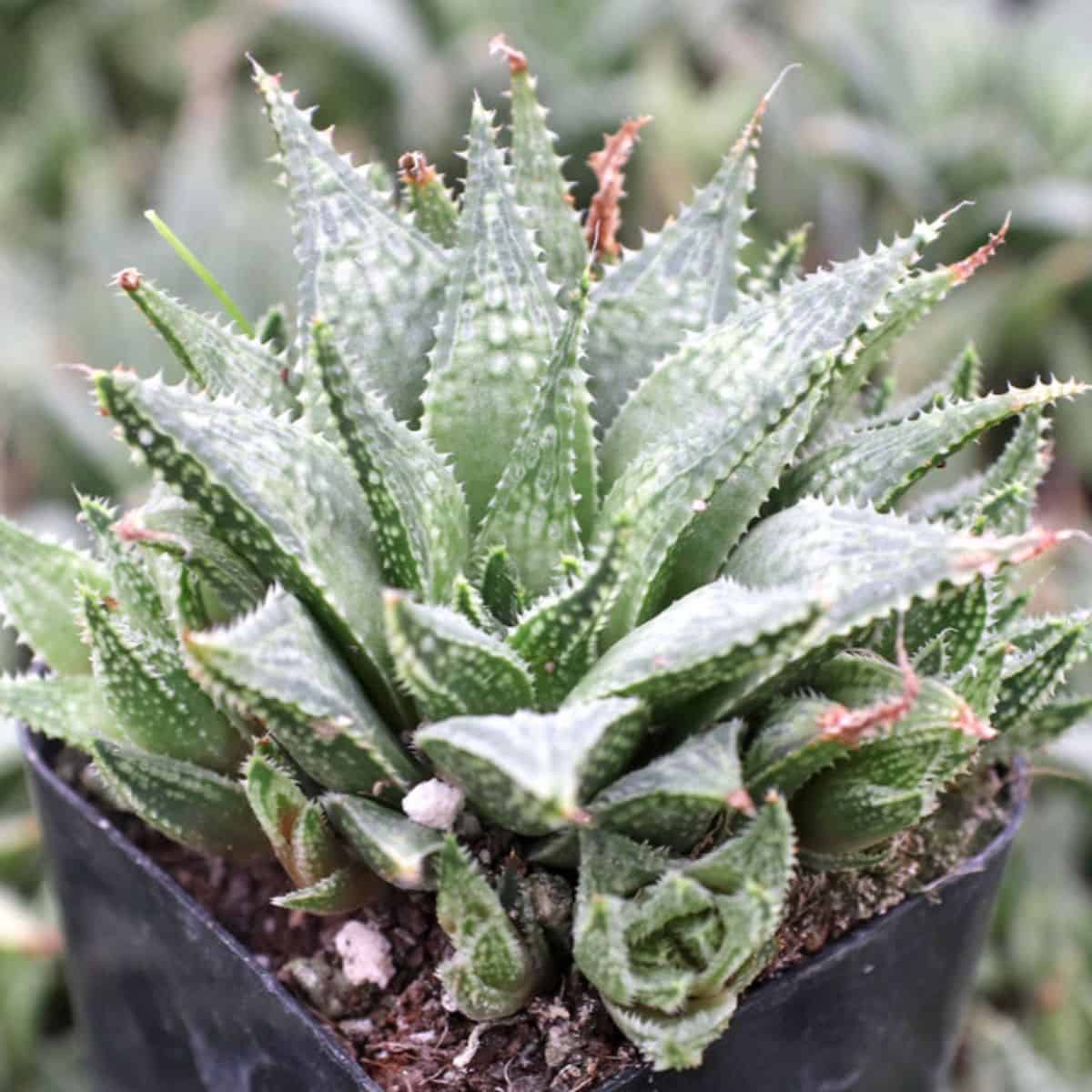
Buy it from:
Hardiness: 10
Light Requirements: partial sun
Wudalang
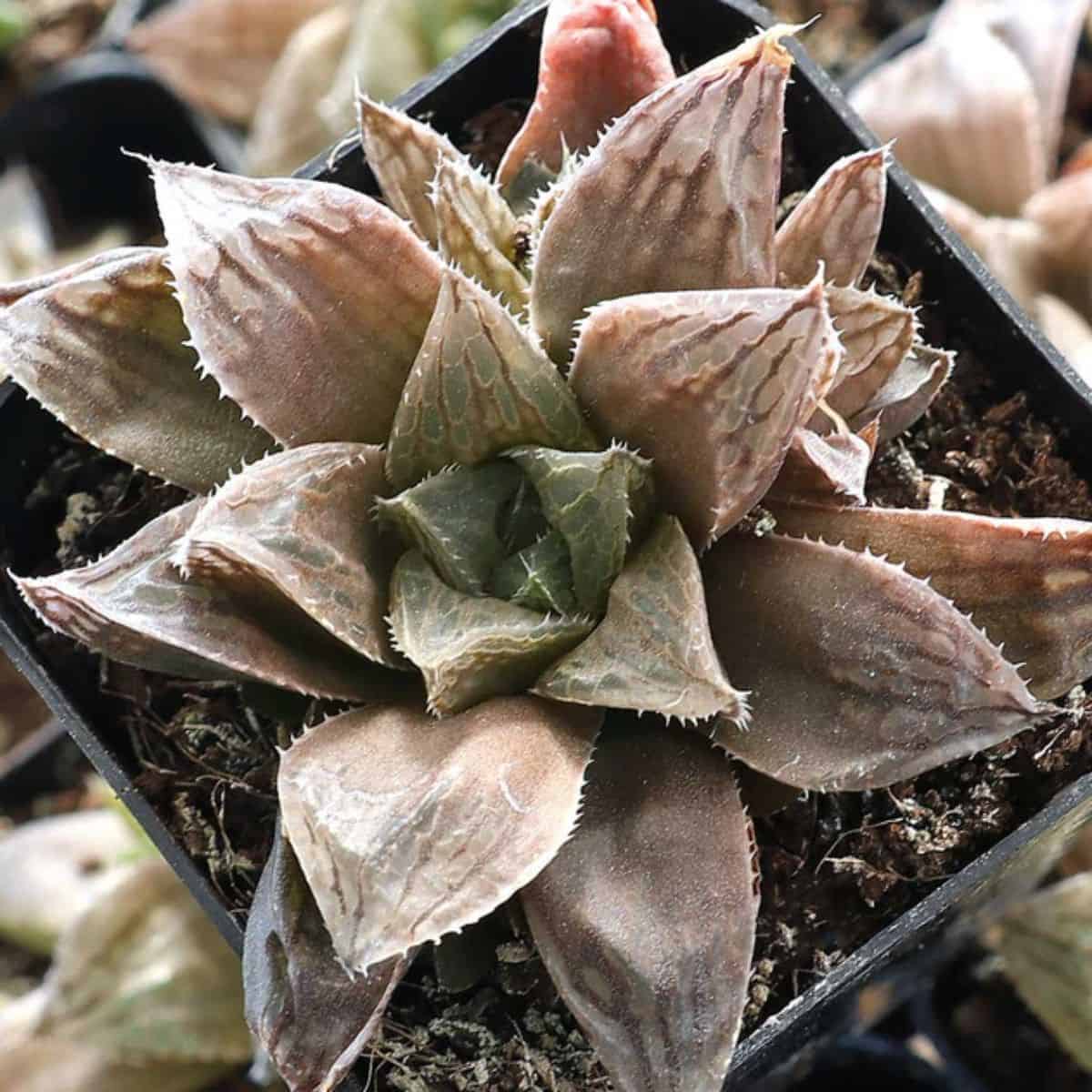
Buy it from:
Hardiness: 10
Light Requirements: partial sun
L
Lithops
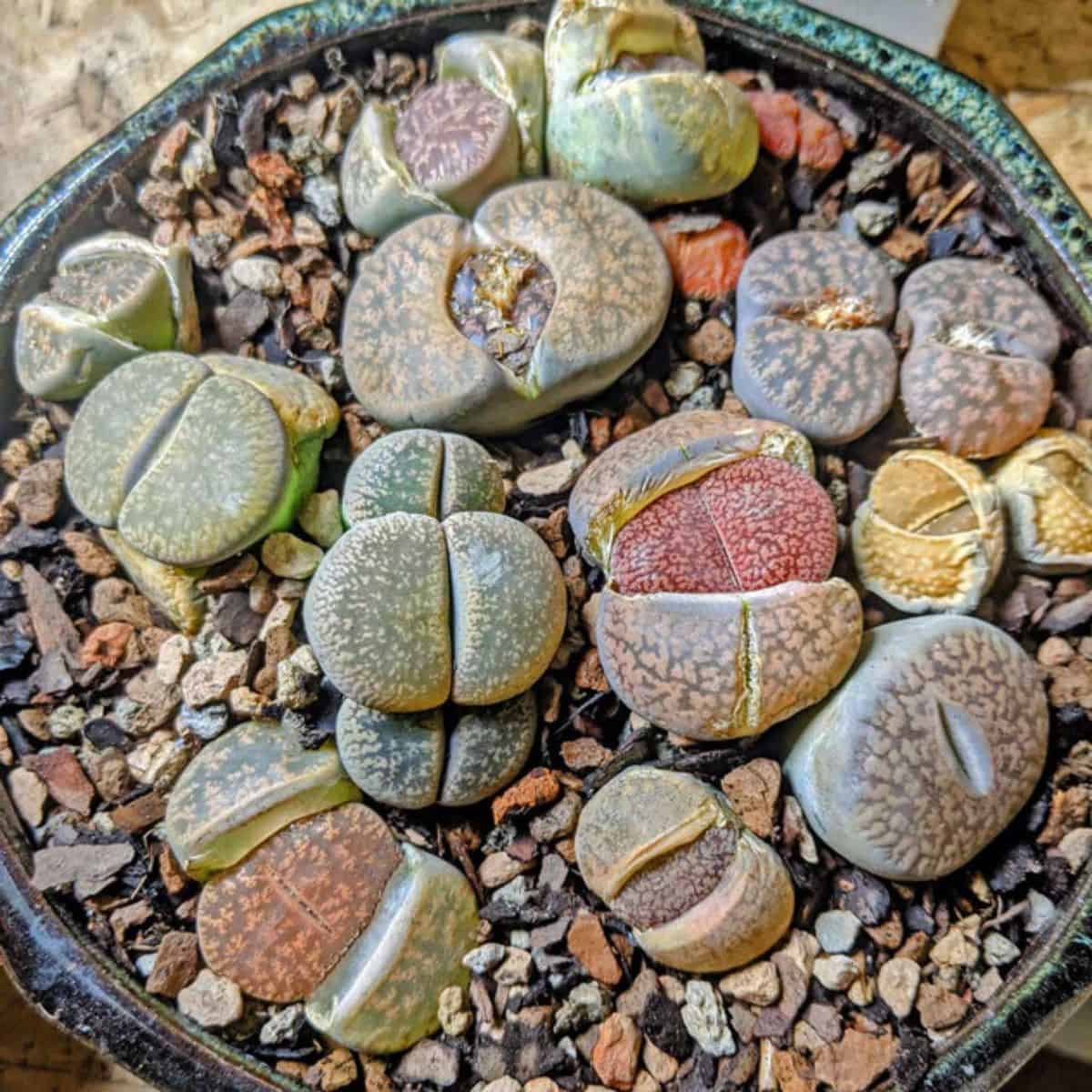
Buy it from:
This type of succulent has countless species that stay under three inches. The reason is that the whole genus rarely, if ever gets above three inches in height. They can grow into taller mounds when growing in more compact spaces, but generally speaking, these stones do well packed tightly.
M
MCG
The following species are from Mountain Crest Gardens and are limited to their greenhouses. The species are very fluffy with well defined and clustering small succulents.
Faumatium
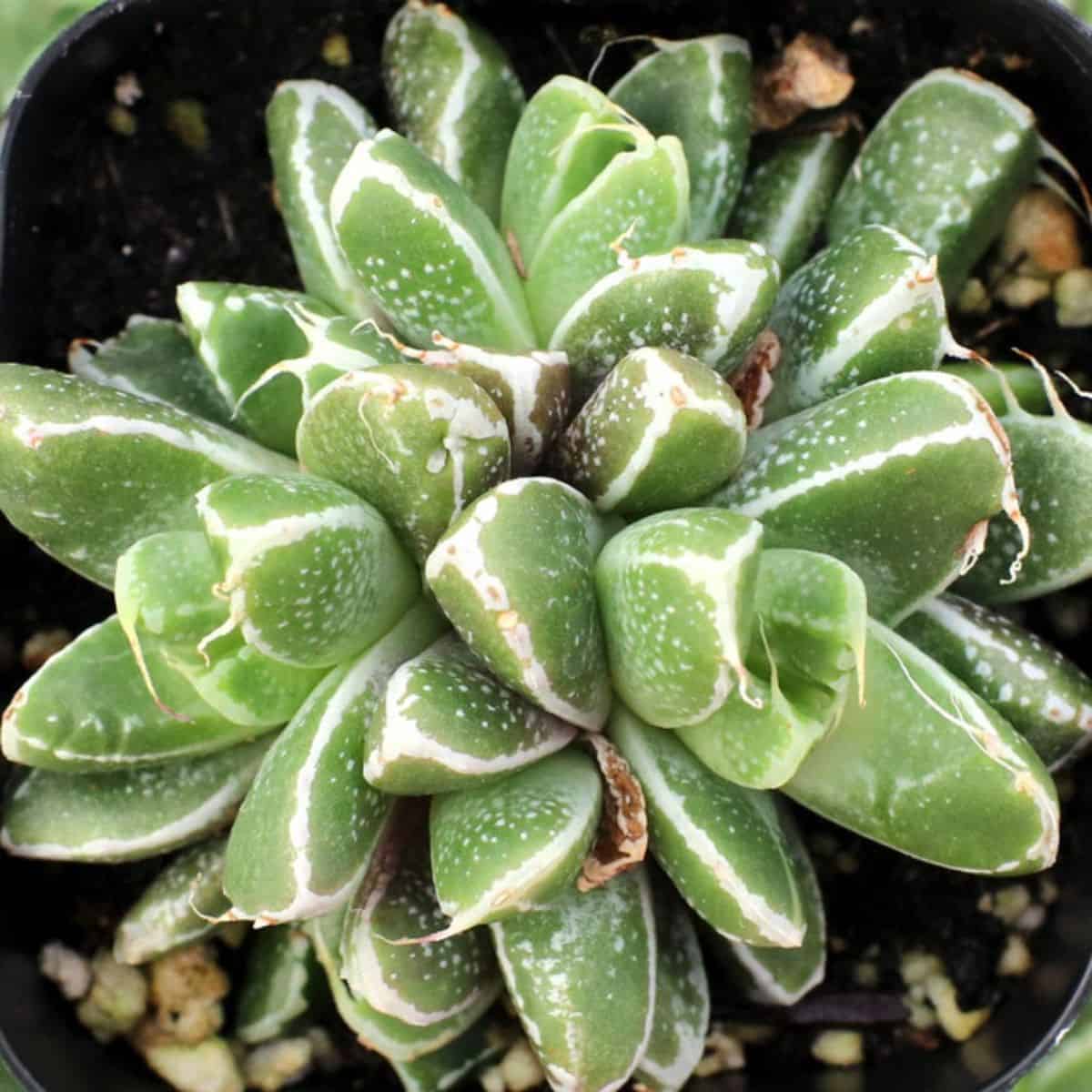
Buy it from:
Hardiness: 10
Light Requirements: Partial Sun
Common Name: None
Dormancy: varies
Haworthia cymbiformis var. ramosa
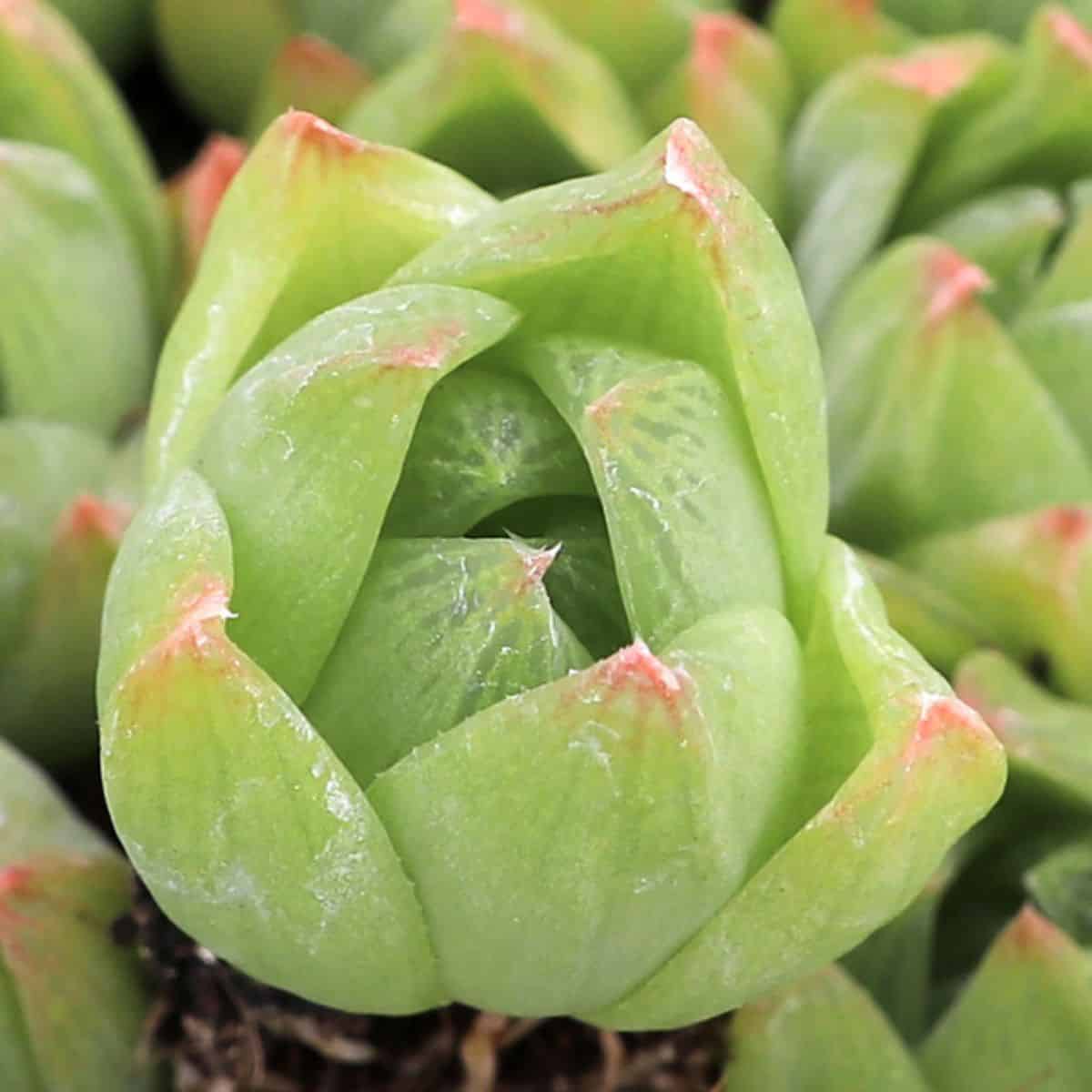
Buy it from:
Hardiness: 10
Light Requirements: partial sun
Common Name: Ramosa
Dormancy: varies
Mammilaria
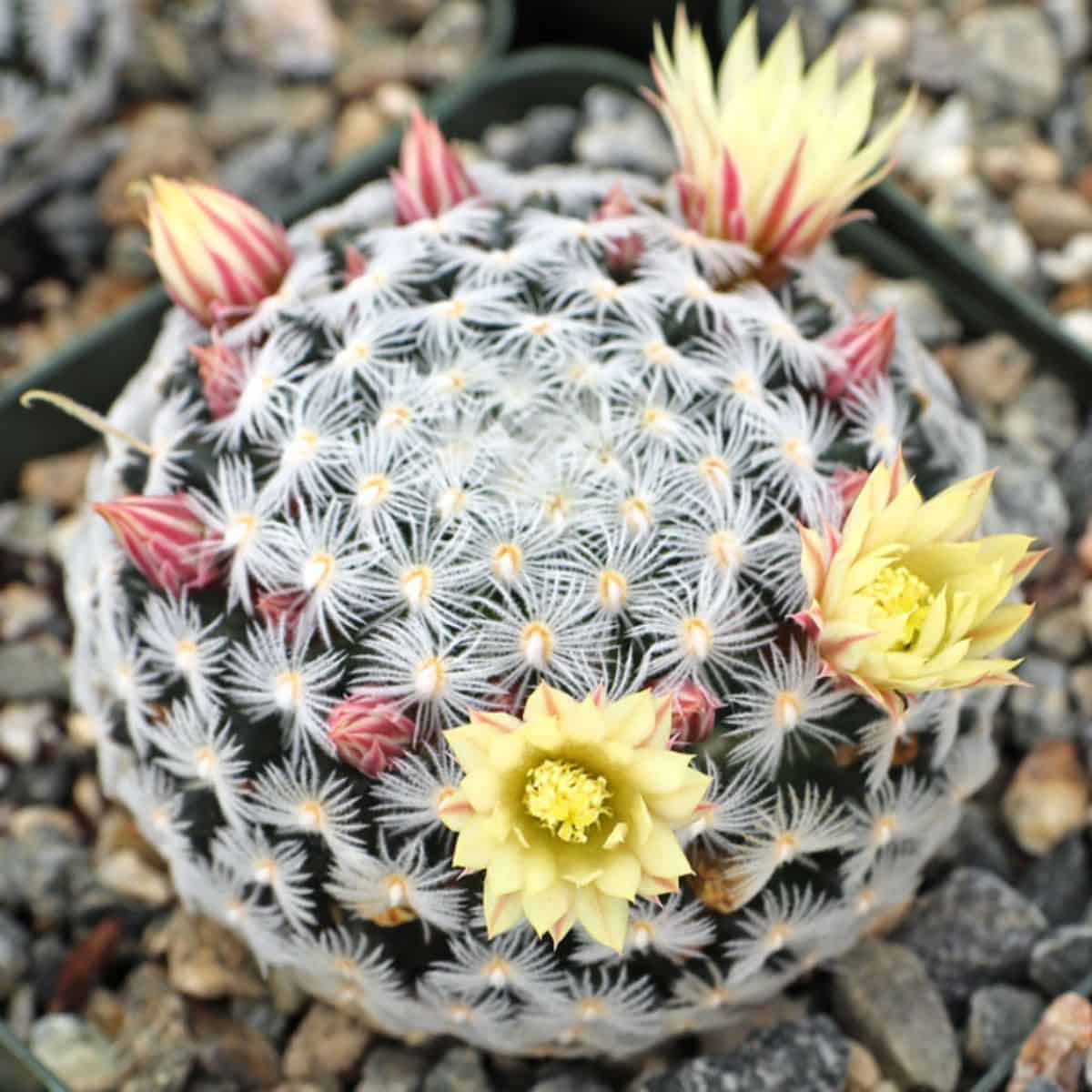
Buy it from:
Mammilaria is a wonderful little cactus that often grows in column shape. They can be spherical; they can branch off or self-propagate as well. They have all sorts of spine variations and so much more. Like other spherical and columnar cacti, there is variation in their height. With dainty white flowers, this winter dormant genus is a joy to have.
Hardiness: 10
Light Requirements: full indirect sun and bright indoor light
Dormancy: winter dormant
● Crinita ssp. Duwei
● Crinita ssp. Leucantha
● Gracilis fragilis
● Laui ssp. subducta
● Zeilmanniana
O
Orostachys spinosa f. minuta
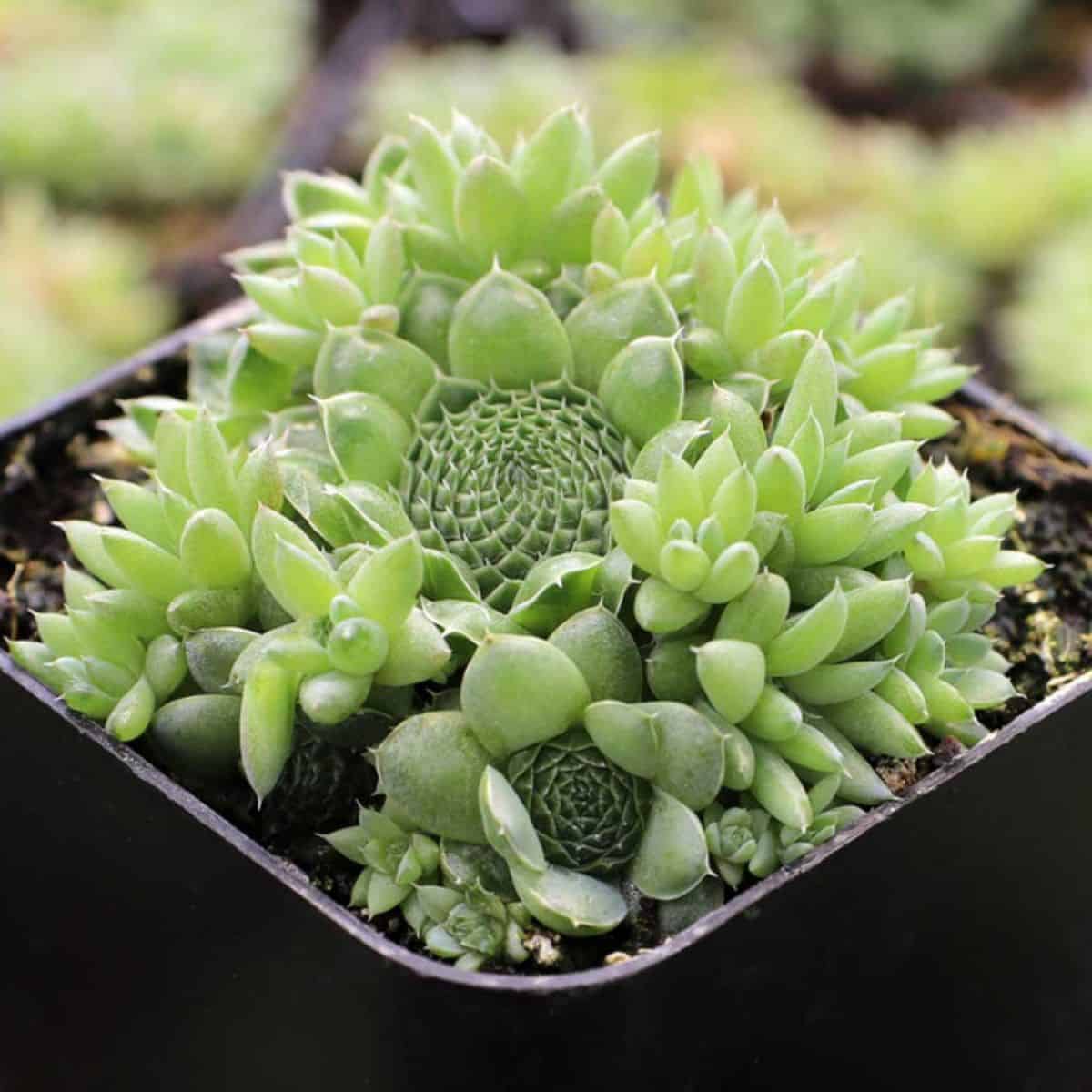
Buy it from:
Hardiness: 5-10
Light Requirements: Full Sun
Common Name: Chinese Dunce Cap
Dormancy: winter dormant
R
Rosularia platyphylla
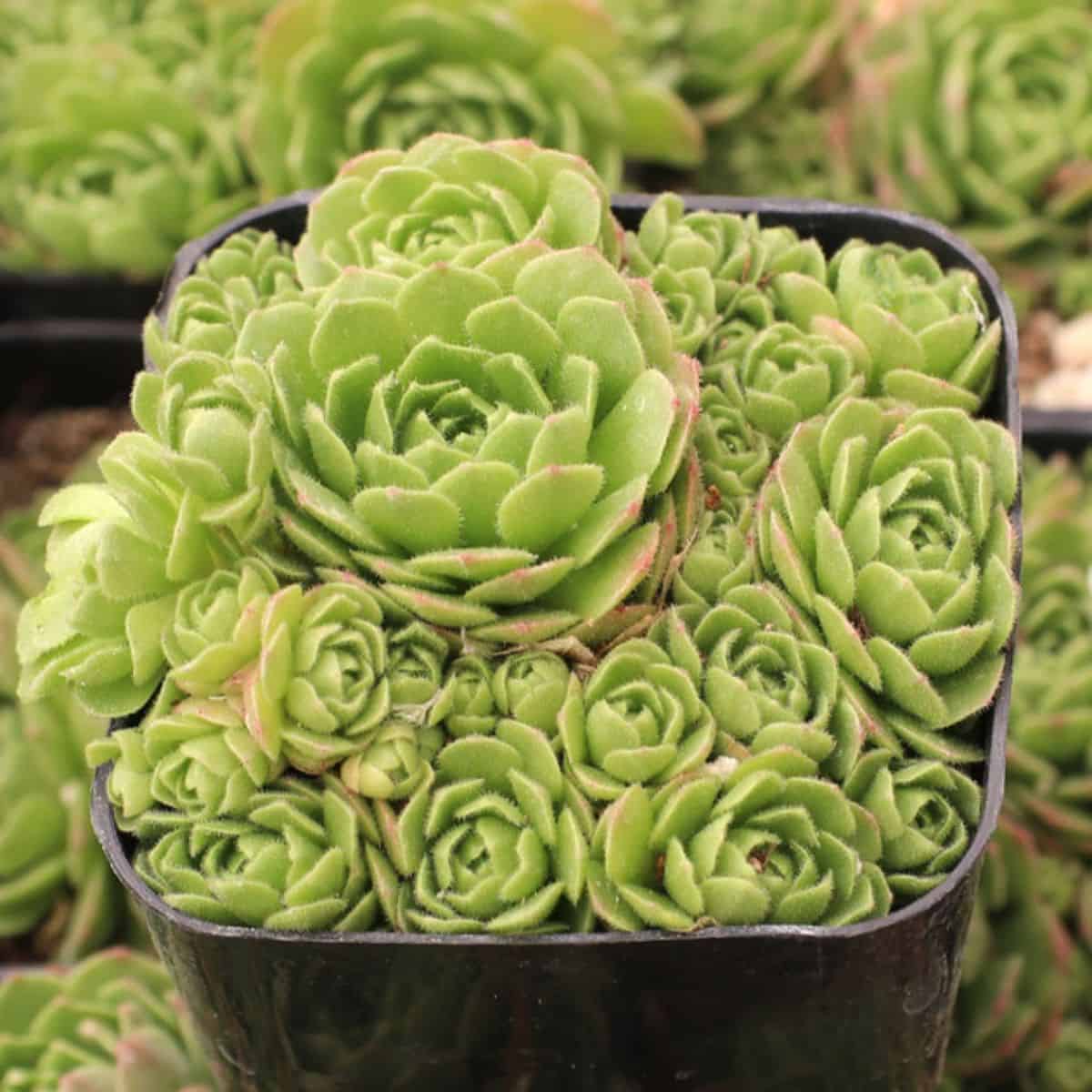
Buy it from:
Hardiness: 5-10
Light Requirements: can handle filtered light
Common Name: Turkish Stonecrop
Dormancy: winter dormant
S
Sedeveria Blue Elf
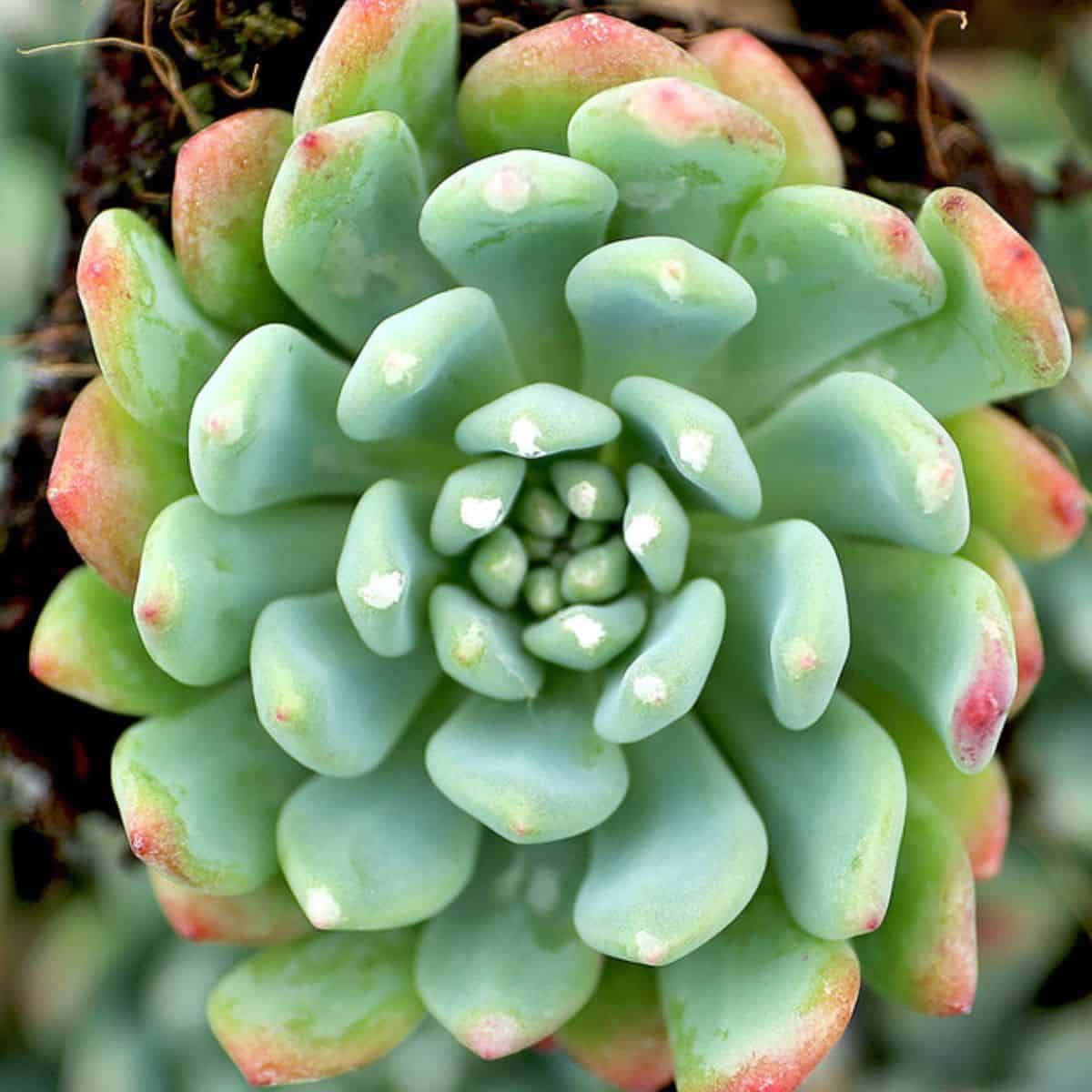
Buy it from:
Hardiness: 10
Light Requirements: Bight indoor light and partial sun
Common Name: Happy Plant
Dormancy: Summer dormant
Sedum
Sedum are, personally, some of the most underappreciated succulents. They are completely atypical in their growth with spindly stems and broad leaves. Sedums and stonecrops can cover ground very quickly and the variety in their color and shape makes them very collectible! They are incredibly hardy as a whole and love bright sunlight. Make sure you water them less in the summer since they tend to grow and bloom most in the winter. You can find one of pretty much every color. Feel free to check for yourself in some of the color posts here.
Acre

Buy it from:
Hardiness: 4 - 10
Light Requirements: Open sun
Common Name: Oktoberfest
Album
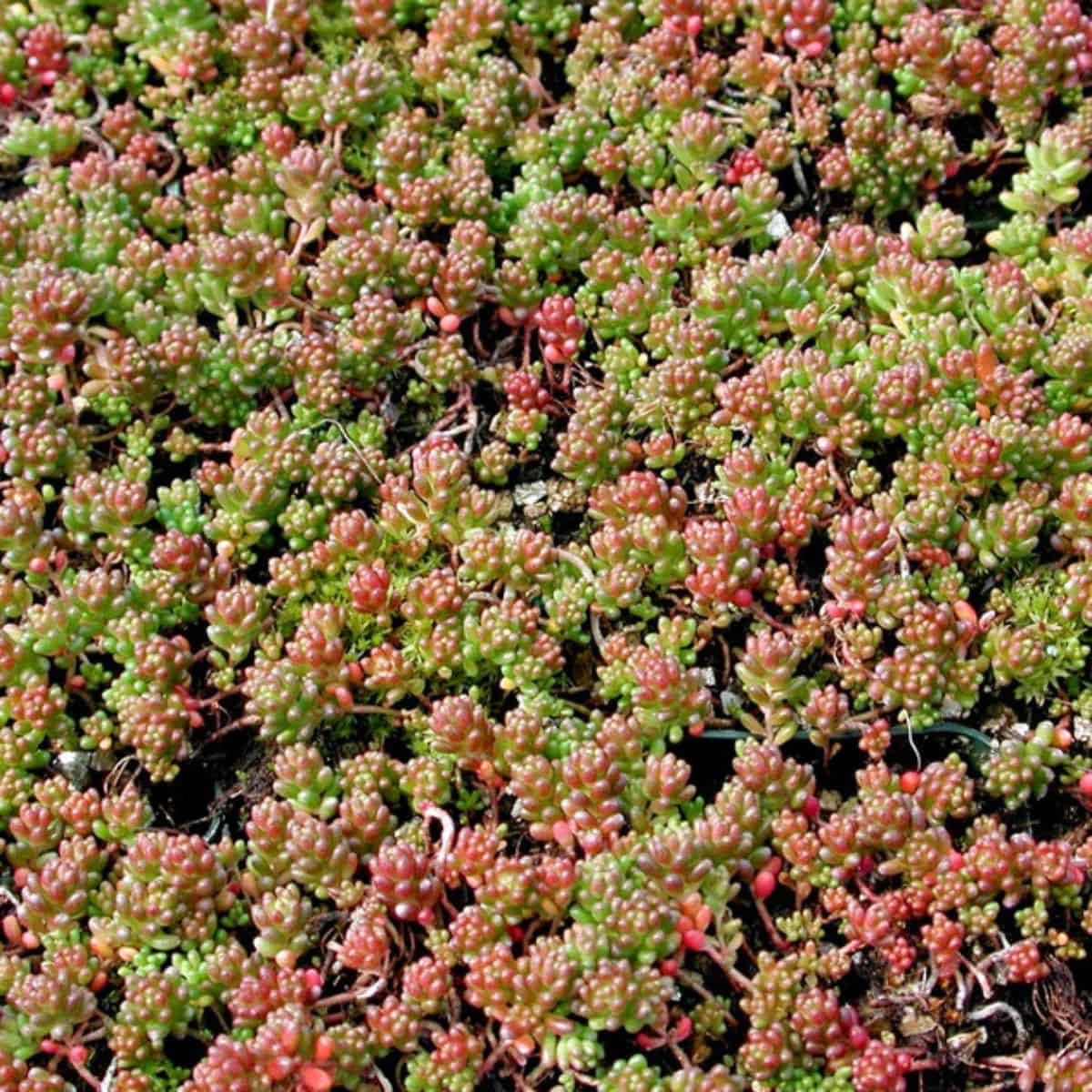
Buy it from:
Hardiness: 4 - 10
Light Requirements: Open sun
Common Name: Coral Carpet
Borschii
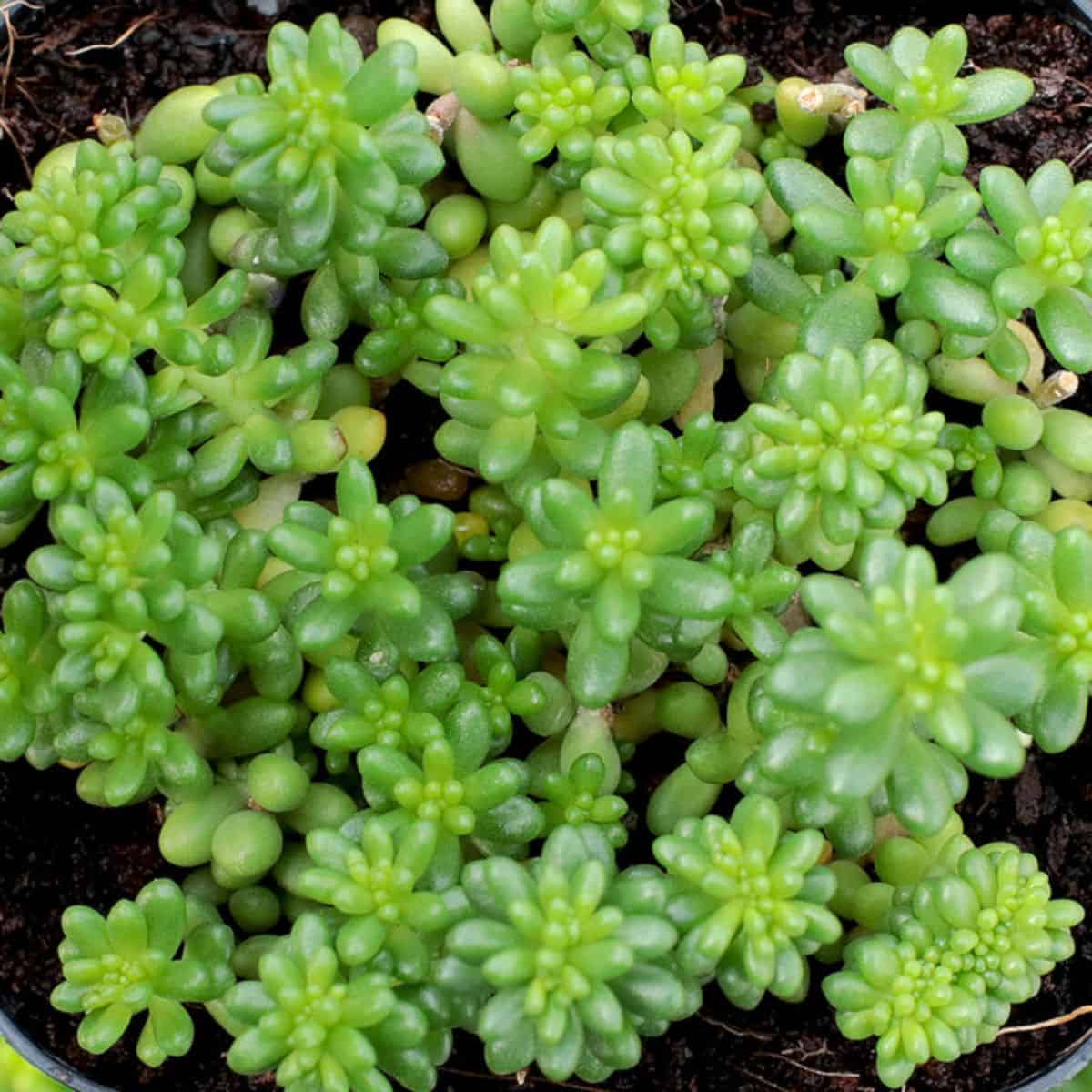
Buy it from:
Hardiness: 5 - 10
Light Requirements: Open sun
Common Name: Borchii Sport
Dasyphyllum
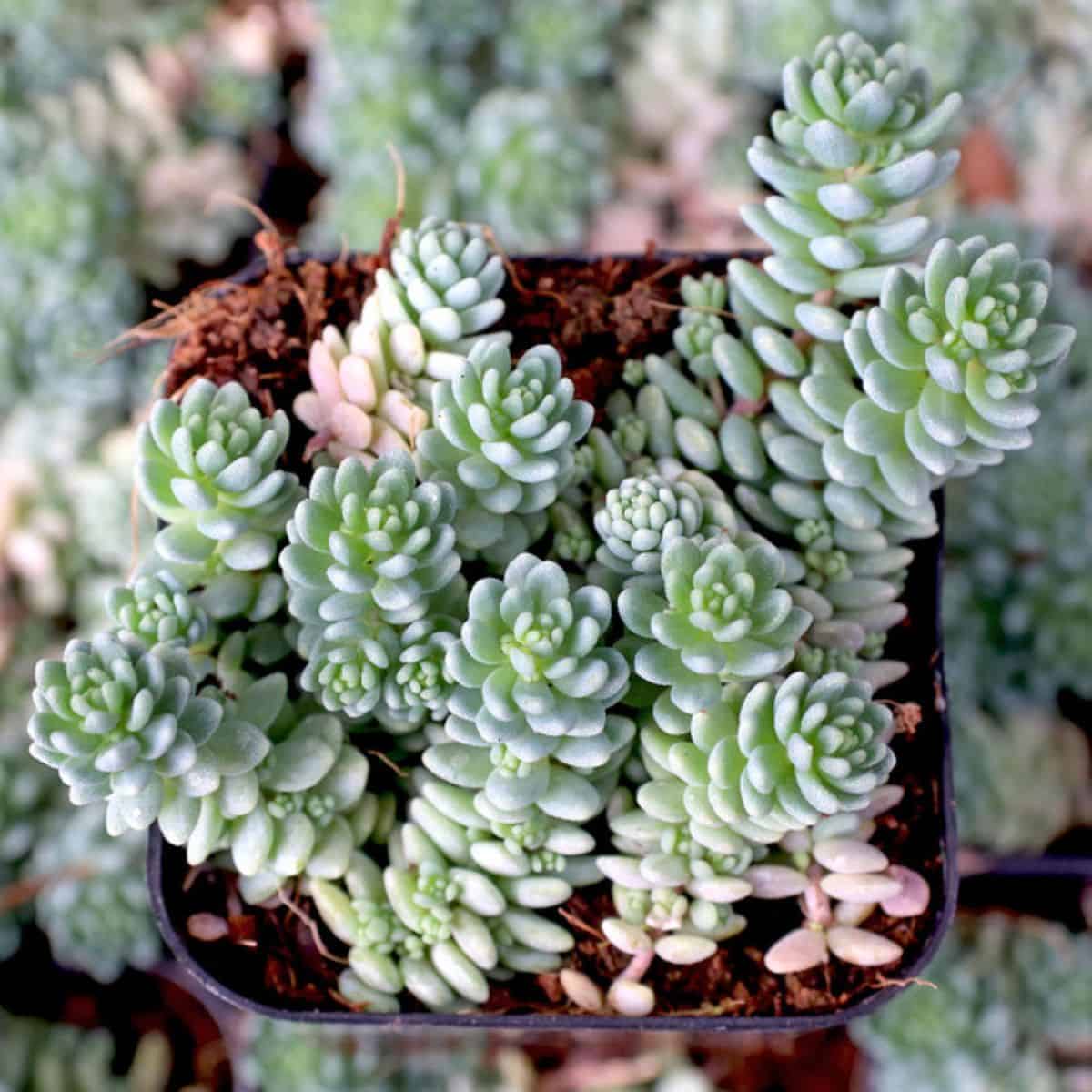
Buy it from:
Hardiness: 7 - 10
Light Requirements: Open sun
Common Name: Himalayan Skies
Oryzifolium
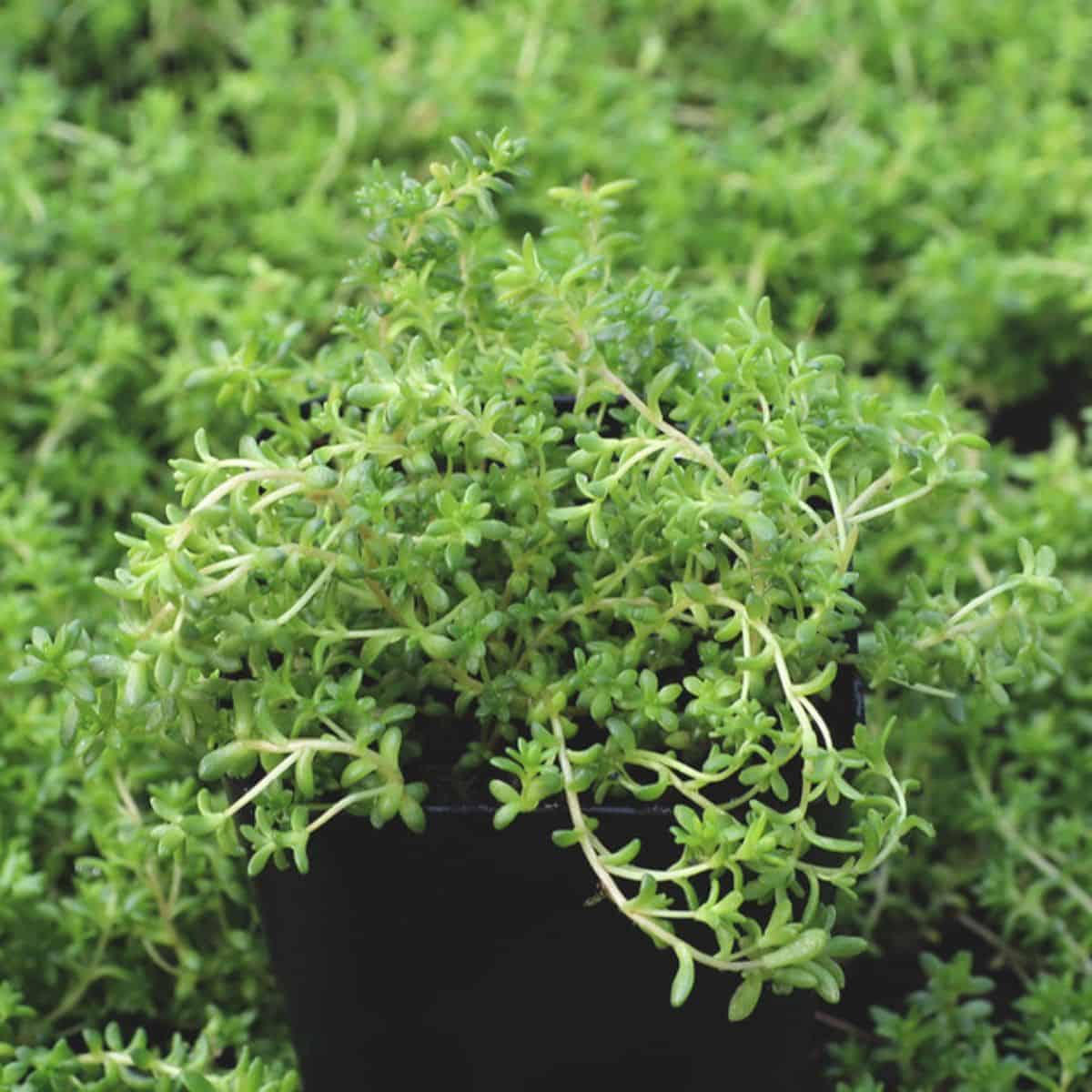
Buy it from:
Hardiness: 5 - 10
Common Name: Tiny Form
Sempervivum
Winter dormant succulents are always interesting especially if they are cold hardy such as most sempervivums. They are the commonly known hens and chicks and there are more varieties than you can count on your hands and feet. Sempervivums are some of the hardest succulents to kill so don’t hesitate to collect them!
Arachnoideum var.
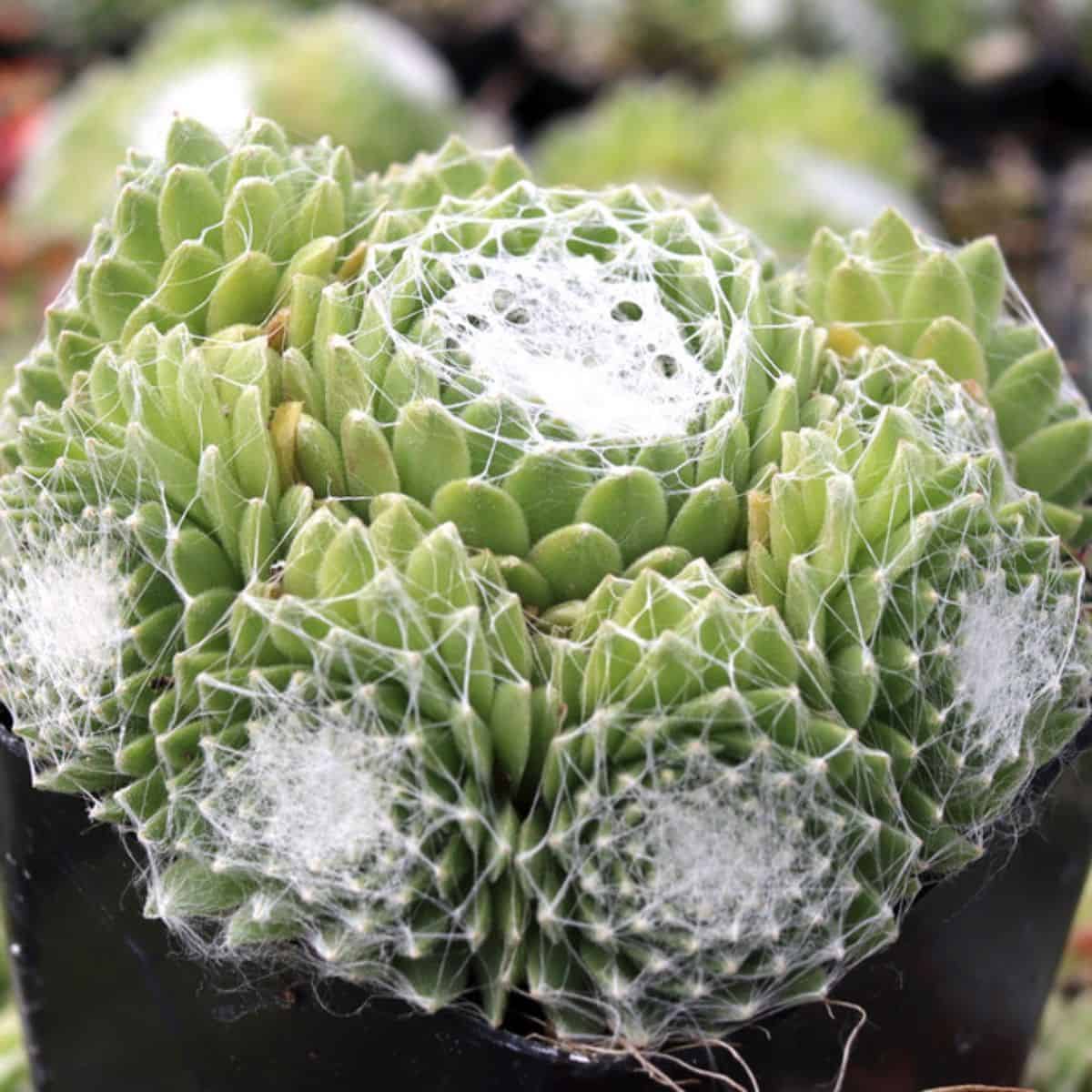
Buy it from:
Hardiness: 5 - 10
Light Requirements: Full indirect sunlight or partial sun
Common Name: Ali Baba
Sp. Moore
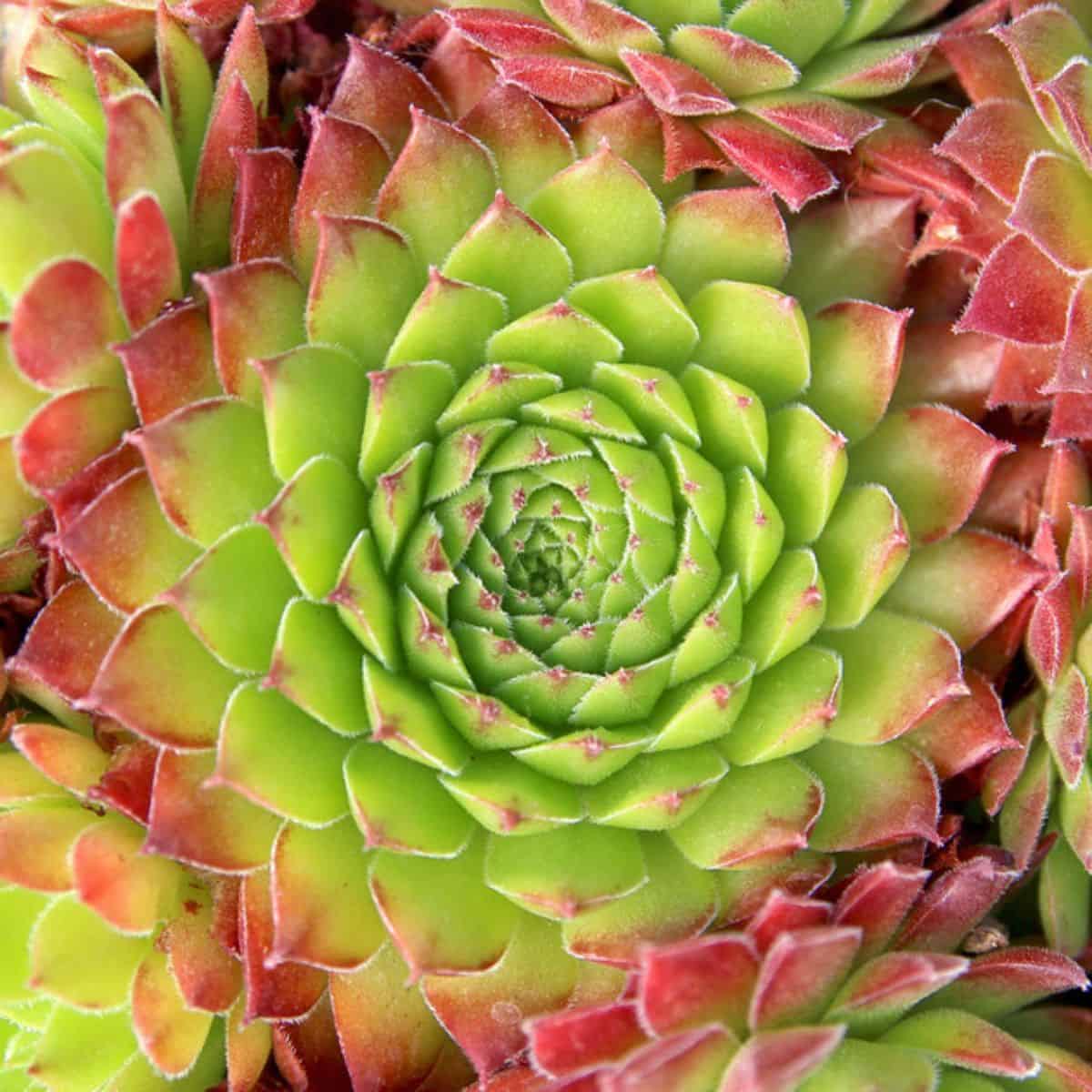
Buy it from:
Hardiness: 5 - 10
Light Requirements: Full indirect sunlight or partial sun
Common Name: Andrenor
Sp. Ford
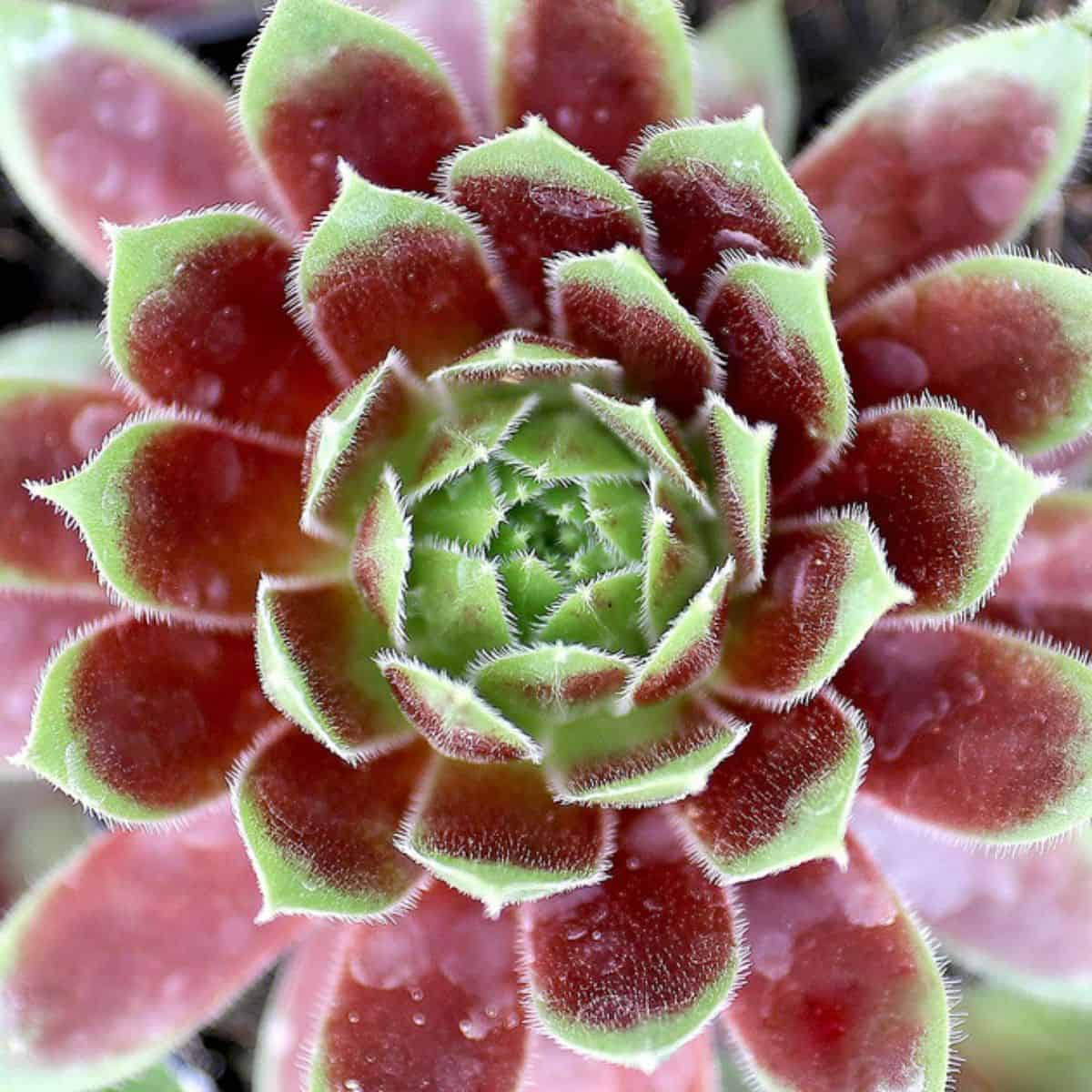
Buy it from:
Hardiness: 5 - 10
Light Requirements: Full indirect sunlight or partial sun
Common Name: Black Velvet
Braunii
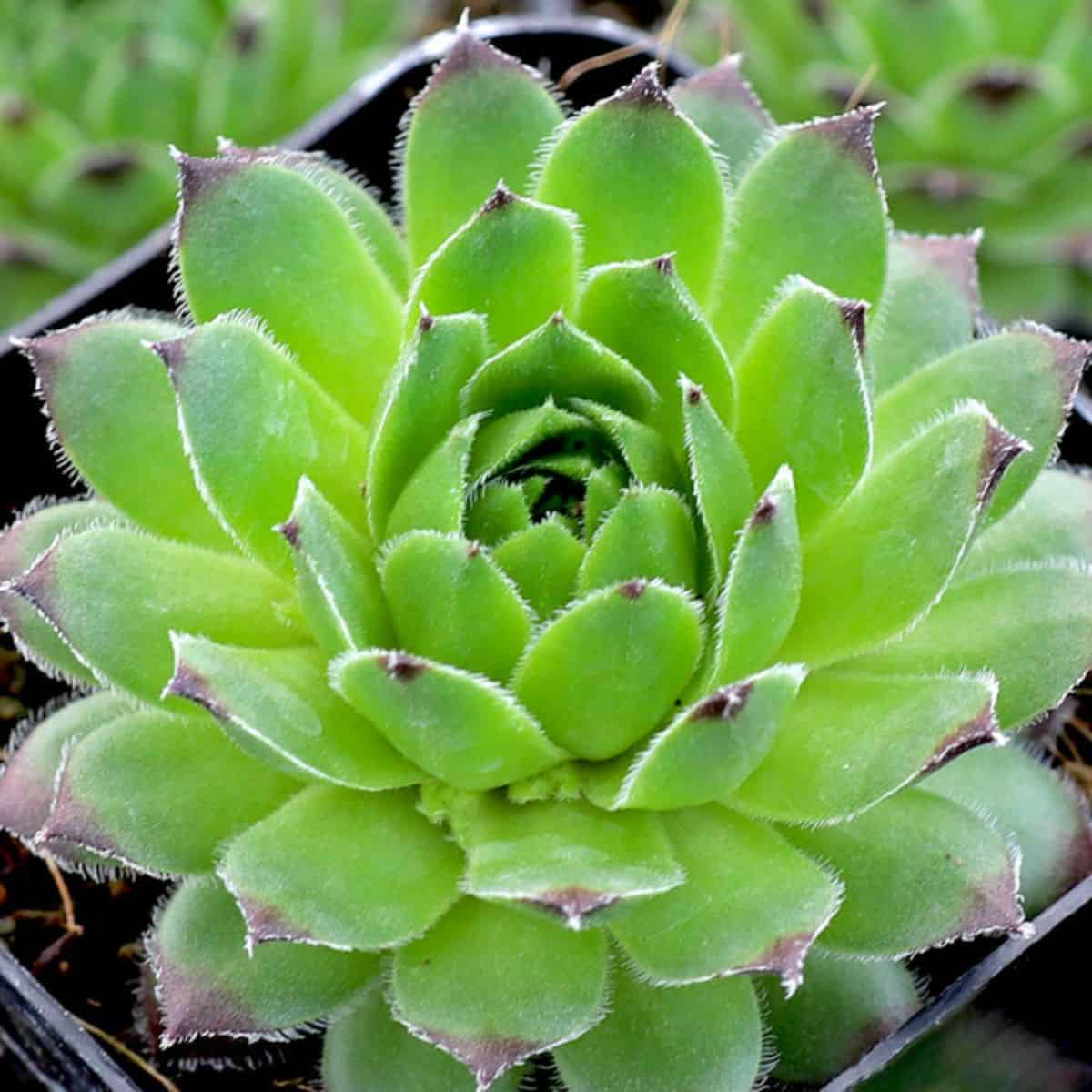
Buy it from:
Hardiness: 5 - 10
Light Requirements: Full indirect sunlight or partial sun
Common Name: None
Sp. Skrocki
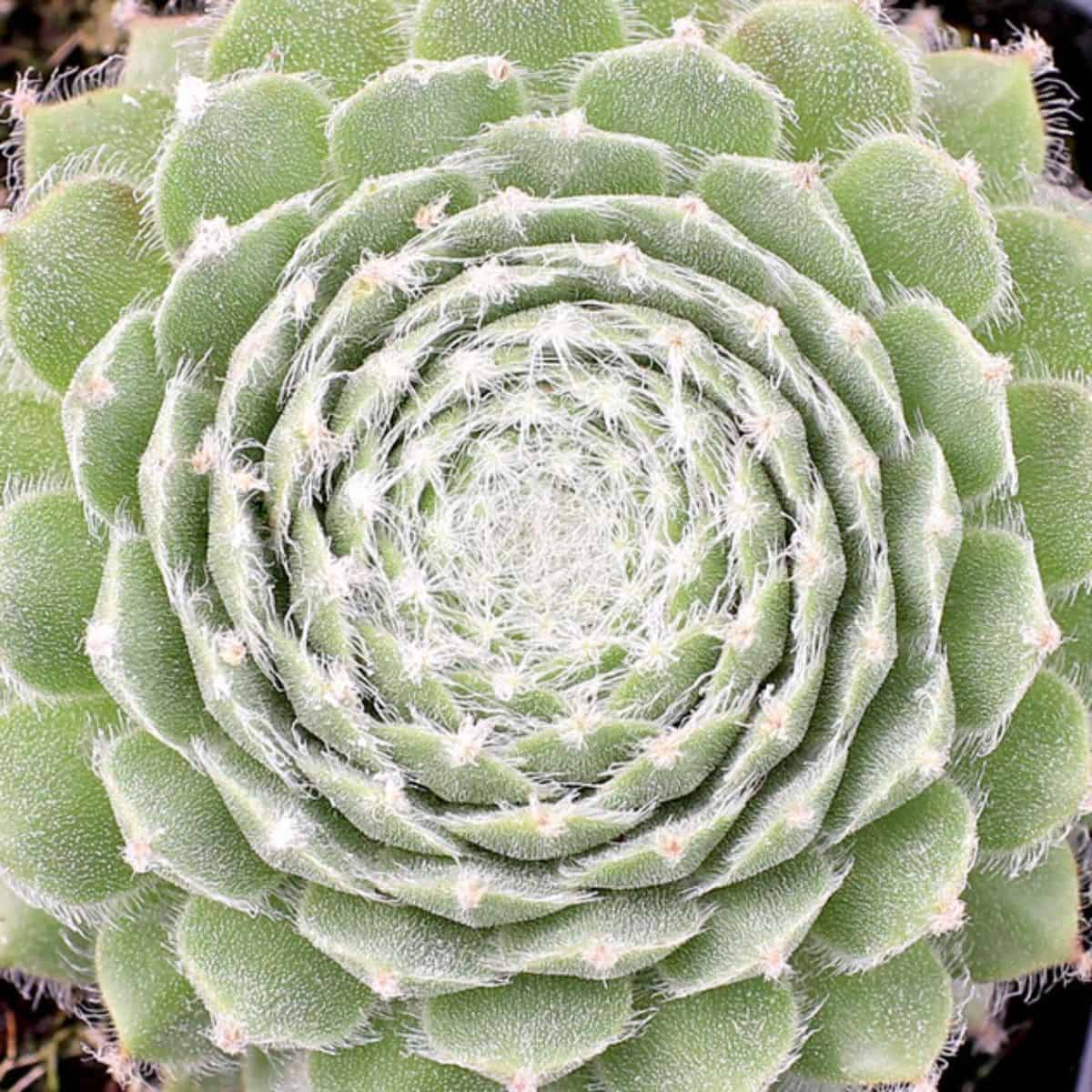
Buy it from:
Hardiness: 5 - 10
Light Requirements: Full indirect sunlight or partial sun
Common Name: Butterfly
Calcareum
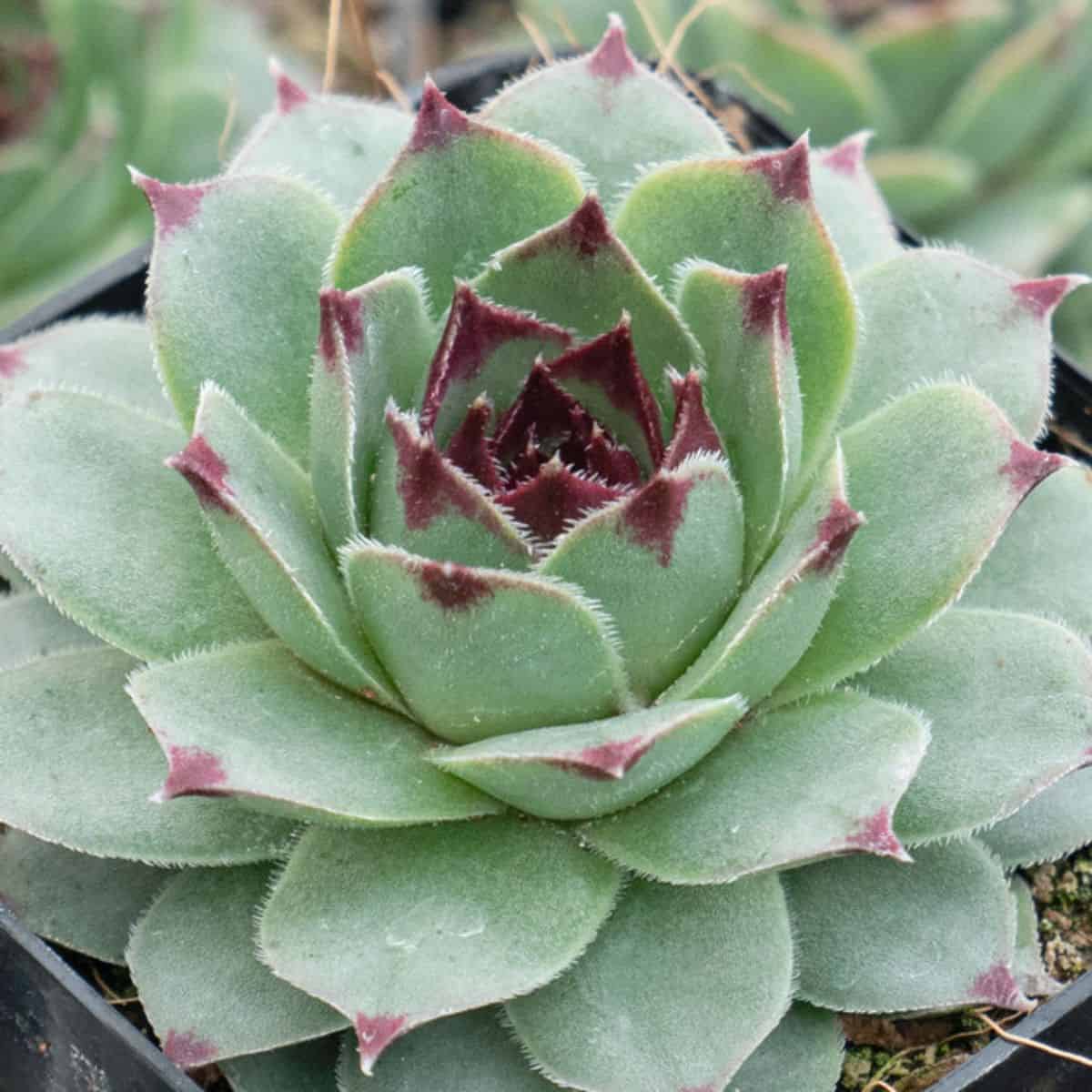
Buy it from:
Hardiness: 5 - 10
Light Requirements: Full indirect sunlight or partial sun
Common Name: Greenii
Sempervivum sp.
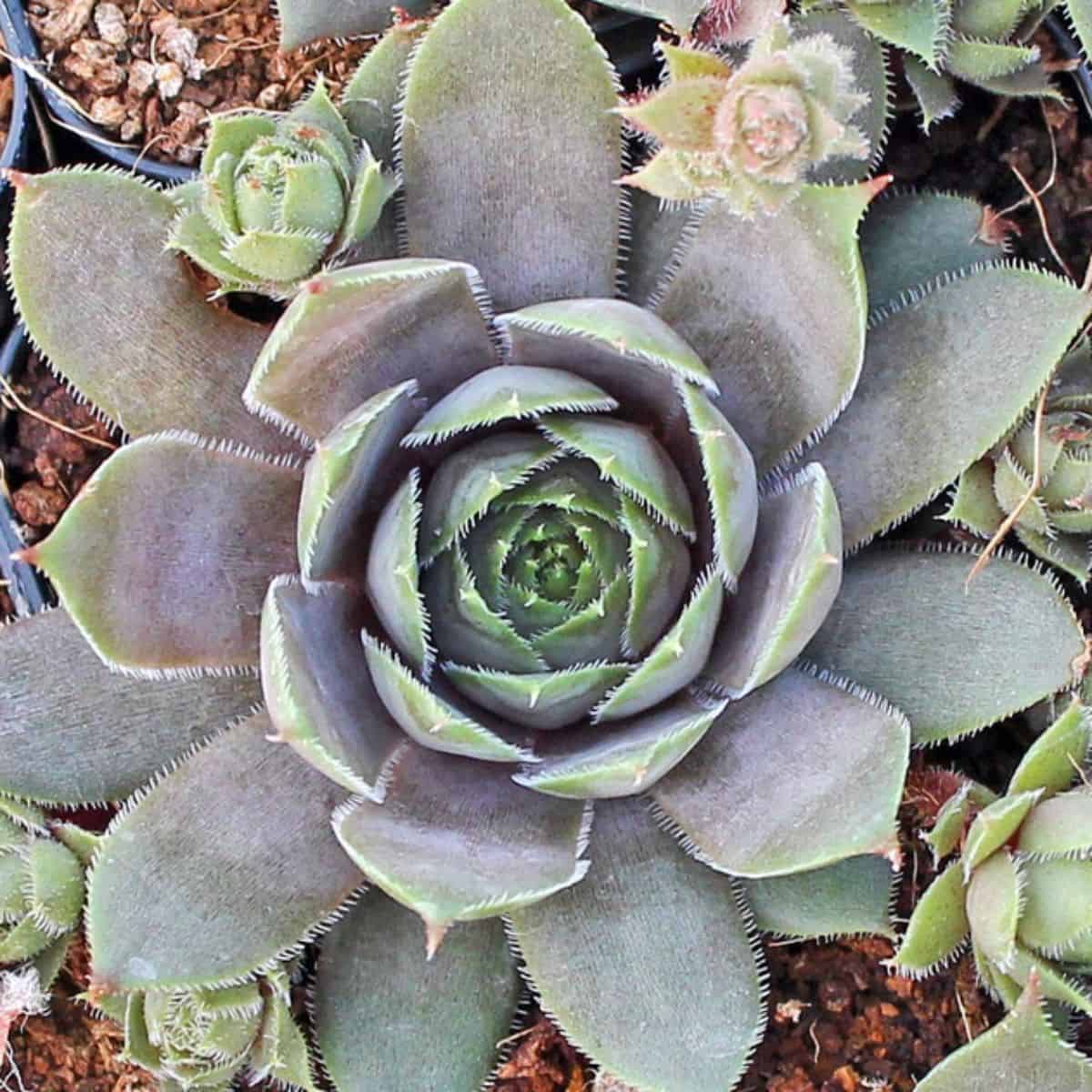
Buy it from:
Hardiness: 5 - 10
Light Requirements: Full indirect sunlight or partial sun
Common Name: Emerald Empress
Globiferum
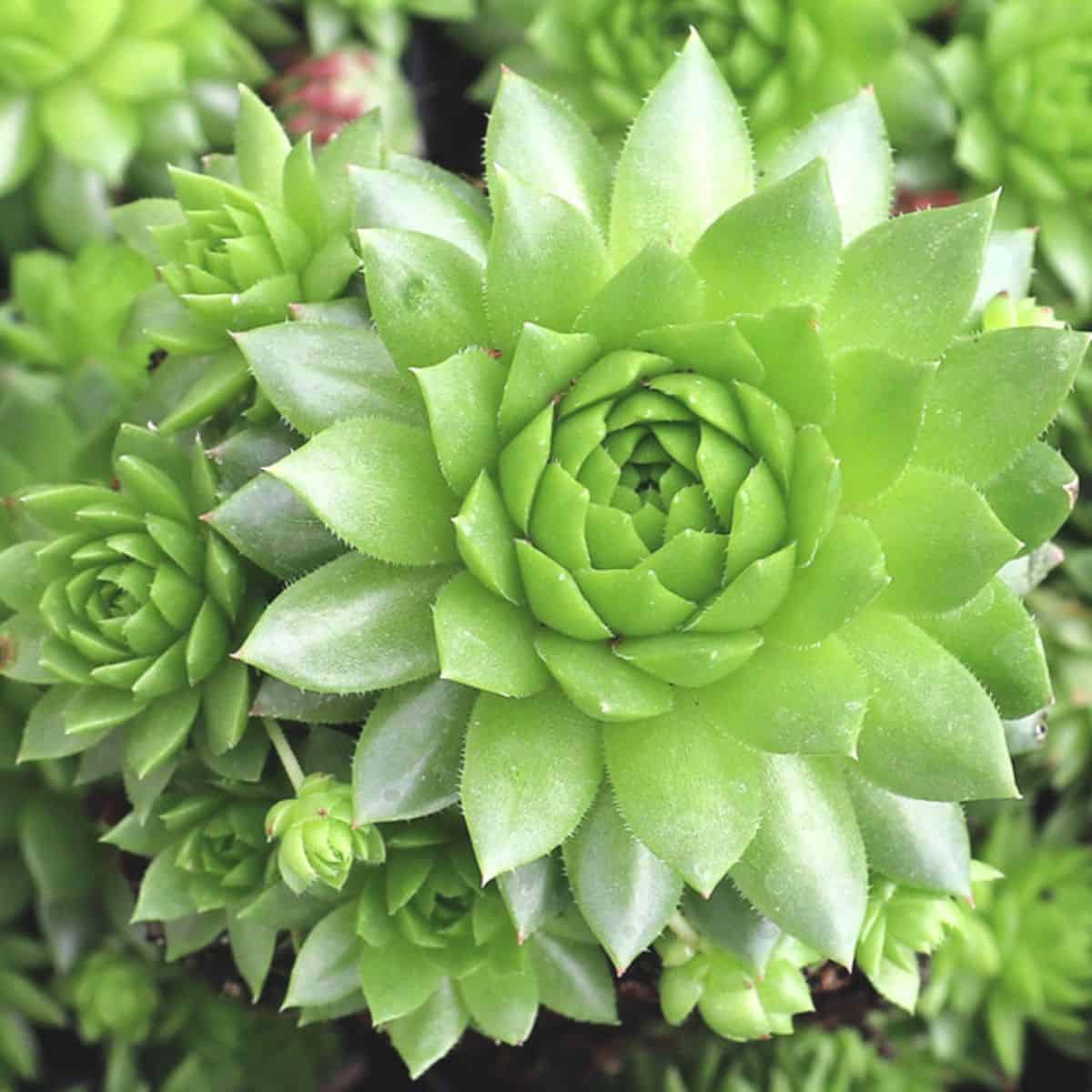
Buy it from:
Hardiness: 5 - 10
Light Requirements: Full indirect sunlight or partial sun
Common Name: Kokonose
Globiferum ssp. hirtum
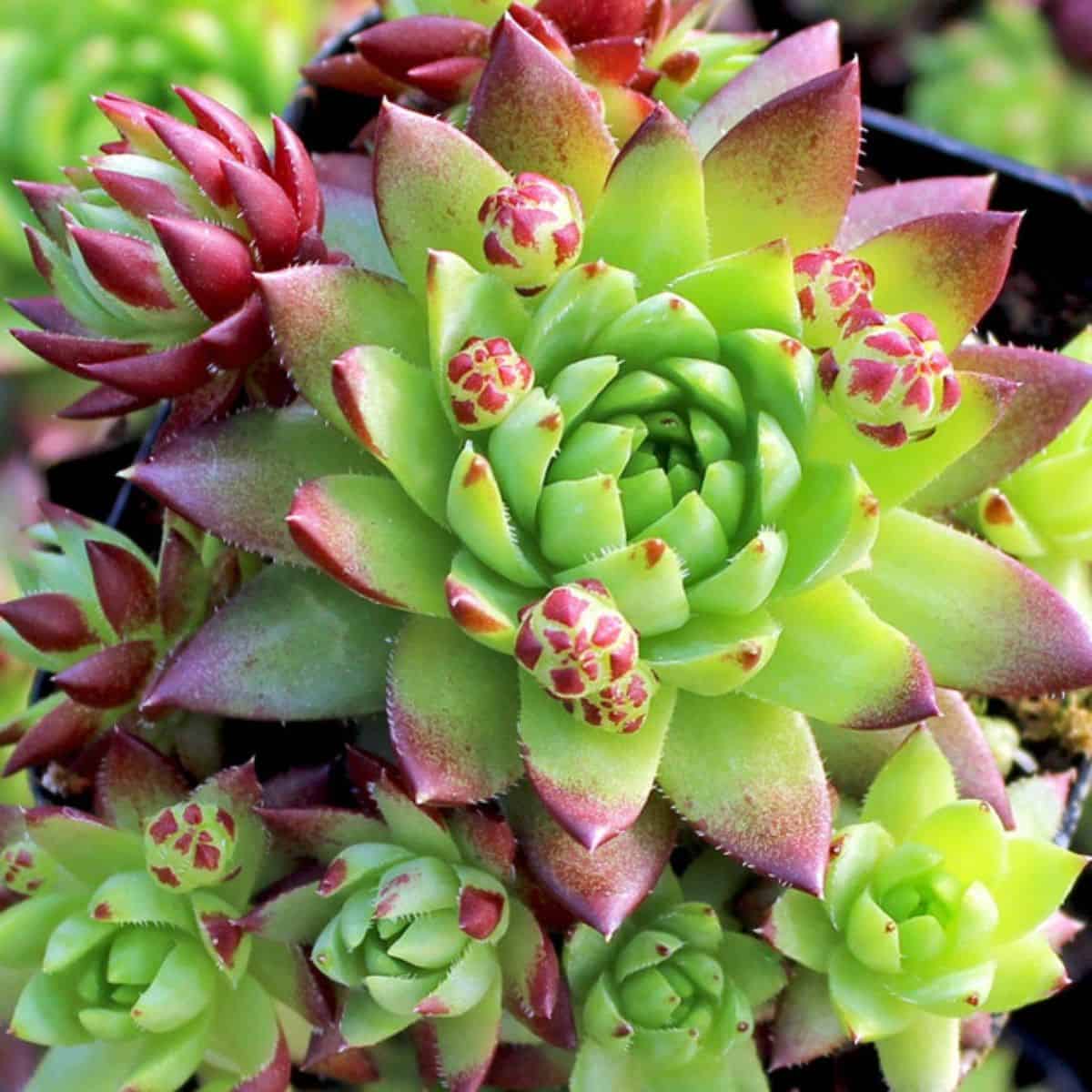
Buy it from:
Hardiness: 5 – 10
Light Requirements: Full indirect sunlight or partial sun
Common Name: Emerald Spring
Heuffelii, Payne
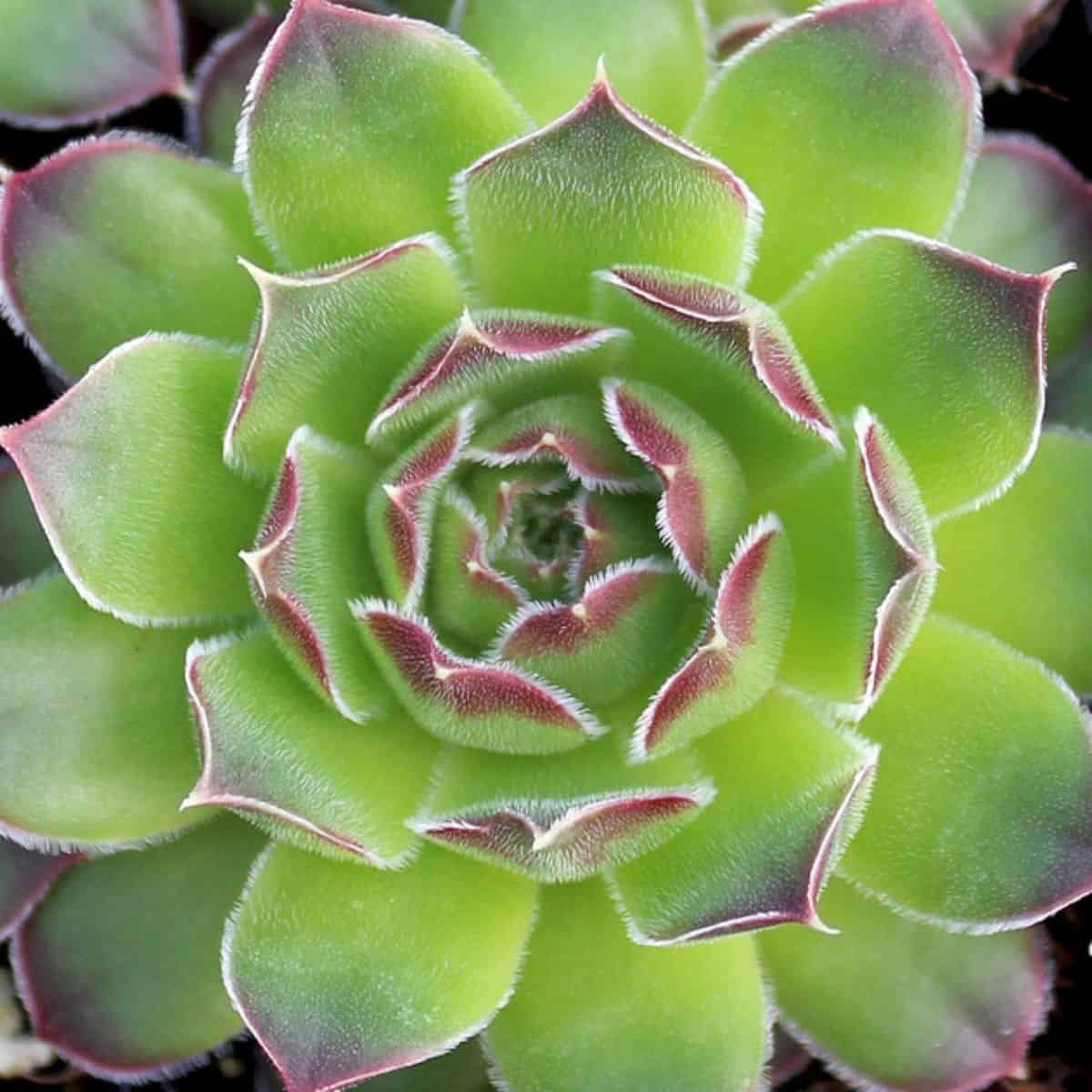
Buy it from:
Hardiness: 4 - 10
Light Requirements: Full indirect sunlight or partial sun
Common Name: Apache
Heuffelii, Fearnley
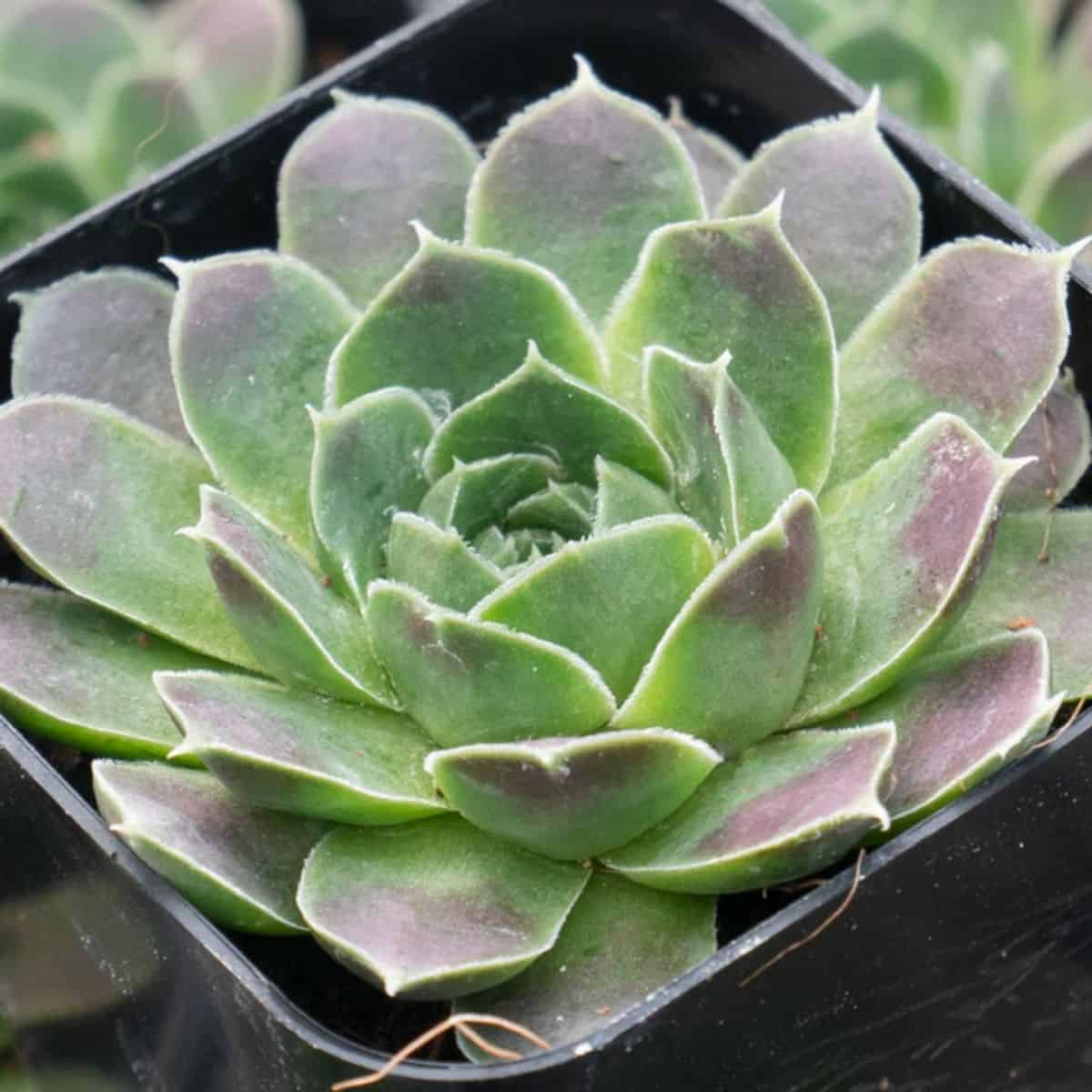
Buy it from:
Hardiness: 4 - 10
Light Requirements: Full indirect sunlight or partial sun
Common Name: Beacon Hill
Heuffelii, Ford
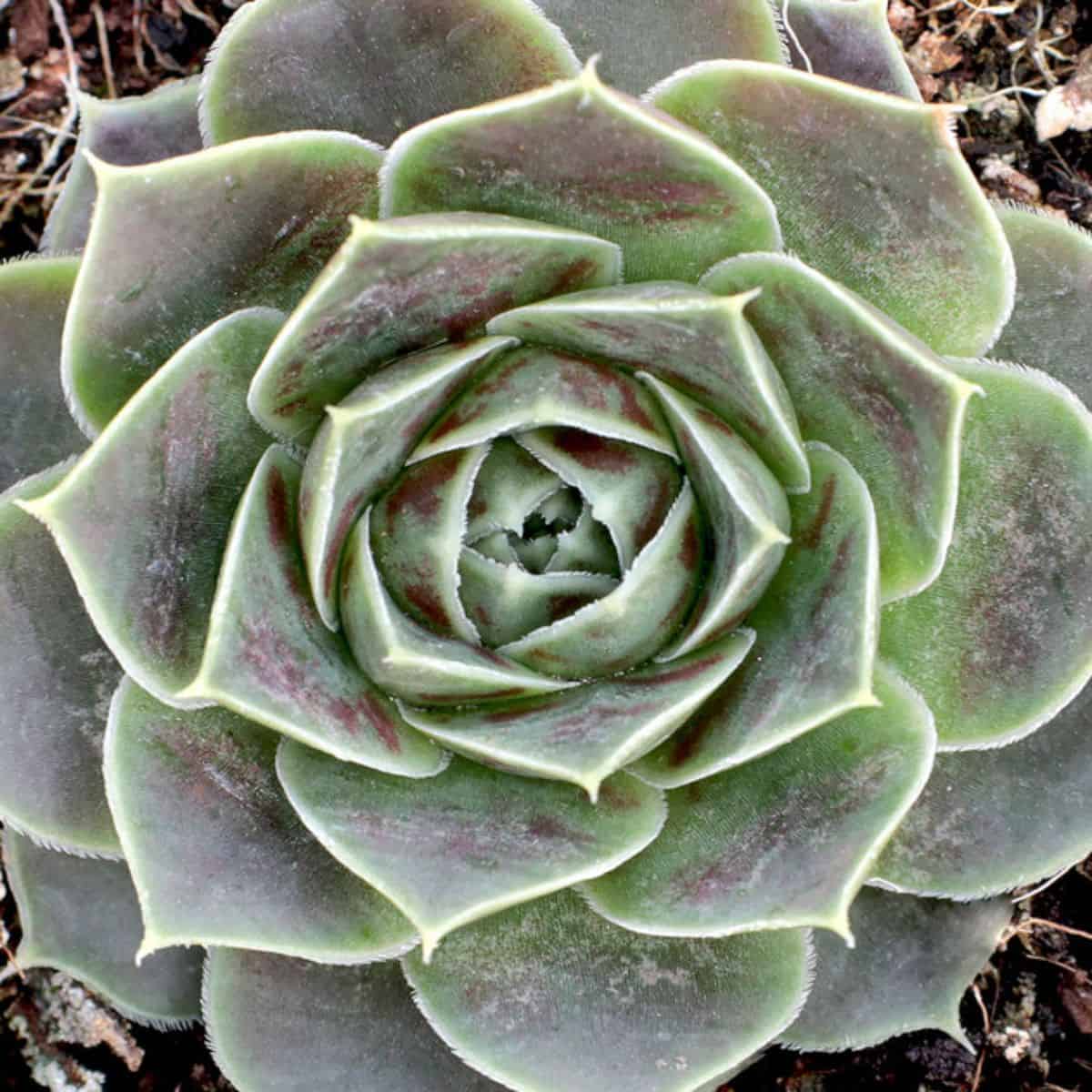
Buy it from:
Hardiness: 4 - 10
Light Requirements: Full indirect sunlight or partial sun
Common Name: Bermuda
Heuffelii, Ford
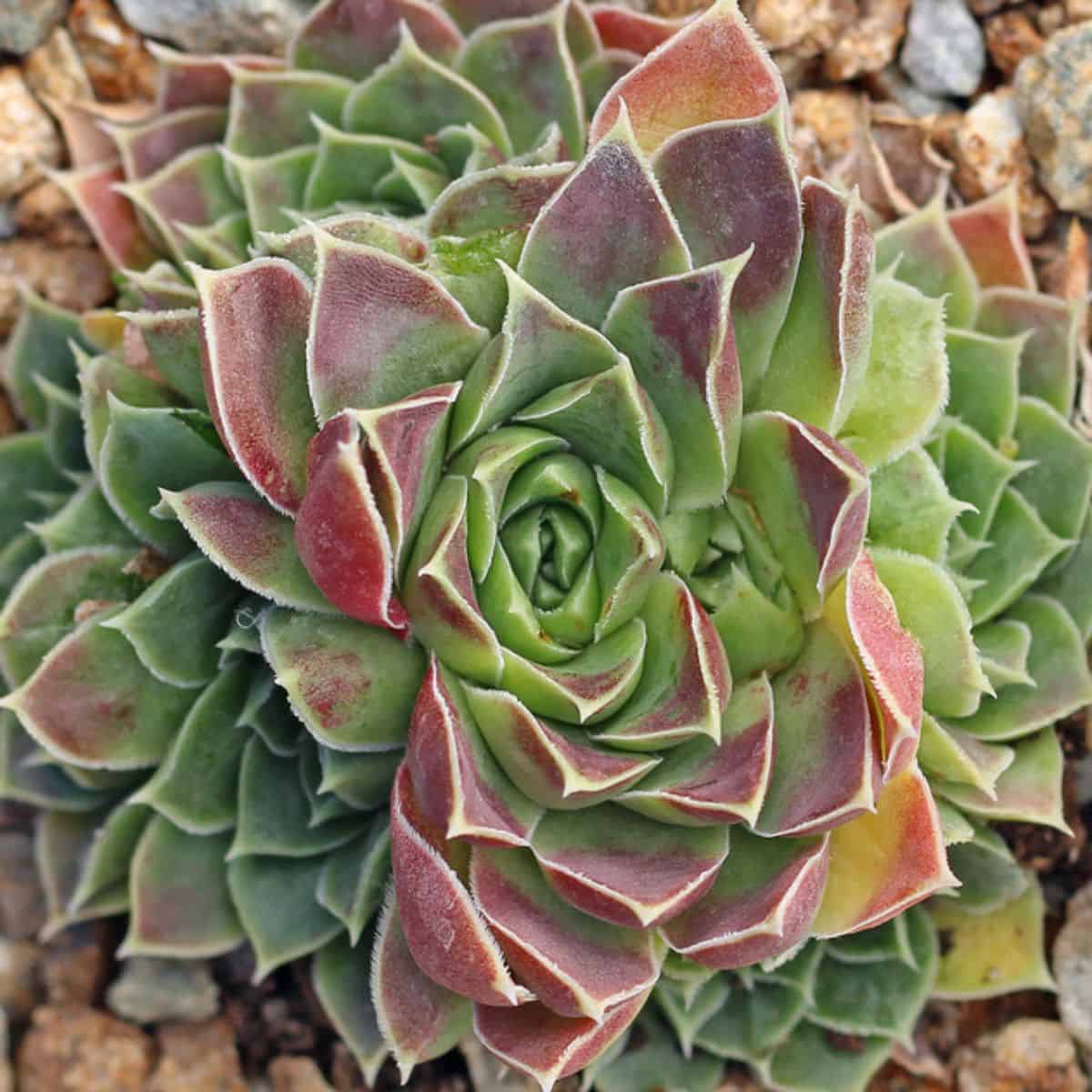
Buy it from:
Hardiness: 4 - 10
Light Requirements: Full indirect sunlight or partial sun
Common Name: Cameo
Heuffelii, Ford
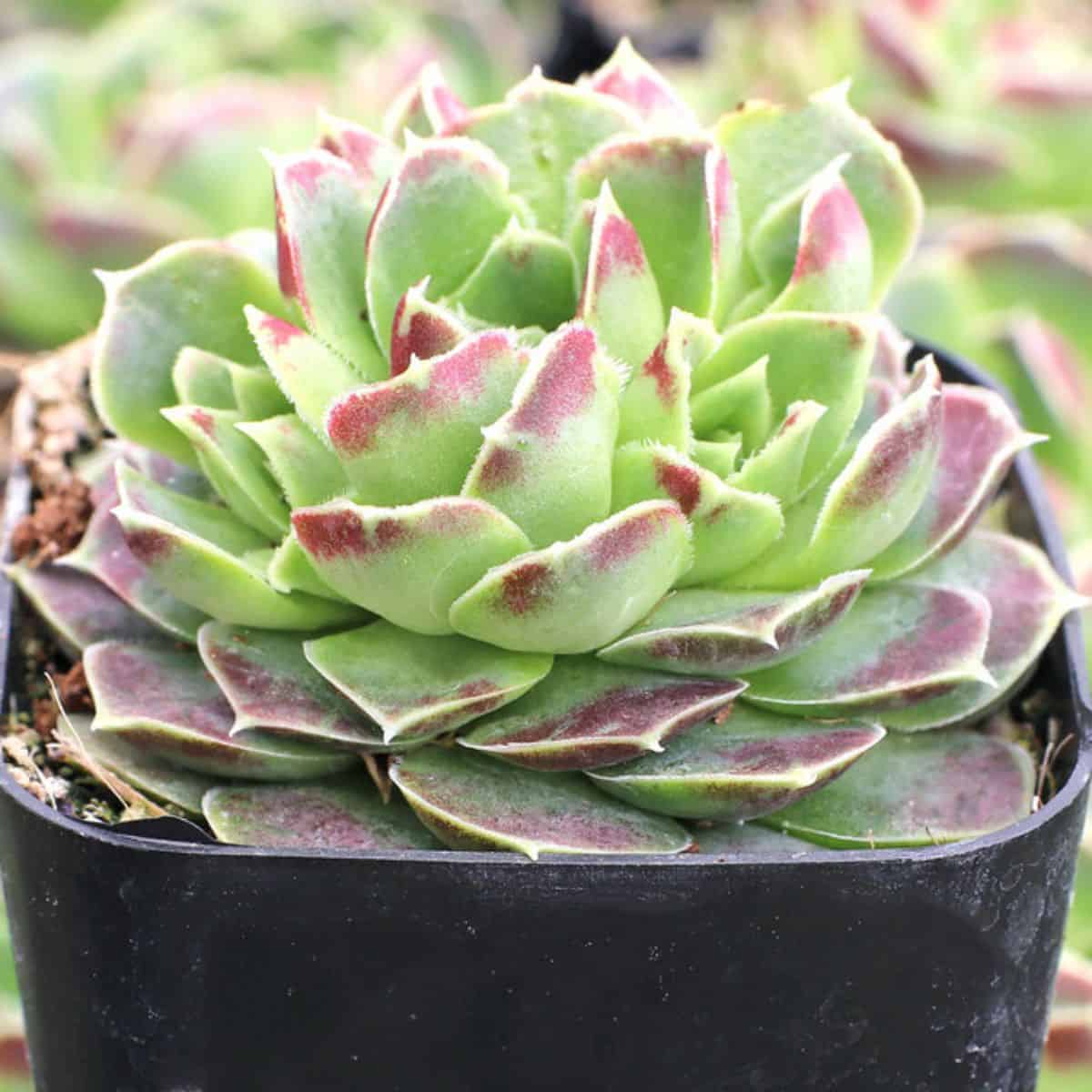
Buy it from:
Hardiness: 4 - 10
Light Requirements: Full indirect sunlight or partial sun
Common Name: Coral Reef
Heuffelii ESP
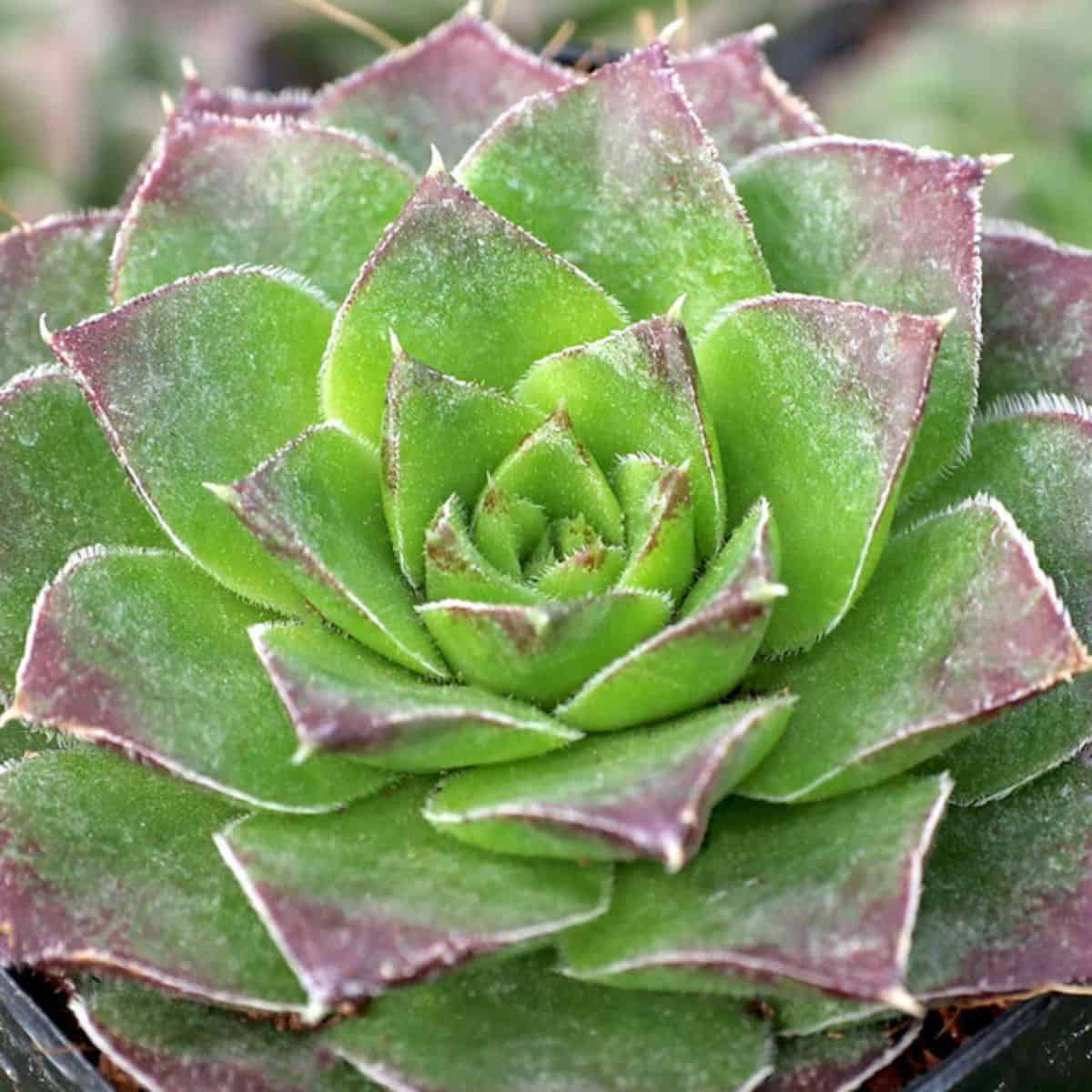
Buy it from:
Hardiness: 4 - 10
Light Requirements: Open sun
Common Name: ESP
Heuffelii, Versteeg
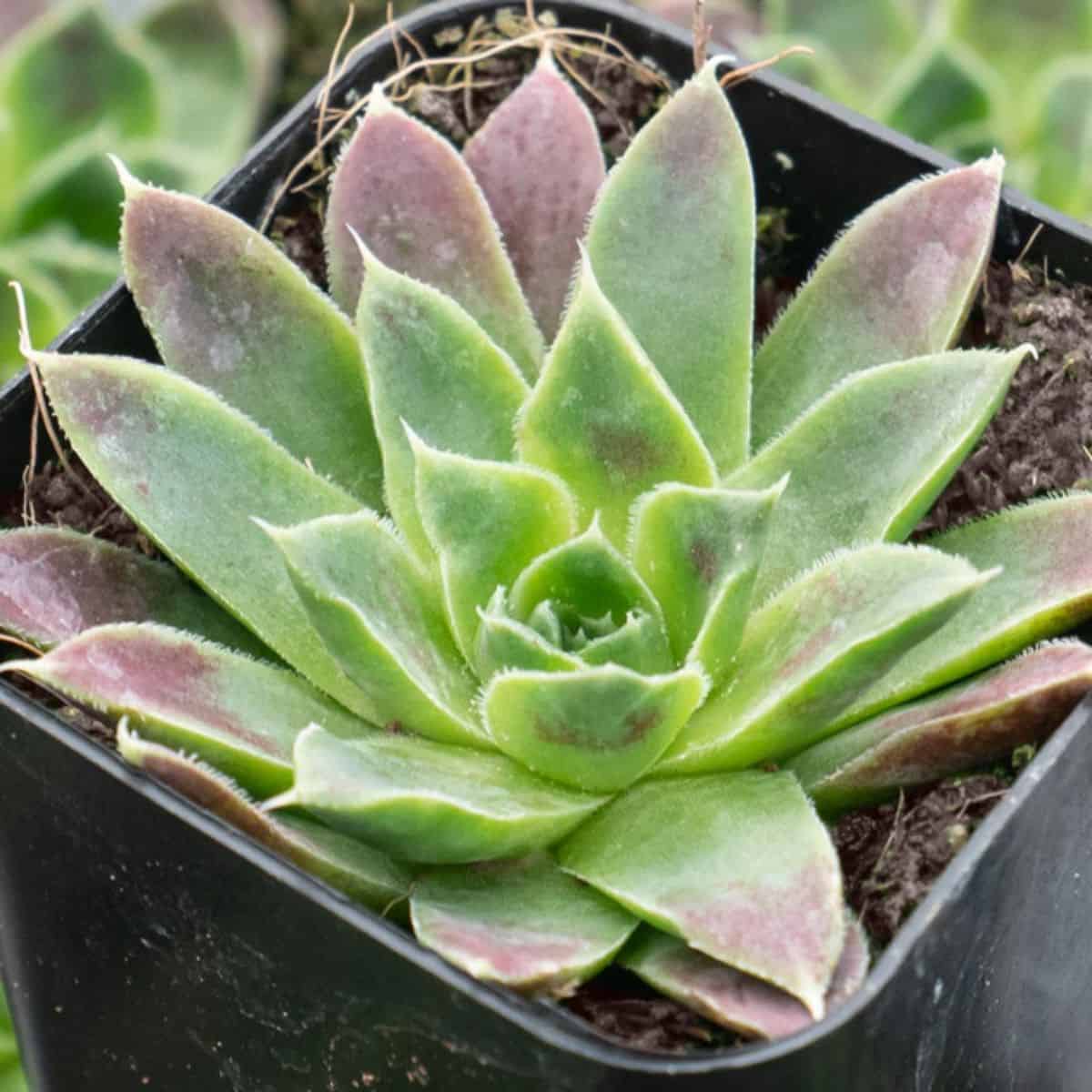
Buy it from:
Hardiness: 4 - 10
Light Requirements: Open sun
Common Name: Farao
Heuffelii, Mitchell and Mitchell
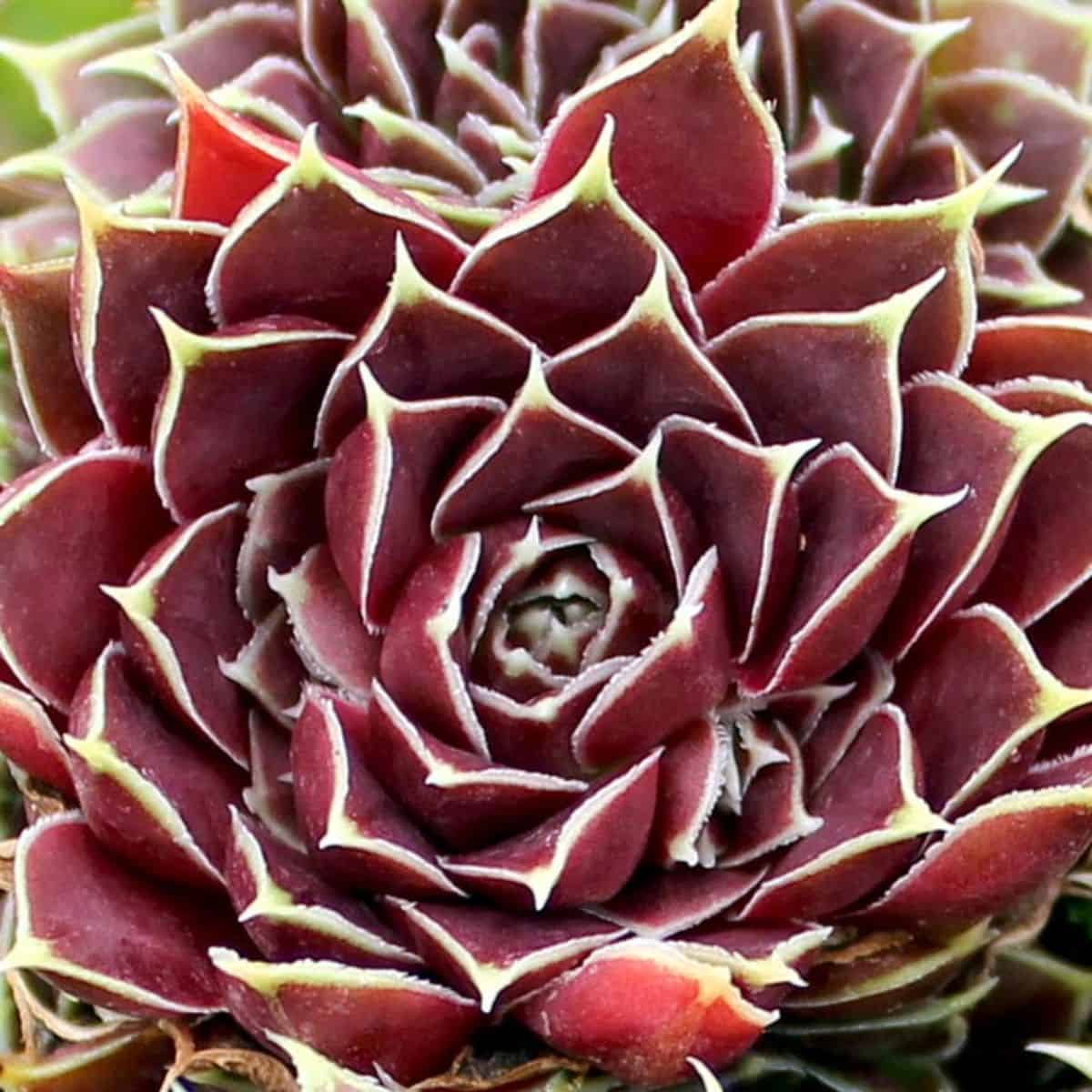
Buy it from:
Hardiness: 4 - 10
Light Requirements: Open sun
Common Name: Giuseppi Spiny
Huefflii, Versteeg
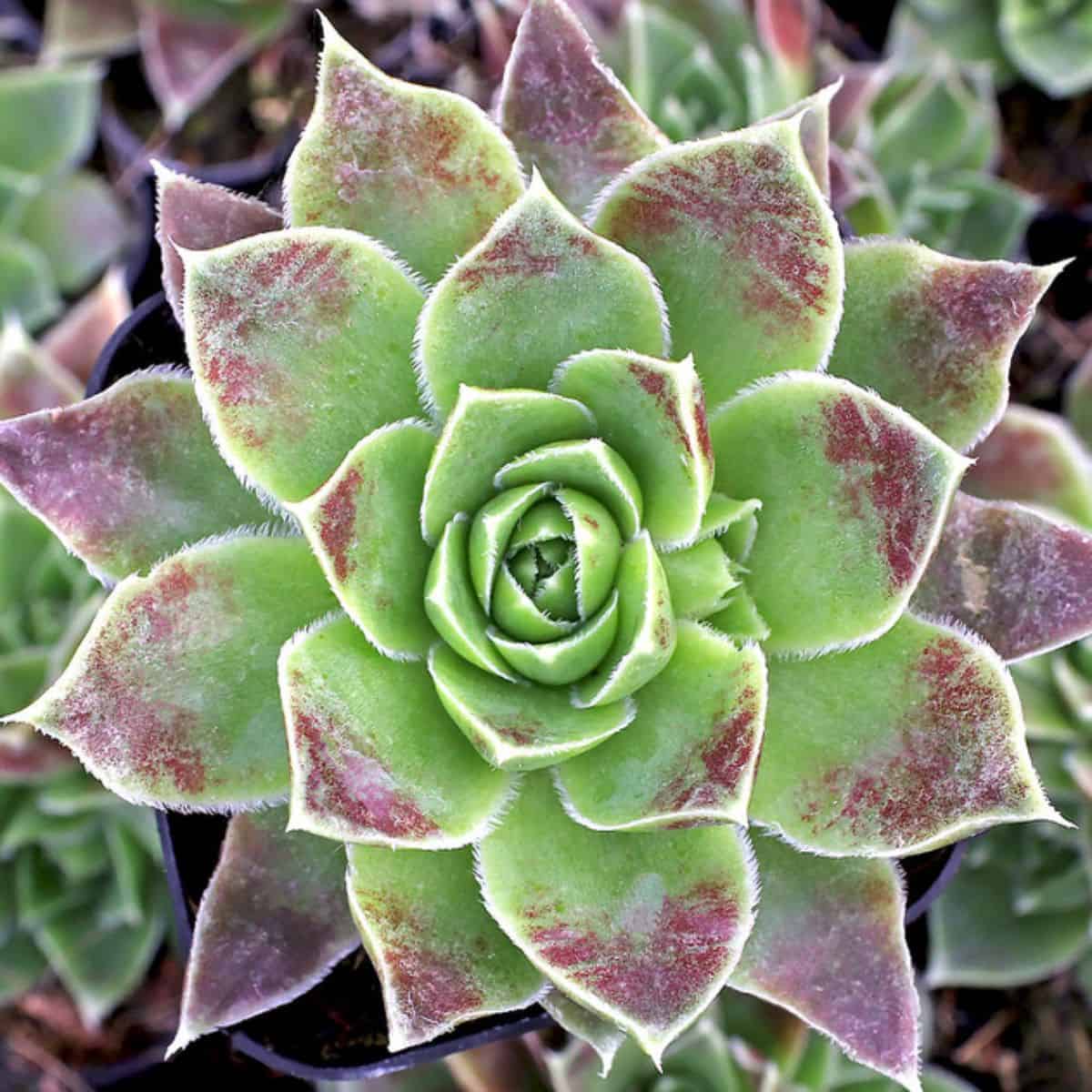
Buy it from:
Hardiness: 4 - 10
Light Requirements: Open sun
Common Name: Mont Rose
Heufflii
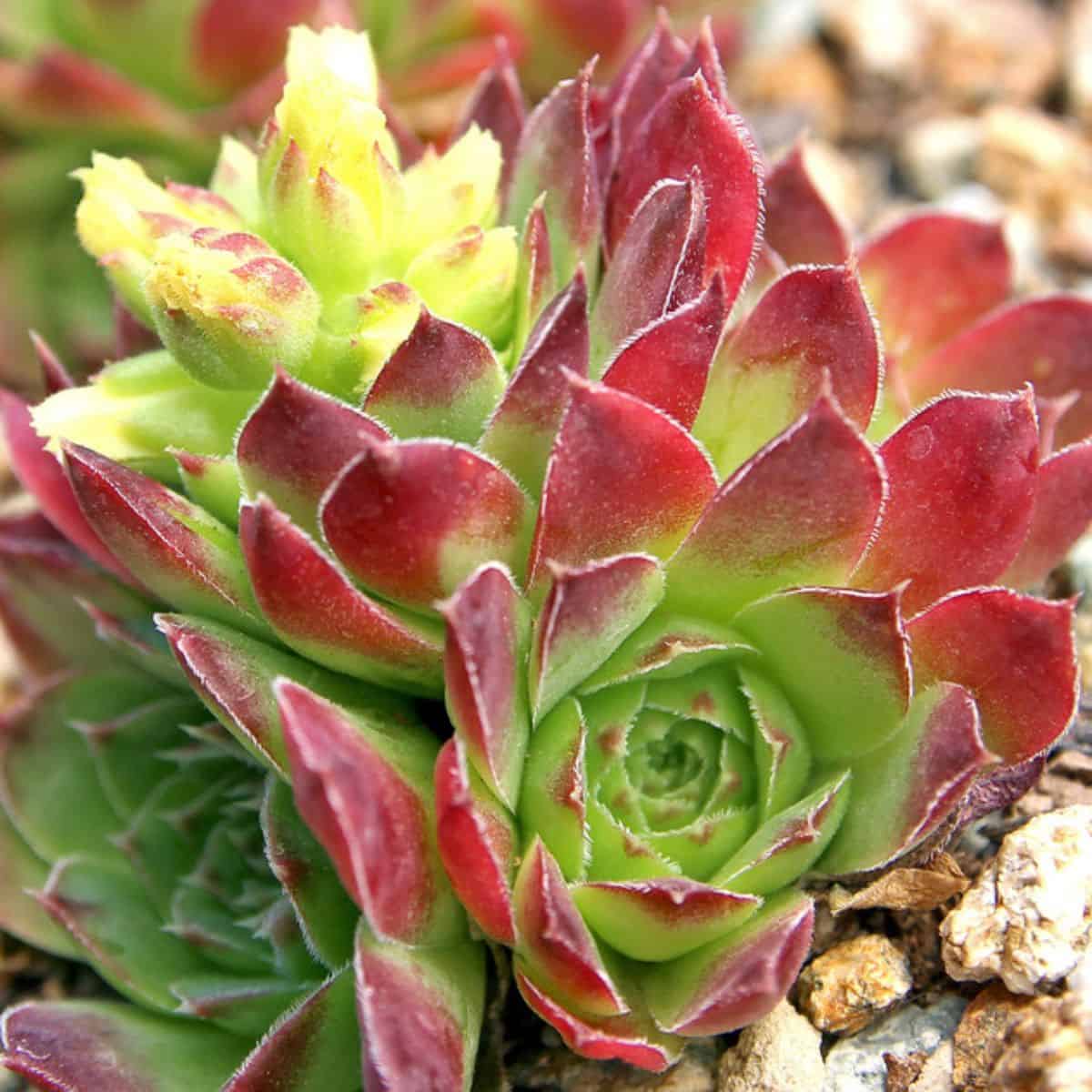
Buy it from:
Hardiness: 4 - 10
Light Requirements: Full indirect sunlight or partial sun
Common Name: Orange Tip
sp. Schara
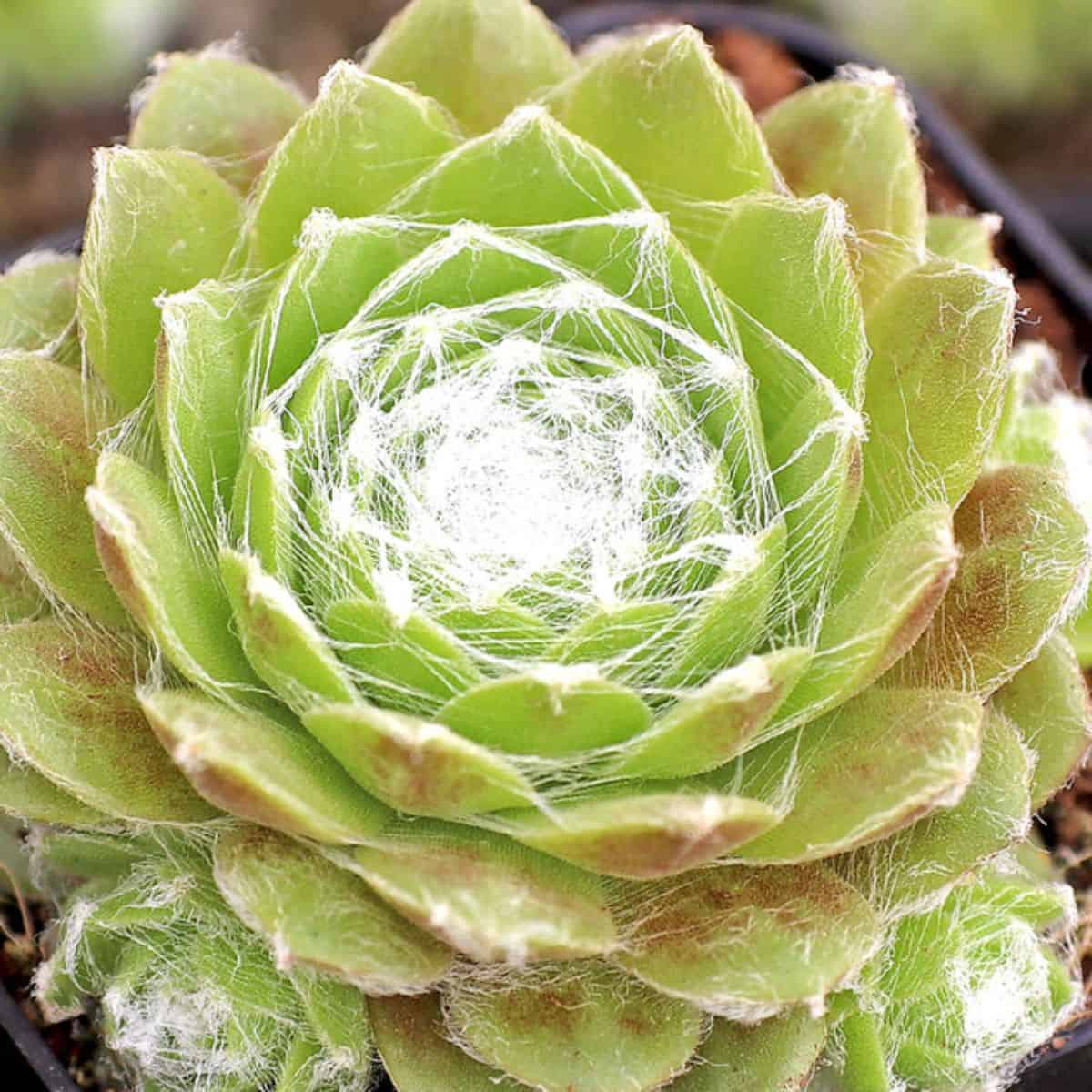
Buy it from:
Hardiness: 5 - 10
Light Requirements: Full indirect sunlight or partial sun
Common Name: Lemon Babies
sp. Vaughn
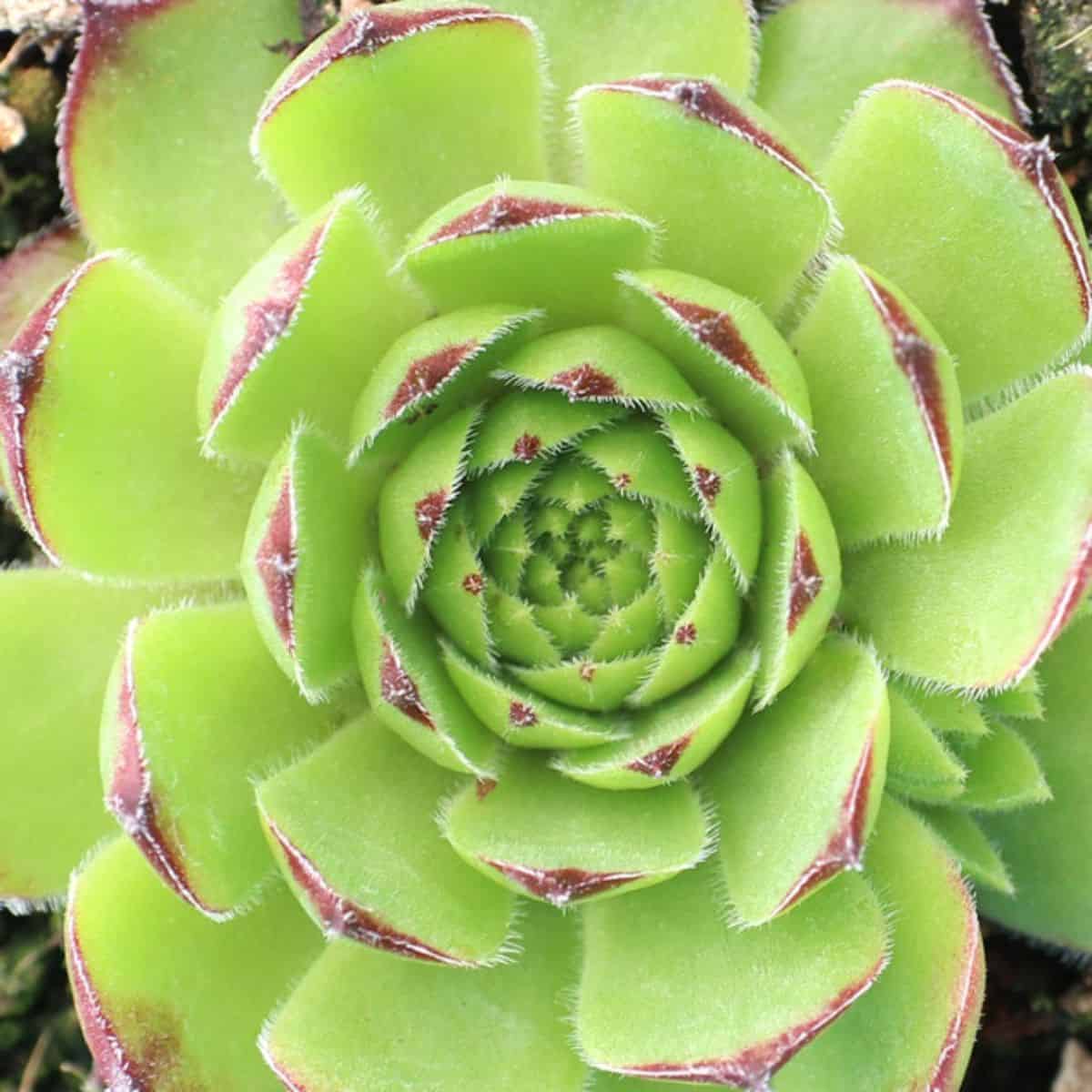
Buy it from:
Hardiness: 5 - 10
Light Requirements: Full indirect sunlight or partial sun
Common Name: Lime Frost
sp. Skrocki
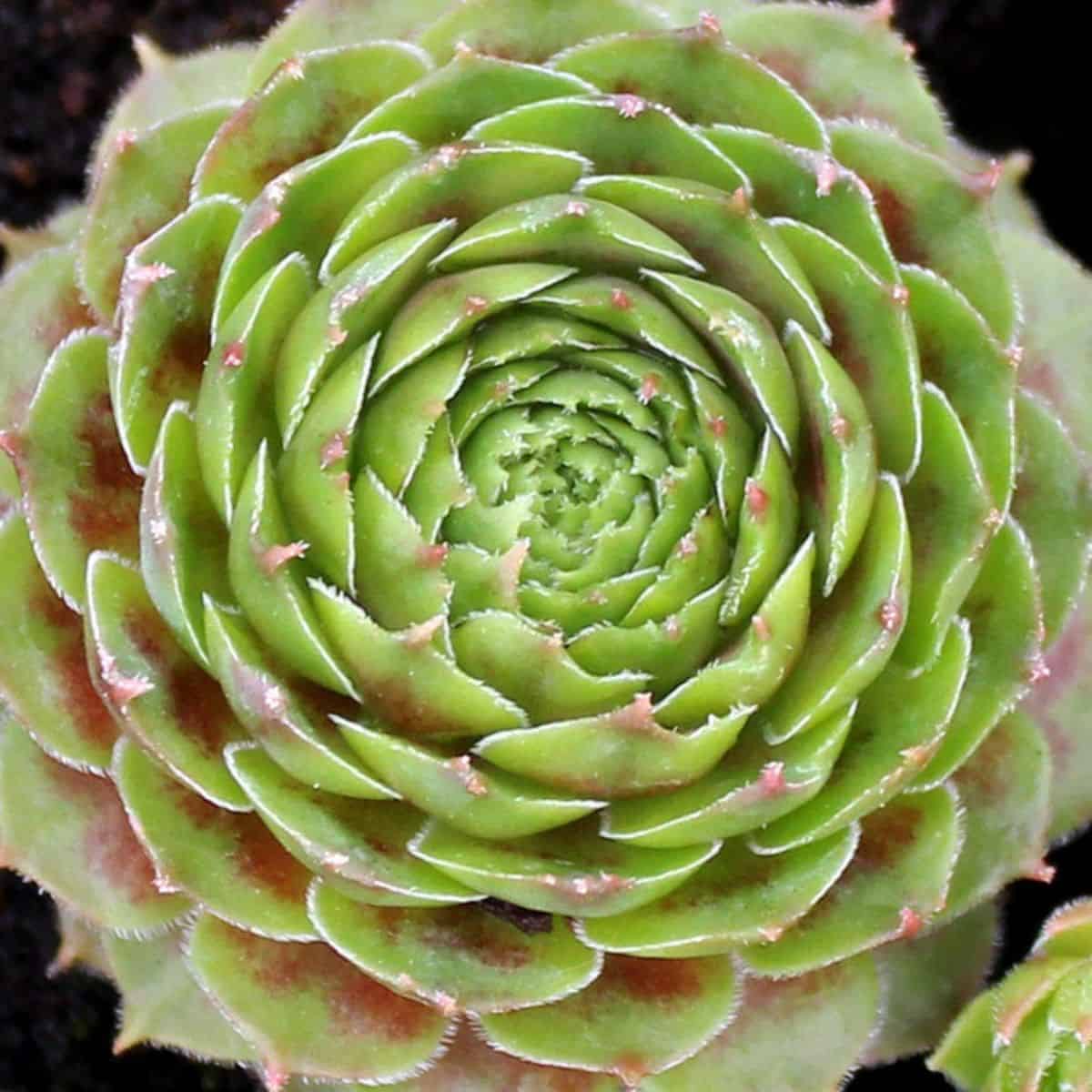
Buy it from:
Hardiness: 5 - 10
Light Requirements: Full indirect sunlight or partial sun
Common Name: Mars
montanum ssp. burnatii
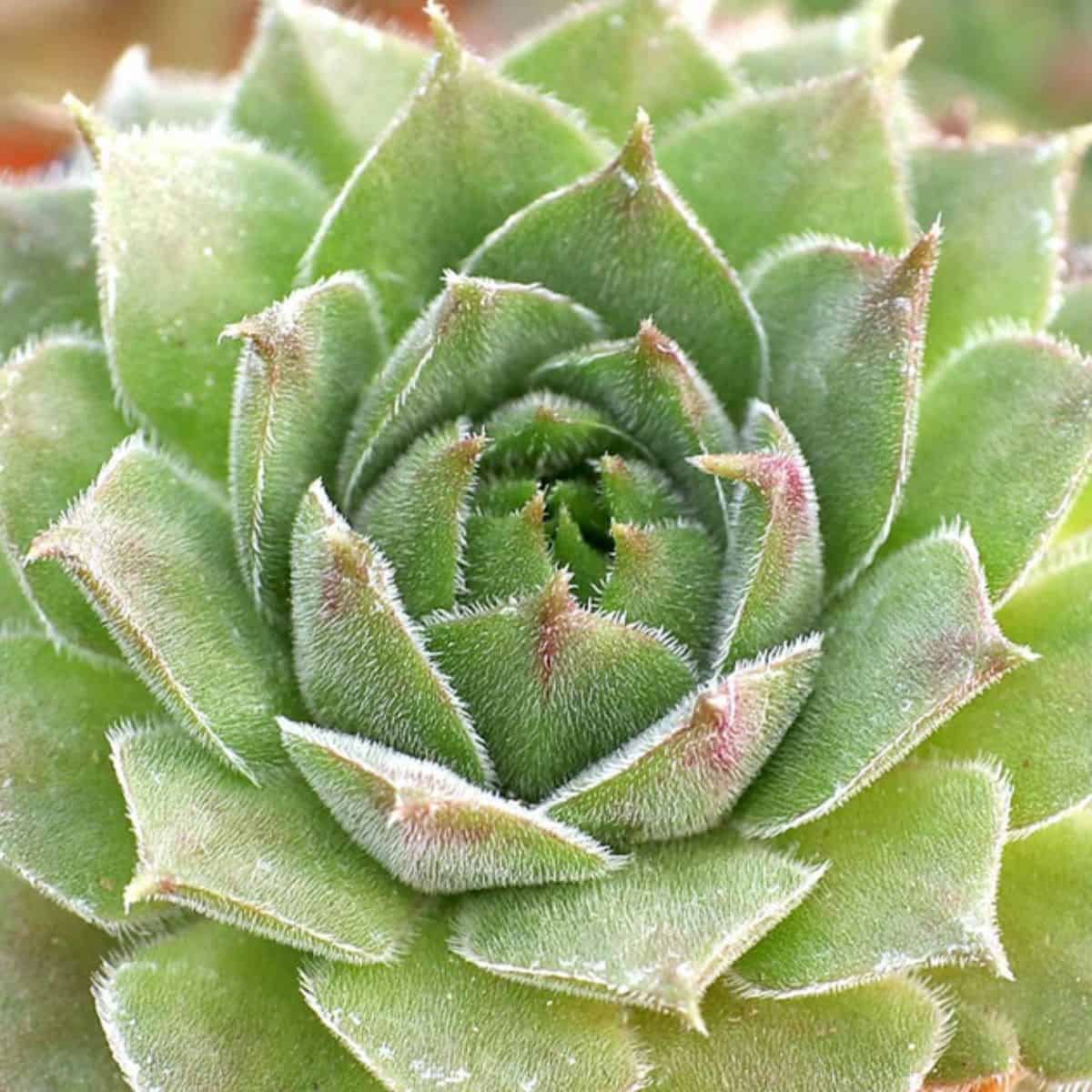
Buy it from:
Hardiness: 5 - 10
Light Requirements: Full indirect sunlight or partial sun
Common Name: None
Species
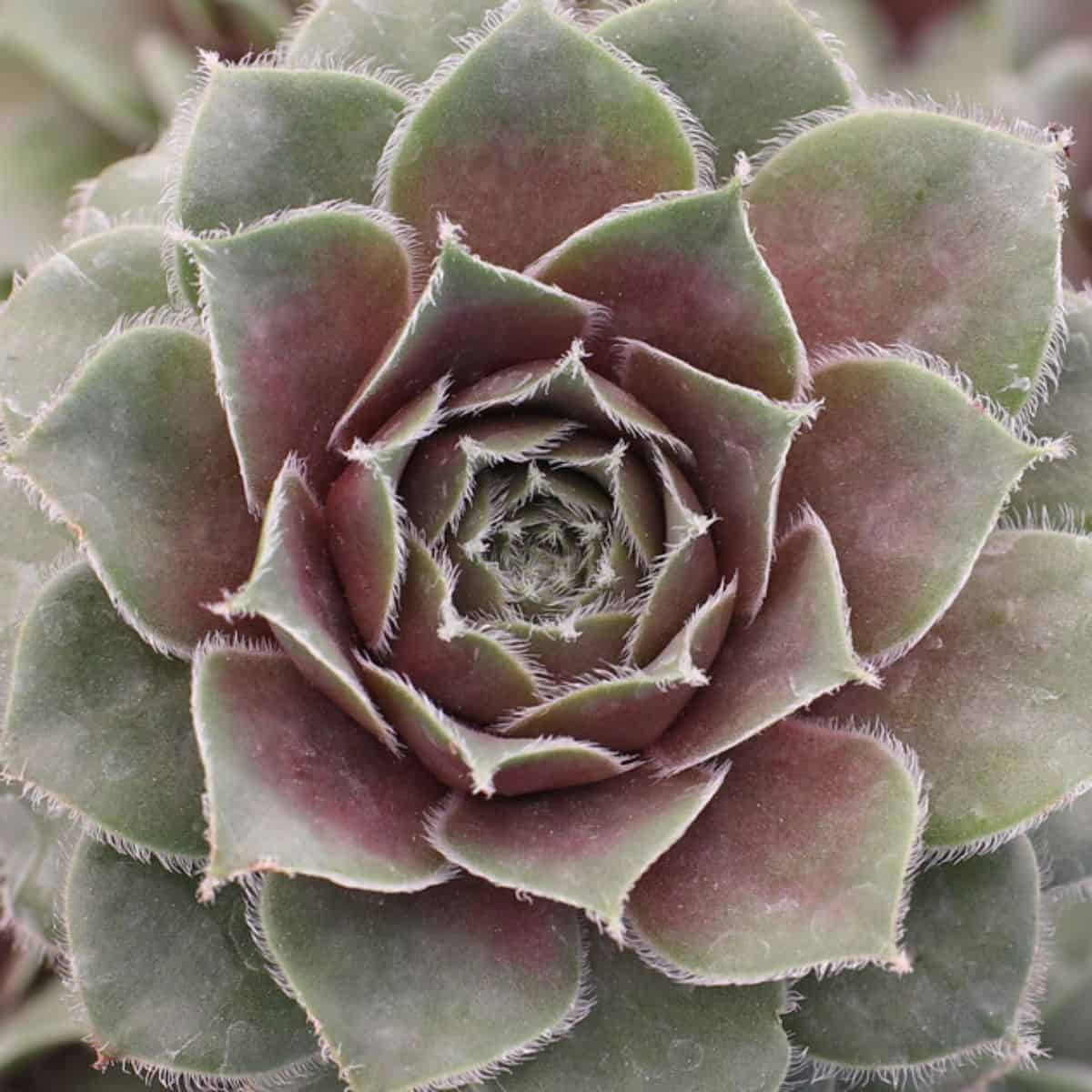
Buy it from:
Hardiness: 5 - 10
Light Requirements: Full indirect sunlight or partial sun
Common Name: Moss Rose
sp. Moore
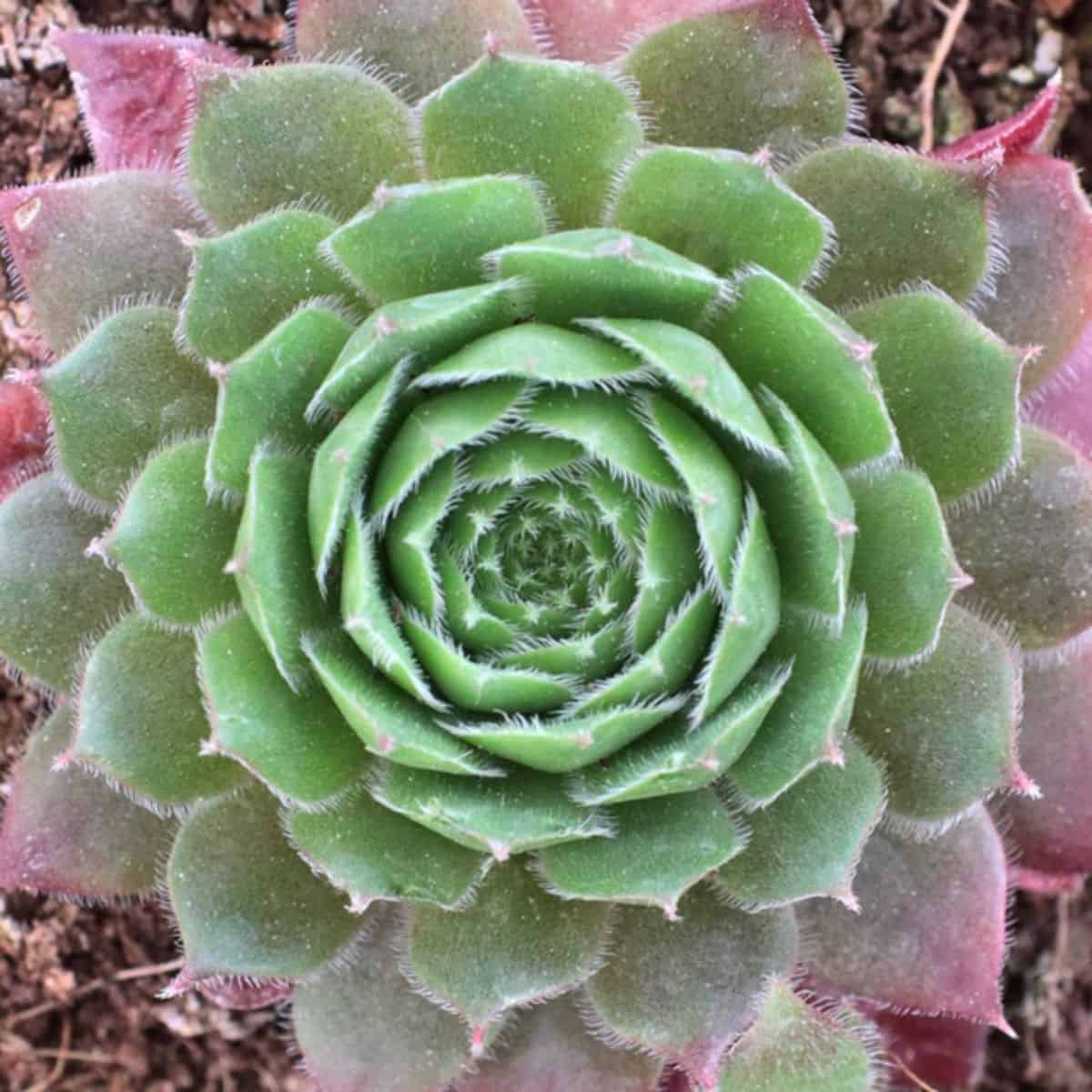
Buy it from:
Hardiness: 5 - 10
Light Requirements: Full indirect sunlight or partial sun
Common Name: Orestes
pittonii x montanum
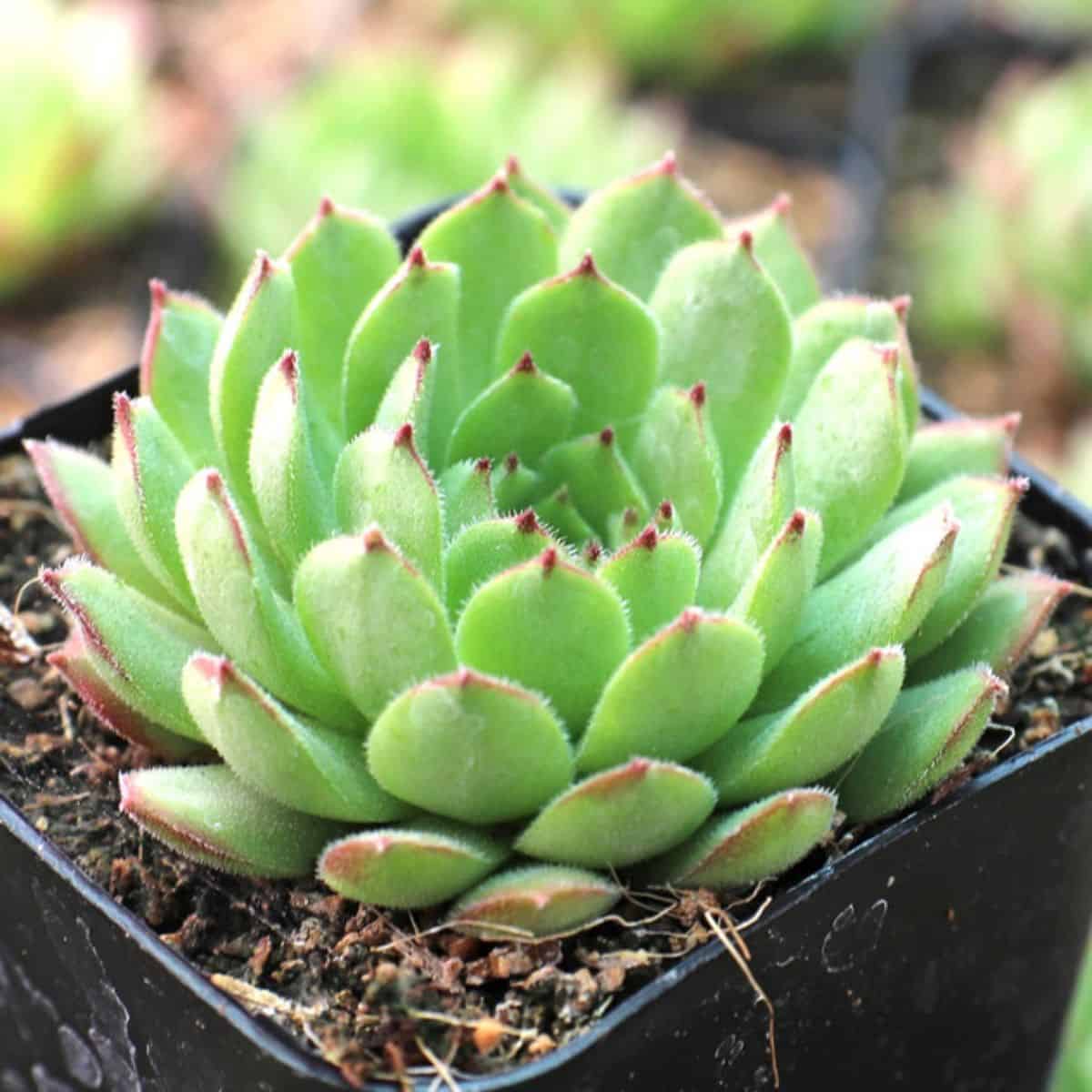
Buy it from:
Hardiness: 5 - 10
Light Requirements: Full indirect sunlight or partial sun
Common Name: None
sp. Nixon
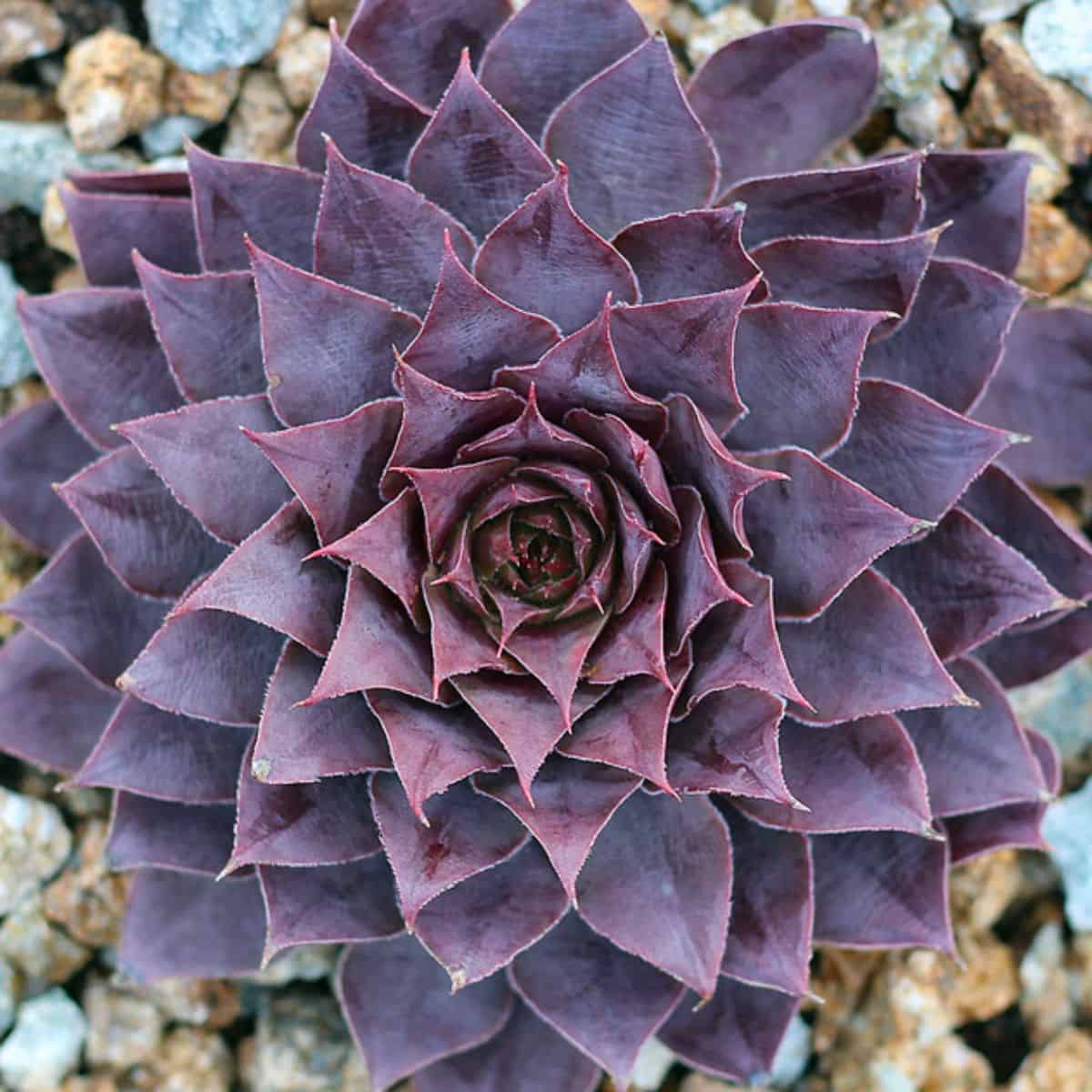
Buy it from:
Hardiness: 5 - 10
Light Requirements: Full indirect sunlight or partial sun
Common Name: Purple Passion
sp. Smits
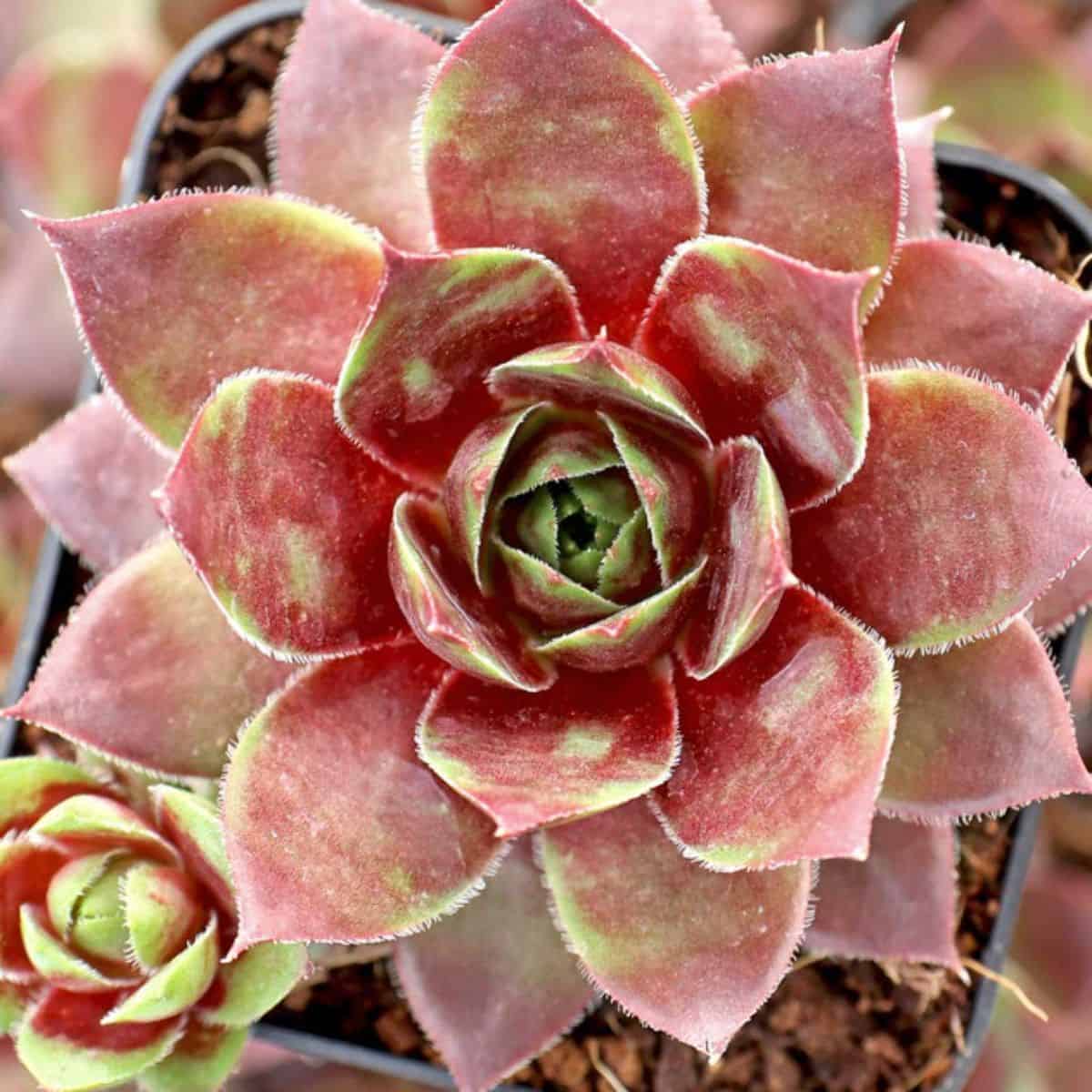
Buy it from:
Hardiness: 5 - 10
Light Requirements: Full indirect sunlight or partial sun
Common Name: Red West
sp. Vaughn
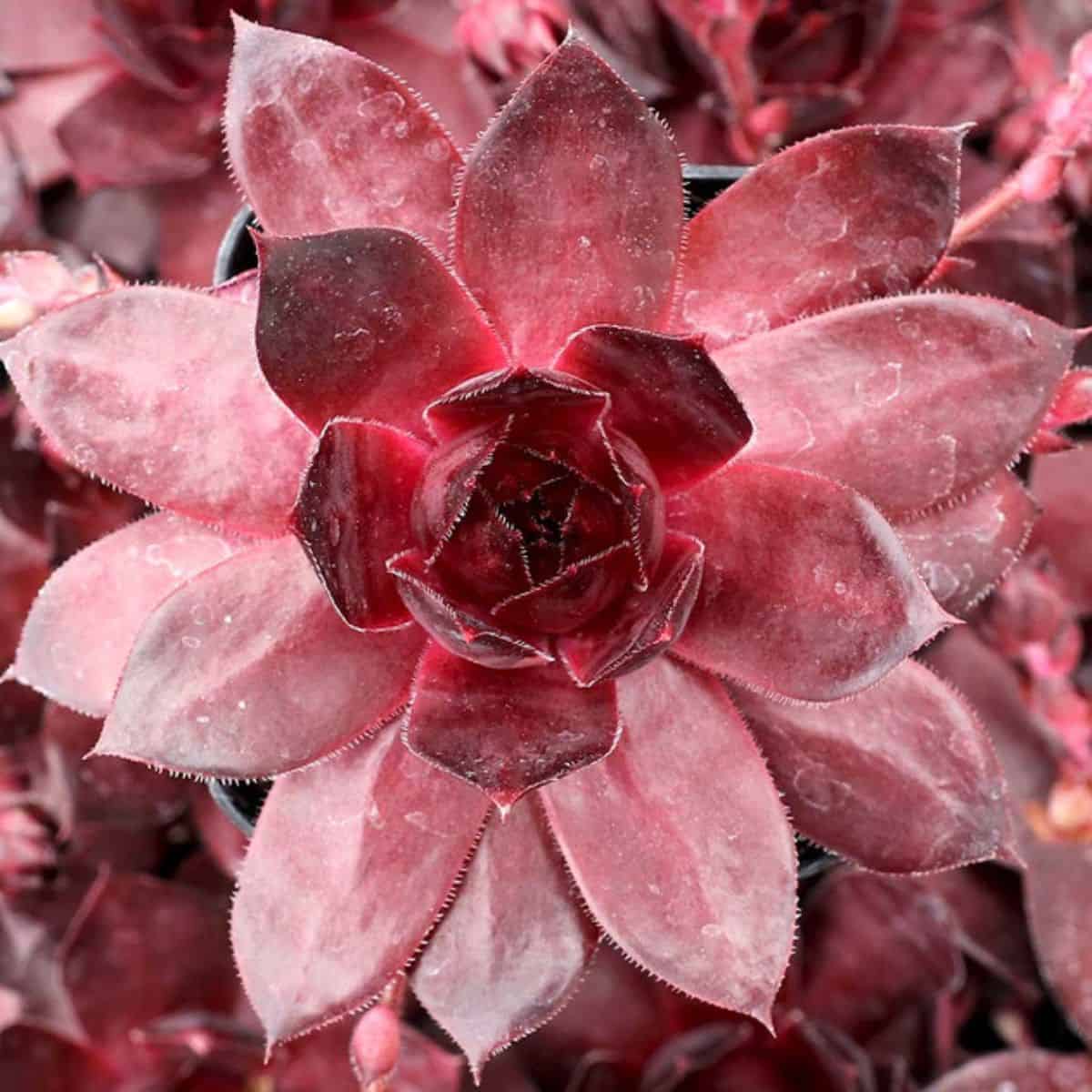
Buy it from:
Hardiness: 5 - 10
Light Requirements: Full indirect sunlight or partial sun
Common Name: Red Zinger
Sp. Van der Steen
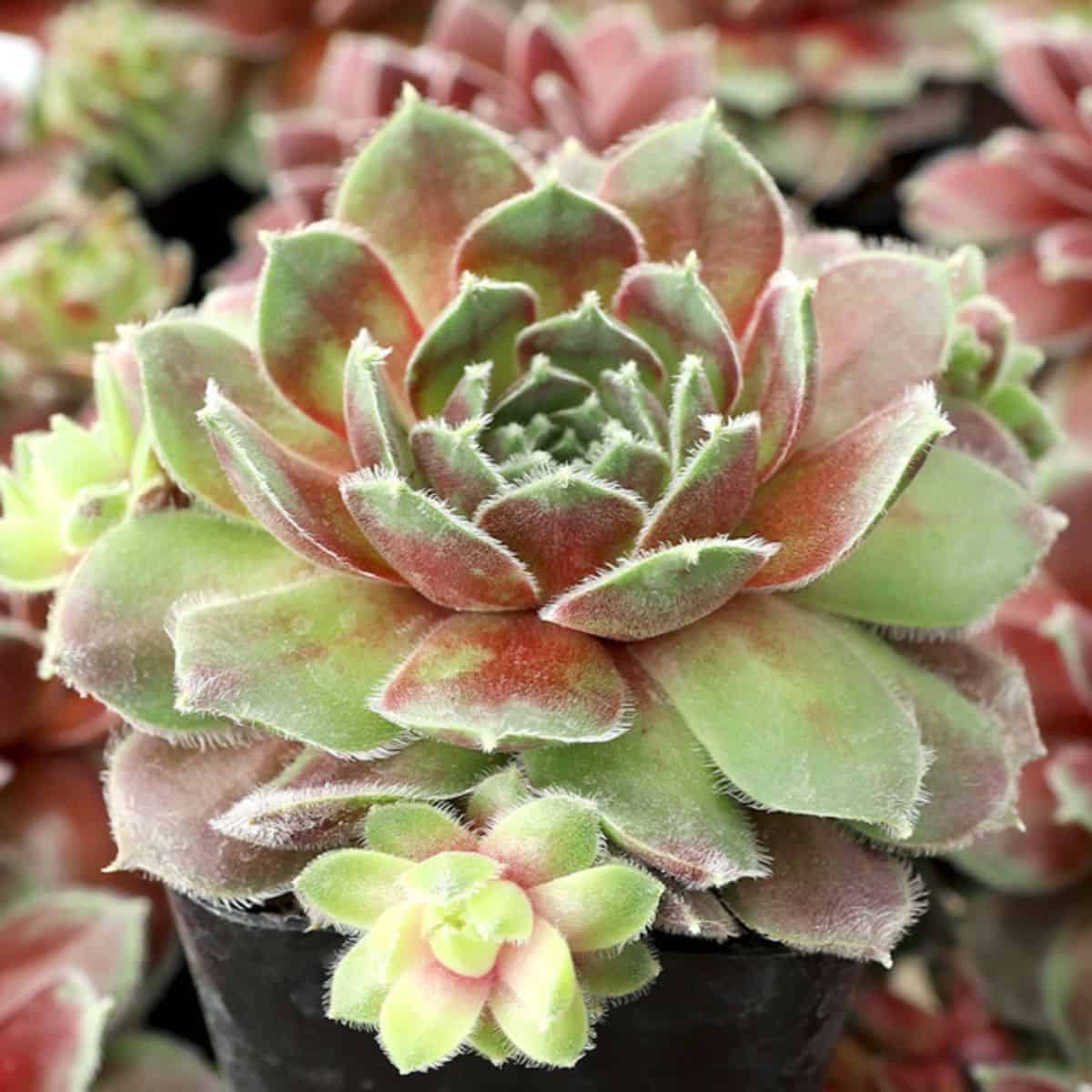
Buy it from:
Hardiness: 5 - 10
Light Requirements: Full indirect sunlight or partial sun
Common Name: Seneca
sp. Bronow
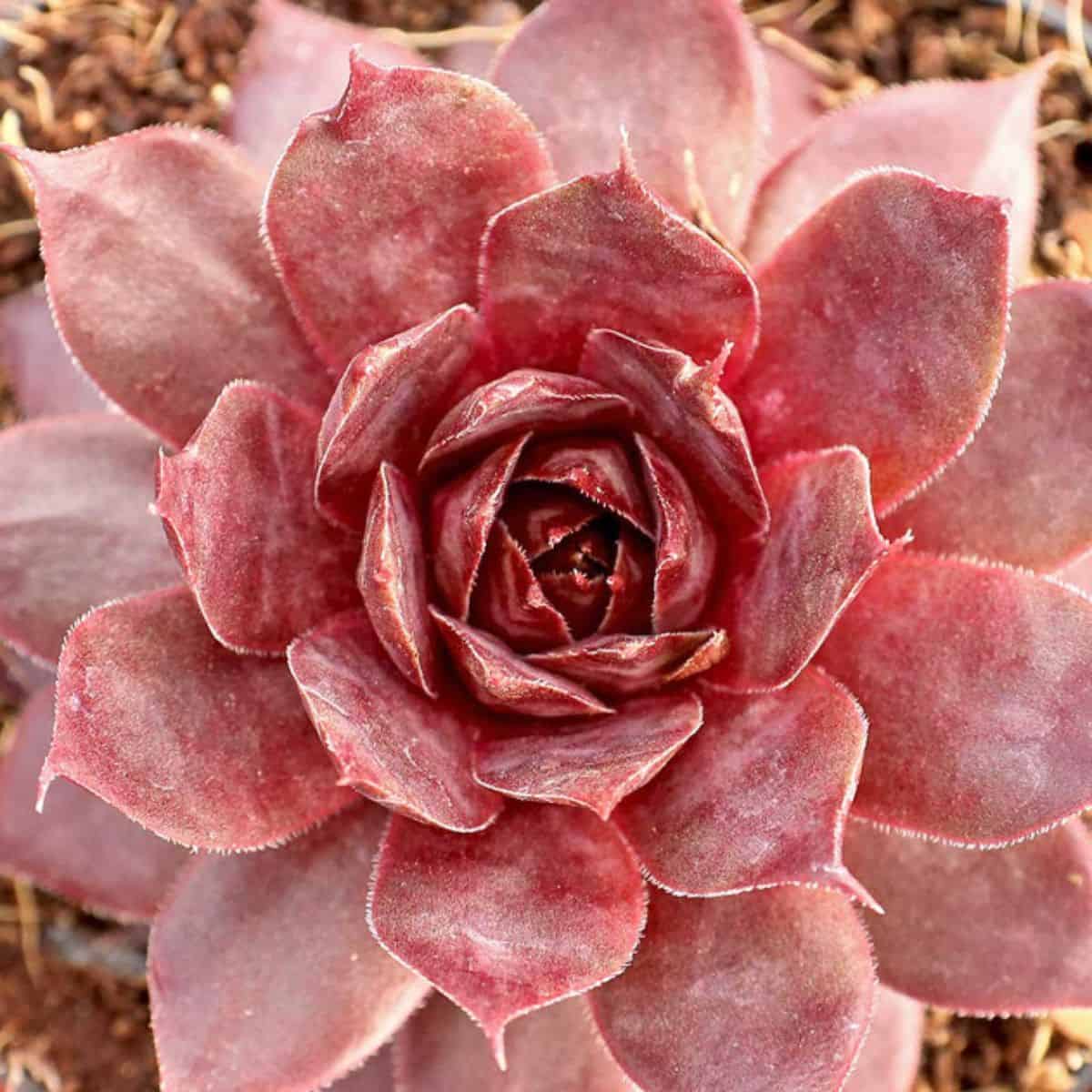
Buy it from:
Hardiness: 5 – 10
Light Requirements: Full indirect sunlight or partial sun
Common Name: Temby
sp. van der Steen
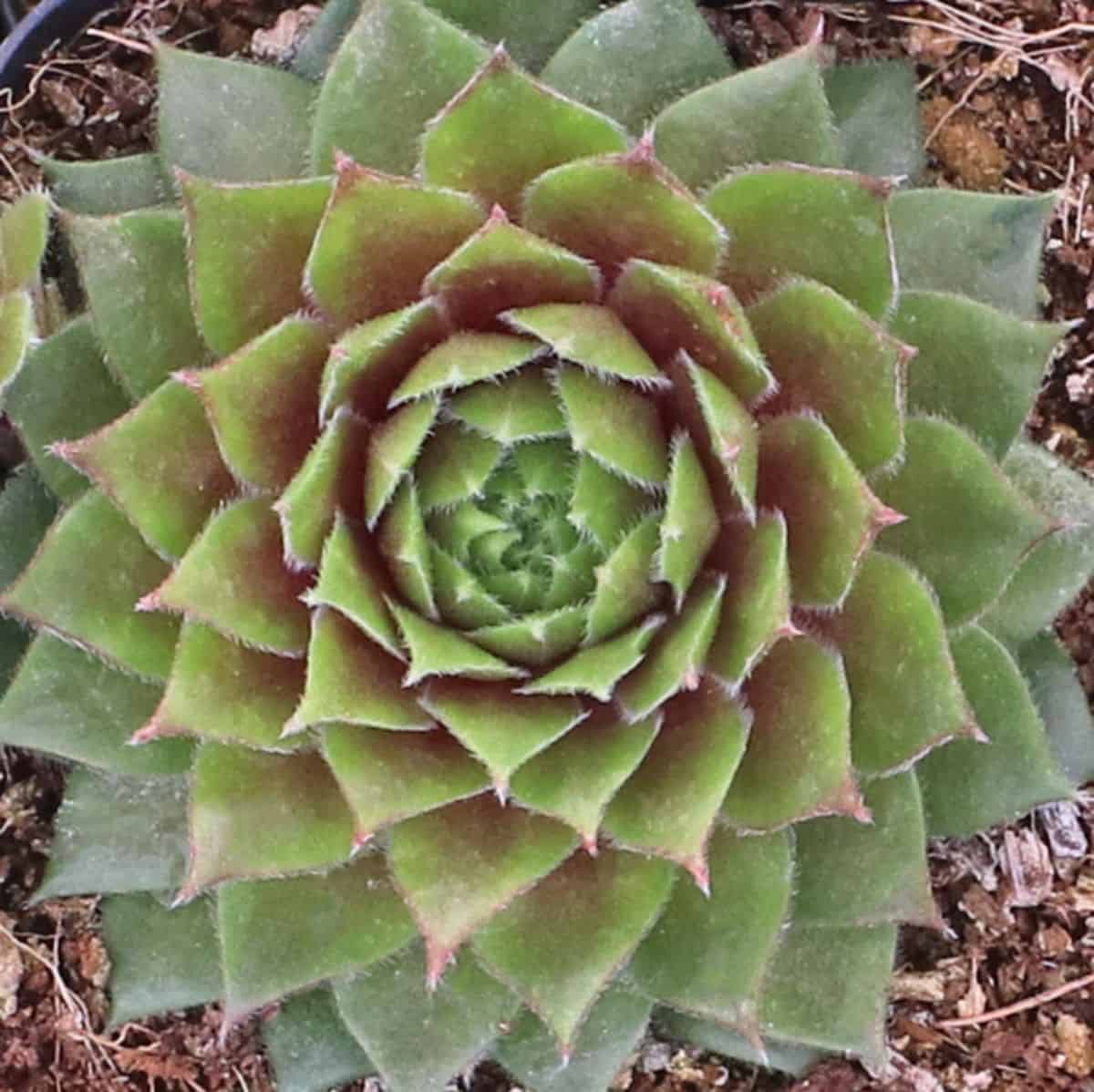
Buy it from:
Hardiness: 5 - 10
Light Requirements: Full indirect sunlight or partial sun
Common Name: Tordeur's Memory
Globiferum ssp. hirtum
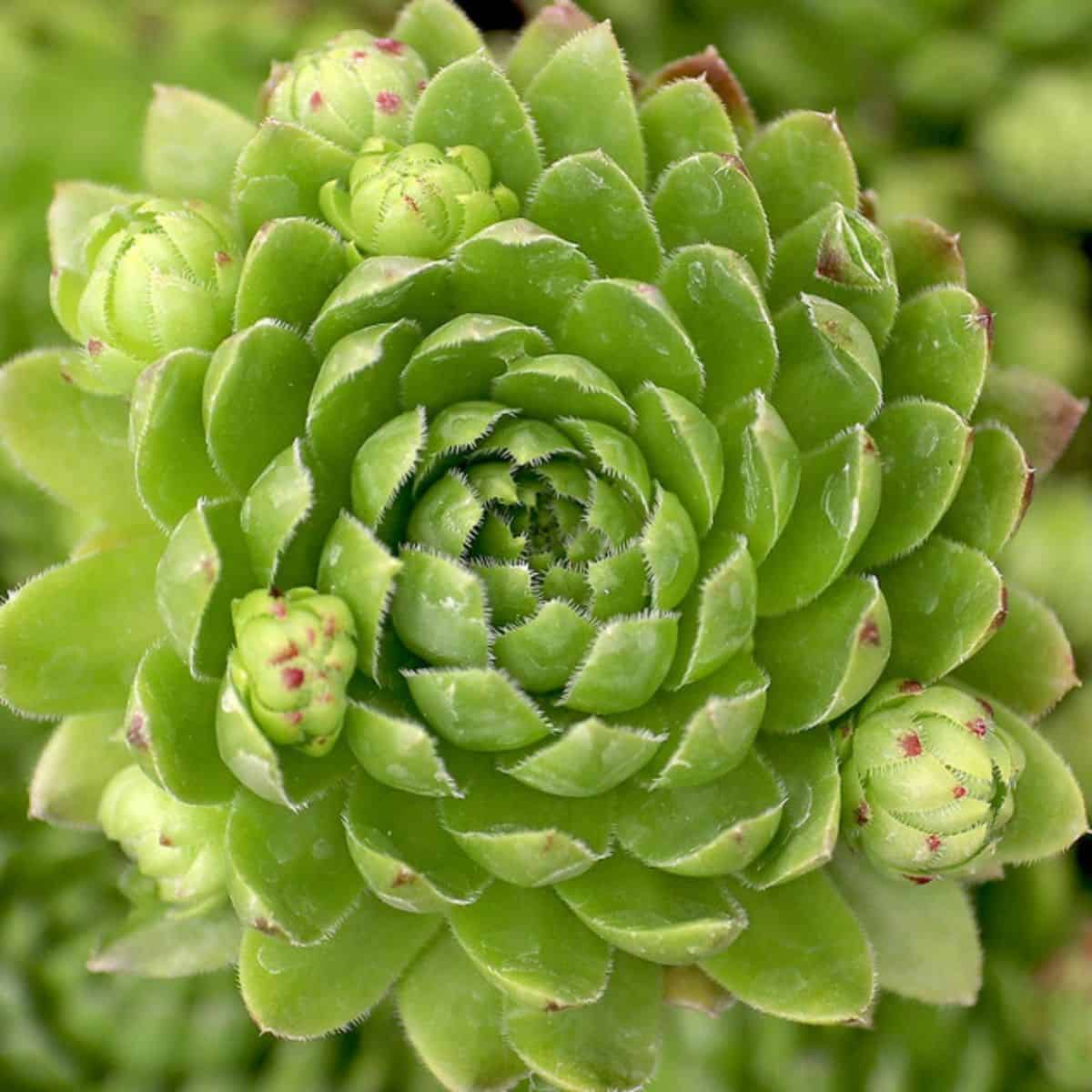
Buy it from:
Hardiness: 5 - 10
Light Requirements: Full indirect sunlight or partial sun
Common Name: White Knight
T
Titanopsis Calcarea
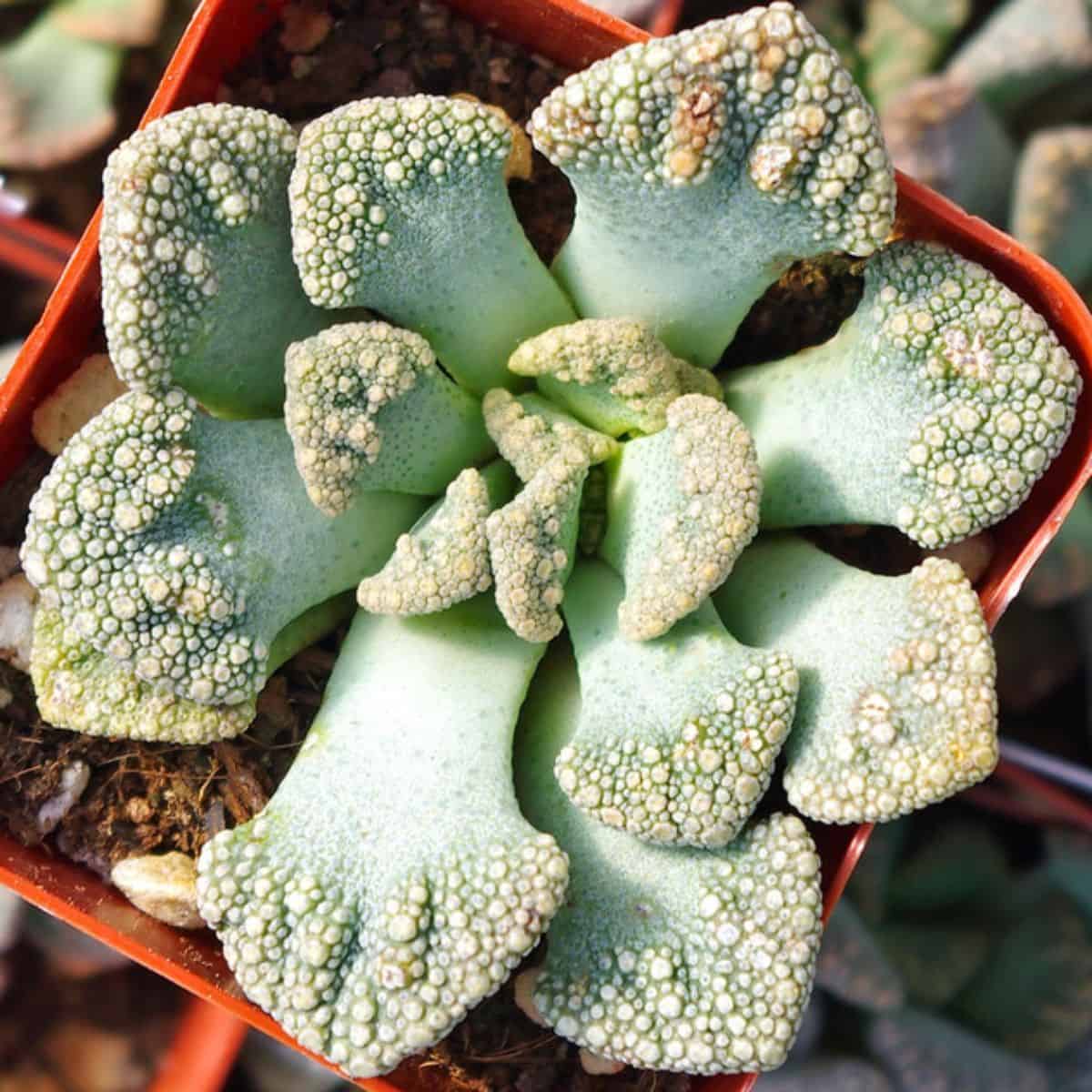
Buy it from:
Hardiness: 10
Light Requirements: Full indirect sun or bright indoor light
Common Name: Concrete Leaf
Dormancy: Winter dormancy
Sempervivum ‘Little Bobo’
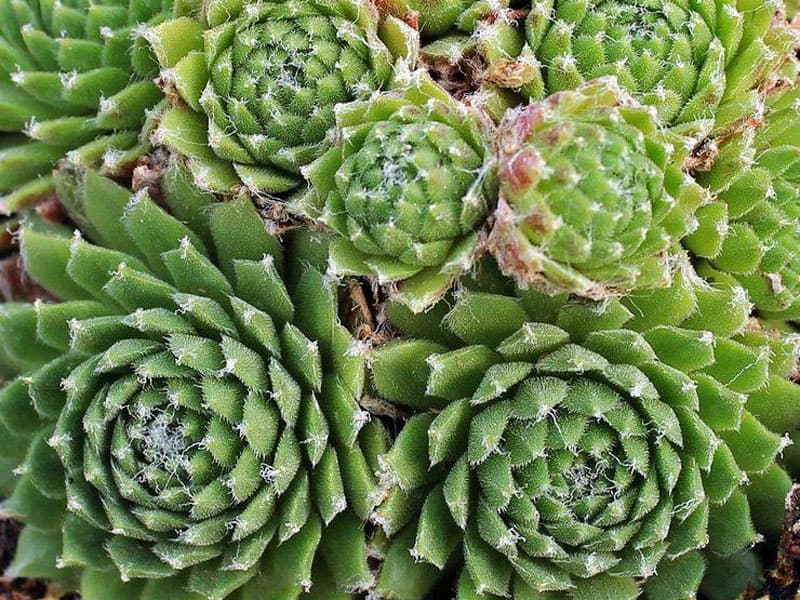
Buy it from:
Little Bobo is a clustering succulent that will stay under three inches in both height and diameter when fully grown. Like most Sempervivum, the vibrant lime green leaves are arranged in a lovely rosette pattern. They make beautiful additions to fairy gardens and vertical succulent gardens.
Sempervivum will thrive in full sun but can survive with partial or filtered sunlight. Unlike many succulents, they can survive not only frost but an entire winter under a blanket of snow. However, they still need adequate drainage and must never be left in standing water to prevent root rot.
No products found.
Kalanchoe pumila ‘Flower Dust Plant’
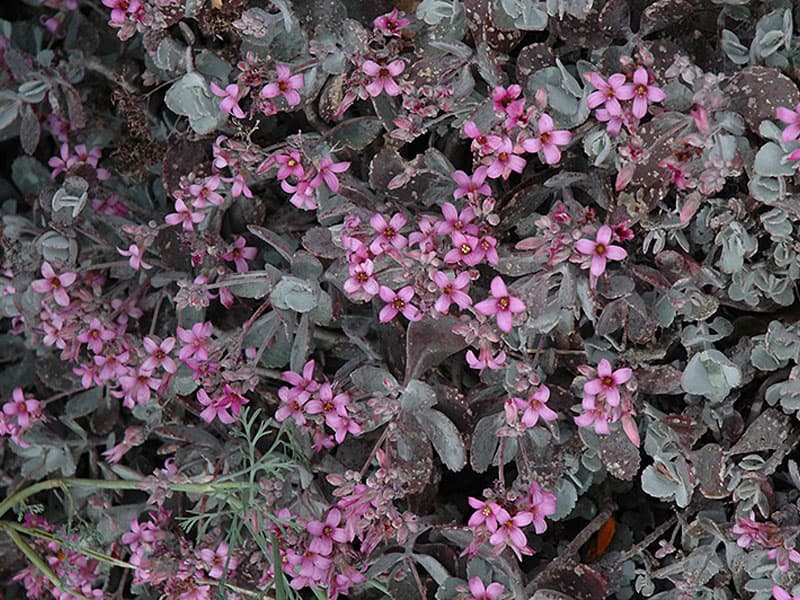
Buy it from:
The Flower Dust Plant is considered to be a dwarf succulent shrub, typically staying under eight inches in height at maturity. Its leaves are flat, broad, and silvery-white in color. Between late winter and early spring, this Kalanchoe produces clusters of petite pink flowers.
Kalanchoe pumila is relatively easy to care for. It requires adequate drainage, infrequent water, and as much sun as possible. This is not a frost-hardy plant, so it must be protected or brought inside during frigid weather. The Flower Dust Plant is perfect for hanging containers or as ground cover if the climate allows.
Crassula ovata ‘Baby Jade’

Buy it from:
Another delicate succulent shrub, Baby Jade typically stays under 24 inches in height, but it can also be trimmed, similar to a bonsai tree, to maintain a smaller stature. Baby Jade is native to southern Africa. Its bright green leaves can turn red around the leaf margins if exposed to enough sun. When blooming, Baby Jade produces clusters of white, star-shaped flowers.
Crassula ovata is a versatile succulent, thriving both indoors and outdoors. It’s easy to care for, making it an excellent choice for inexperienced gardeners. It requires well-draining soil, partial sun, and infrequent water. Although it must be protected from hard frost, it grows well outdoors with minimal care.
Gasteria ‘Little Warty’
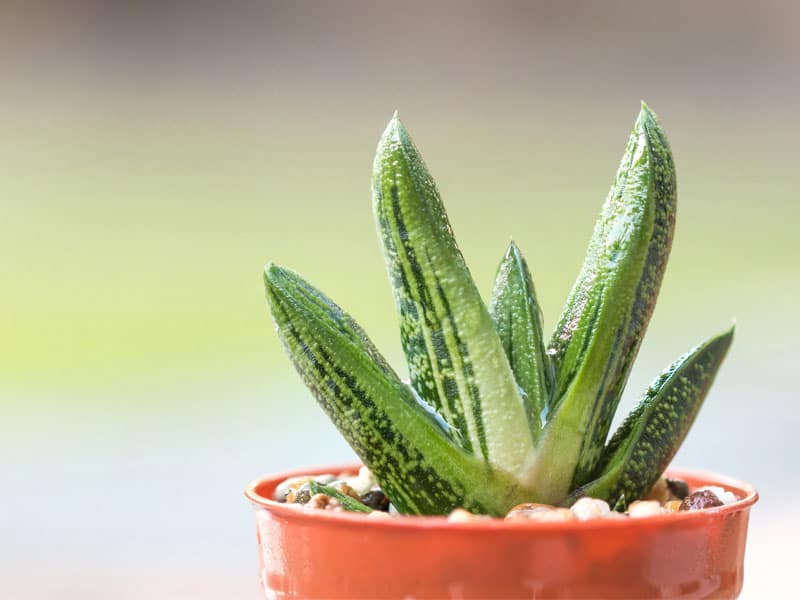
Buy it from:
This gorgeous little succulent is best known for its interesting foliage. Little Warty’s long, tongue-shaped leaves vary in shades of green. The leaves are covered in white speckles and feature a pinkish-bronze hue along the leaf margins. When blooming, this Gasteria produces a stalk covered in slender pink flowers.
Little Warty a popular choice for indoor gardens or succulent collections because of its ability to thrive in low-light environments. Proper drainage and infrequent water are essential in preventing root rot. Not only is Little Warty easy to care for, but it’s also non-toxic to pets. This Gasteria produces numerous offsets, from which it can be propagated.
Miniature succulents and cacti look great in a variety of settings, from fairy gardens to centerpieces. They can add a splash of color or a touch of class to any decor. No matter how much space you have, these nine petite plants are sure to fit. It's the perfect excuse for buying more succulents!
Mini Succulents FAQs
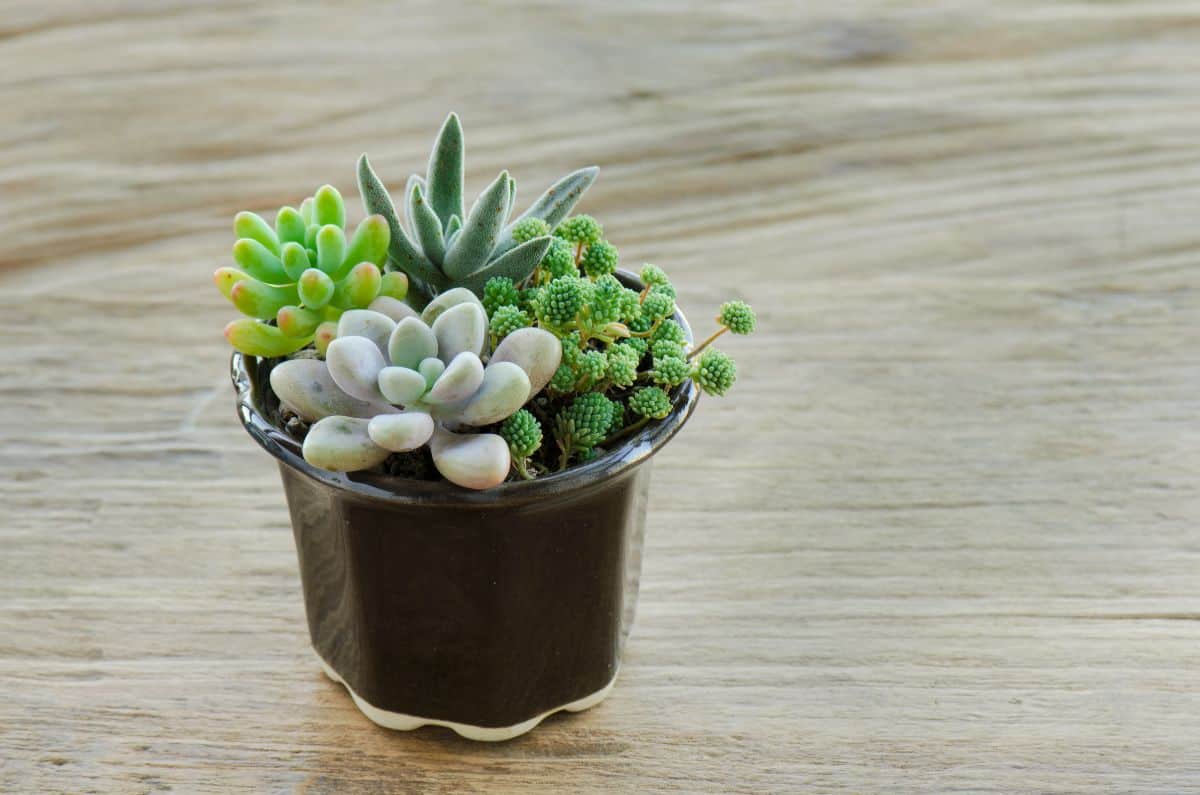
Now it is time to get stuck into some frequently asked questions on small succulents. The wonderful world of succulents can be a complicated place. Although these plants are easy to maintain and require very little tender loving care, we often make the job more complicated than necessary.
The following questions and answers should help you understand mini succulents a little more. Enjoy!
Do Mini Succulents Grow?
Yes, they grow, but they do not grow very quickly. Not all small succulents stay small for long, and some of them even outgrow their containers after just a few months.
What Kind of Succulents Stay Small?
There are a lot of succulent species that stay small if they are kept in the right conditions. Here are a few for you to look at:
Zebra Cactus (Haworthia)
Hen and Chicks (Sempervivum)
Air Plants (Tillandsia sp.)
“Living Stone” Plant (Lithops)
Kalanchoe pumila 'Flower Dust Plant'
Crassula ovata 'Baby Jade'
How Do You Take Care of Mini Succulents?
Mini succulents are very easy to care for. Remember these important factors when caring for your succulent plants:
Water them when the soil is dry
Rotate succulents frequently
Keep them clean
Choose a well-drained container
Remove bugs and treat diseases as soon as you notice them
Use the right soil
How Often Do You Water Mini Succulents?
Mini succulents are just like regular succulent plants. They should only be watered when their soil is completely dry.
Can I Give Mini Succulents as Wedding Favors or as Party Favors?
Yes, mini succulents can be given as wedding and party favors. Gifting your guests with mini succulents is a very unique and thoughtful gift idea.
Do Mini Succulents Need to Stay in Small Pots?
Succulents are living things that are constantly growing and changing. Mini succulents will eventually outgrow their pots, which means you will need to re-pot them in a larger pot to accommodate their growing roots.
Can Every Succulent Type Grow as a Mini Succulent?
No, unfortunately, not every succulent can be kept as a mini succulent. Some succulent types are very fast growers and will not be classed as mini succulents within just a few weeks of growing!
How fast do mini succulents grow?
The average growth rate of most slow-growing varieties of mini succulents is two inches a year when provided with the proper care. In terms of how long it takes for succulent seeds to start germinating or growing, it will take around three days to several weeks. It depends on the specific variety of your mini succulents and your care practices.
How big do mini succulents get?
Most indoor mini succulents that remain small throughout their lives can reach a maximum height of about six inches. That said, some of them can exceed that height when you expose them to more sunlight.
How long do mini succulents live?
Like any other succulents or plants, for that matter, the lifespan of mini succulents will depend on the specific varieties you have and the kind of care you give them. Expect your mini succulent to live from six to eight years with adequate care.
Conclusion
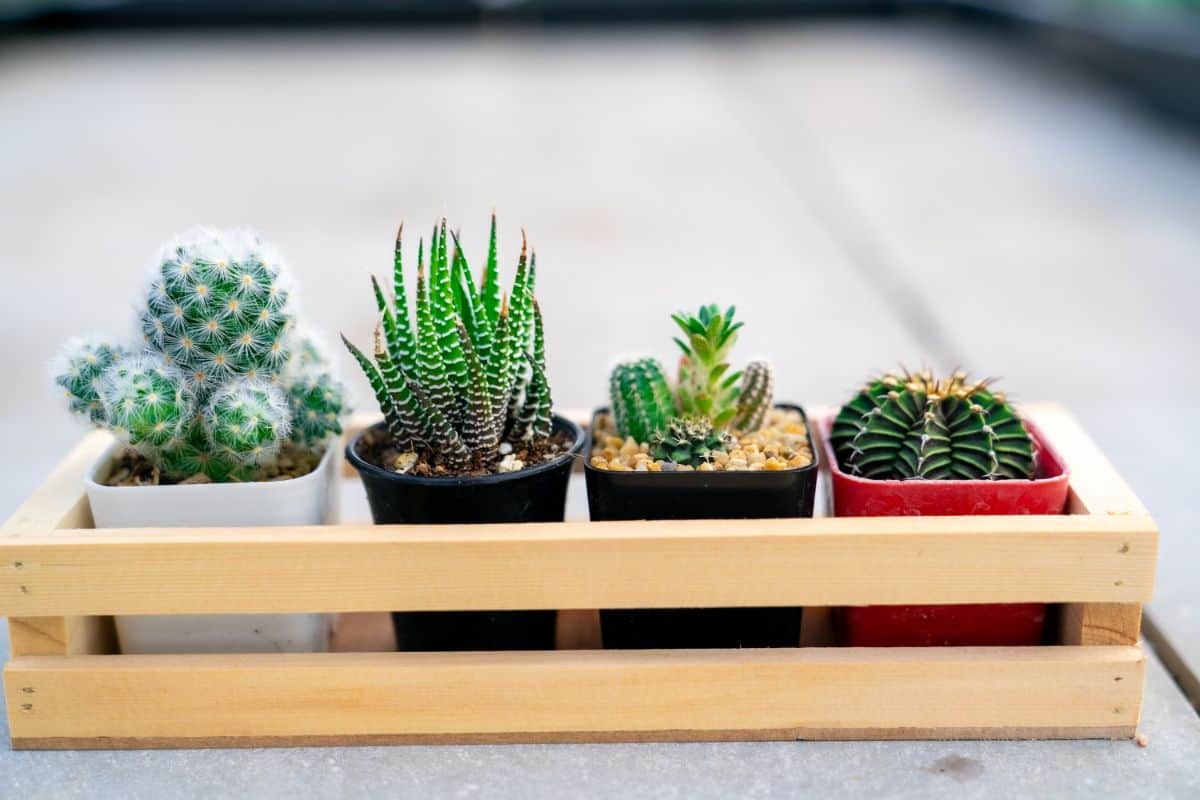
Tiny succulents doesn’t mean that they don’t have big personalities everywhere! Be ready to see more of these mighty minis with small arrangements and maybe even some species highlights. Is there a species you want to learn more about? Comment below!
Whenever you get ready to make your mini succulent pot, keep this list with you so that you can ensure you will have a thriving collection of marvelous minis!



Jean Mangus
I am trying to find out the name of this very odd looking succulent. It is a little fussy, but it has little pointed at both ends pod-like middle. Eventually, each shrivels up and drops off leaving the rest of the stem with nothing on it. It is difficult to propagate, but I keep trying.
Maybe you could suggest a website to look at or a book.
Thanks for your help.
Patrick Grubbs
Hmm, it doesn't sound too familiar. Maybe a Sedum of some sort? WorldofSucculents.com has a really great database you could try. Good luck!